

18 of the Best Places to Visit in Piedmont, Northern Italy
When the best places to visit in Piedmont, Italy, include impressive Baroque royal residences, medieval towns, wine regions, scenic valleys, lakes, and surprisingly fascinating cities, you know you’re in for a treat.
Although it’s Italy’s second-largest region (after Sicily), Piedmont ( Piemonte in Italian) still doesn’t get the focus it deserves, and I’m hoping to change that.
So without further ado, here are some of the best Piedmontese destinations to inspire your next trip.
* This post may contain affiliate links from which I earn a commission (for more info, read my disclosure ). As an Amazon Associate, I earn from qualifying purchases.
* I try to keep the information on this blog as updated as possible, but I still recommend consulting the latest prices, opening hours, and other details on the official website of each site, hotel, and tour, as well as checking the updated public transport routes and timetables.
*As a partner of the Get Your Guide affiliate program, I got a 15% discount when I purchased my Torino+Piemonte Card . That said, I always share my honest opinions.
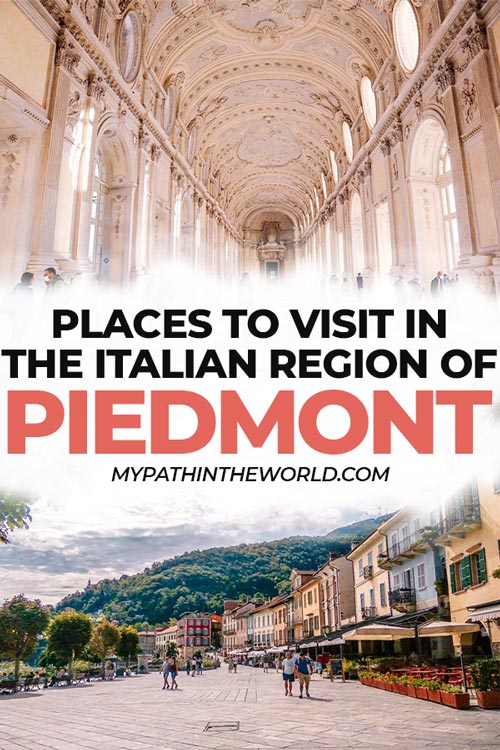
Table of Contents
What Is Piedmont Known For? Why Should You Visit?
Piedmont is situated in northwest Italy and shares borders with both Switzerland and France.
Known for its wines, comfort food, truffles, chocolate, rolling hill views, Alpine scenery, and UNESCO-listed royal residences, Piedmont is a big, fascinating region yet an underrated one.
If you love discovering hidden gems as much as I do, it will not disappoint.
How to Visit Many of Piedmont’s Tourist Attractions for Free – Torino+Piemonte Card
Allowing you to enter dozens of attractions in Piedmont for FREE and offering plenty of other discounts, the Torino+Piemonte Card can save you a lot of money.
Whether you’re spending a couple of days in Turin or taking a road trip through the region, the 2,3, or 5-day card will be handy.
Most of the palaces and museums cost 10-15 euros to visit, and the card’s price is reasonable enough that there’s no reason why you wouldn’t save money with it.
See the full list of discounts here and buy your Torino+Piemonte Card here (you can easily pick it up at the information center at Piazza Castello in Turin).
18 of the Best Places to Visit in Piedmont, Italy
Turin, the region’s capital, is a wonderful city break destination in Piedmont.
Despite being the 4th-largest Italian city and offering dozens of things to do and see , it has yet to be discovered by international travelers (so book a flight now!).
The entire region is home to palaces and villas recognized as a UNESCO World Heritage Site – the Residences of the Royal House of Savoy.
And since Turin was the capital city of several kingdoms ruled by the Savoy family, quite a few of these residences are found in the historic center.
Amongst them are the Palazzo Reale, Palazzo Madama, and Palazzo Carignano, and you can also visit the hilltop Villa della Regina, which overlooks Turin from the eastern side of the Po river.
Other must-see places in the city include the National Museum of Cinema (housed in the iconic Mole Antonelliana building), Valentino Park, Porta Palazzo market, and the Egyptian Museum, but that’s just the tip of the iceberg.
If you need more reasons to visit Turin , the elegant city is also the Italian capital of chocolate , home to incredible historic cafes , the birthplace of the aperitivo tradition, and a great place to indulge in exquisite Piedmontese food.
Tip: Most attractions can be visited for free with the Torino+Piemonte Card .
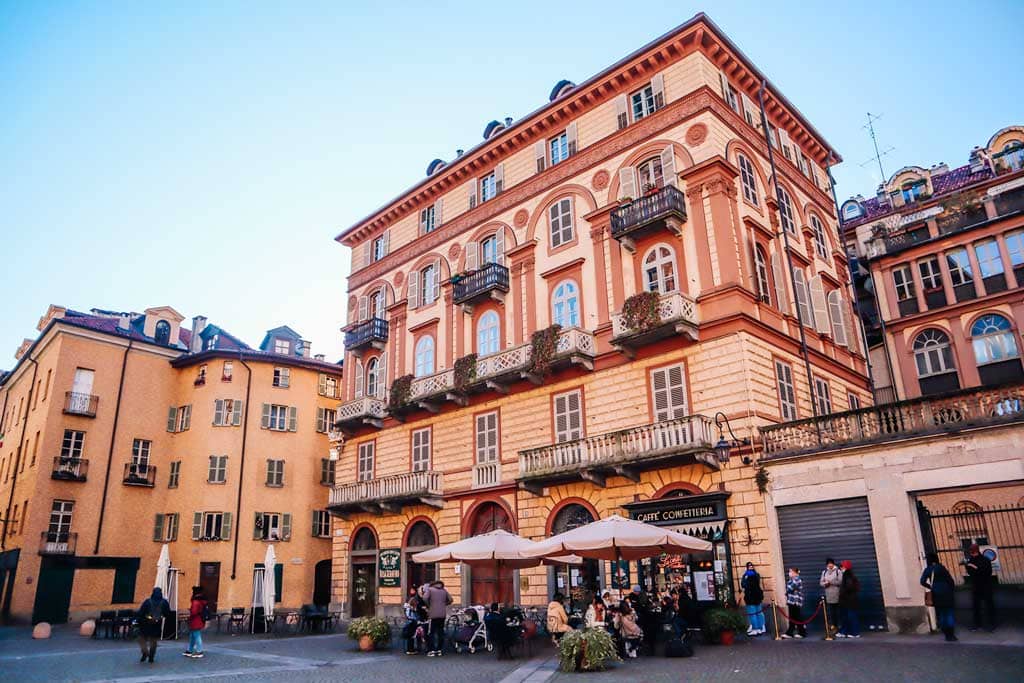
- Turin travel tips
- Long weekend in Turin
- Where to stay in Turin
- Turin in winter
- Hidden gems in Turin
- Turin or Milan
- Turin is also an amazing European girls’ trip destination
By Lori from Italy Foodies
The ancient city of Alba is a favorite place to visit in Piedmont, particularly for lovers of good food and wine. The small city has around 30,000 residents and is wonderfully walkable in just a few days.
Streets in Alba’s historic center are lined with unique shops and eateries and surprisingly dotted with enough amazing Roman ruins to keep any casual archeology fan fascinated. But for foodies, this is a special city known for food and wine that’s extraordinary.
Barolo and Barbaresco dominate the local wines in Piedmont, but the one food for which Alba is renowned throughout the world is the distinctive Italian truffles that abound.
While both white and black truffles grow in the region, the heady Alba white truffle is highly prized and draws visitors by the tens of thousands every year to the Alba White Truffle Fair.
For several weekends, the earthy white and black truffles are celebrated with parades and a full slate of competitions and exhibitions. The truffle market is a sight to see, with the weightier morsels worth thousands of dollars garnering recognition and ribbons.
The best time of year to visit Alba is in the early fall if you want to avoid the crowds and still enjoy the beautiful weather. In fact, the city is one of the best places to visit in October in northern Italy .
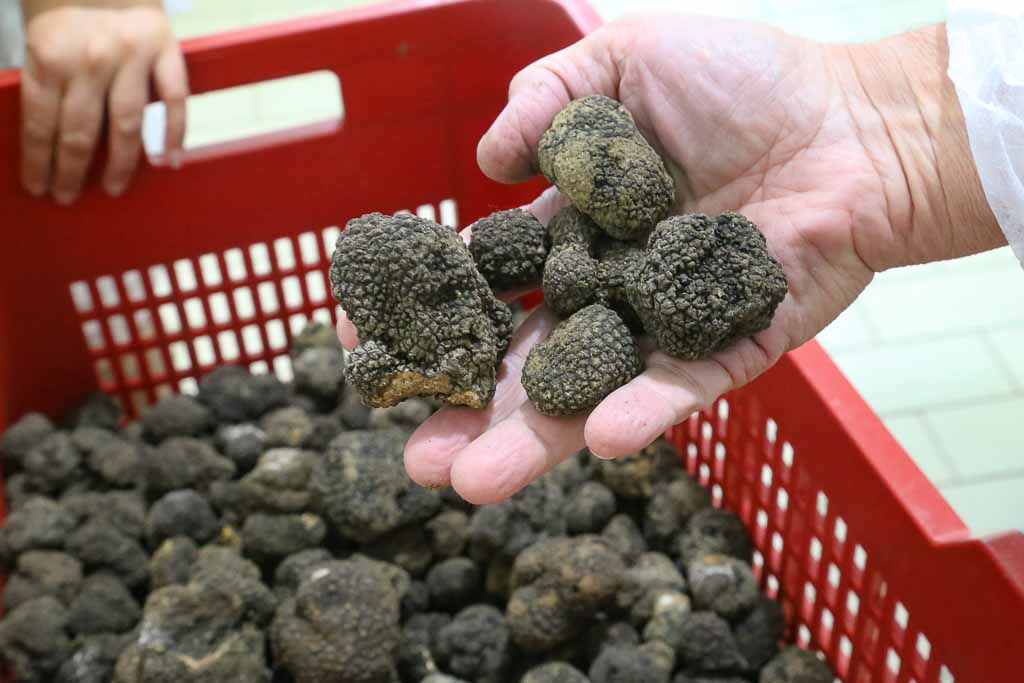
Venaria Reale
If you’re looking for beautiful places near Turin, Venaria Reale has to be on your bucket list.
Home to one of the most remarkable UNESCO-listed Savoy residences in Piedmont, the town is conveniently reachable by bus number 11 from Turin.
The Palace of Venaria (Reggia di Venaria Reale) was commissioned by Duke Carlo Emanuele II in the 17th century and served as a base for his hunting trips.
The Baroque-style landmark makes an impression on the inside and out, and the Alpine setting and beautiful gardens are a huge bonus.
Behind it, you’ll also find La Mandria Park and the Castle of La Mandria, which also belonged to the House of Savoy. You can buy a combo ticket to see both palaces or visit just one, but you must book your tickets in advance .
Both places are free to explore with the Torino+Piemonte Card (when booking your ticket, you can mark that you have purchased the city card).
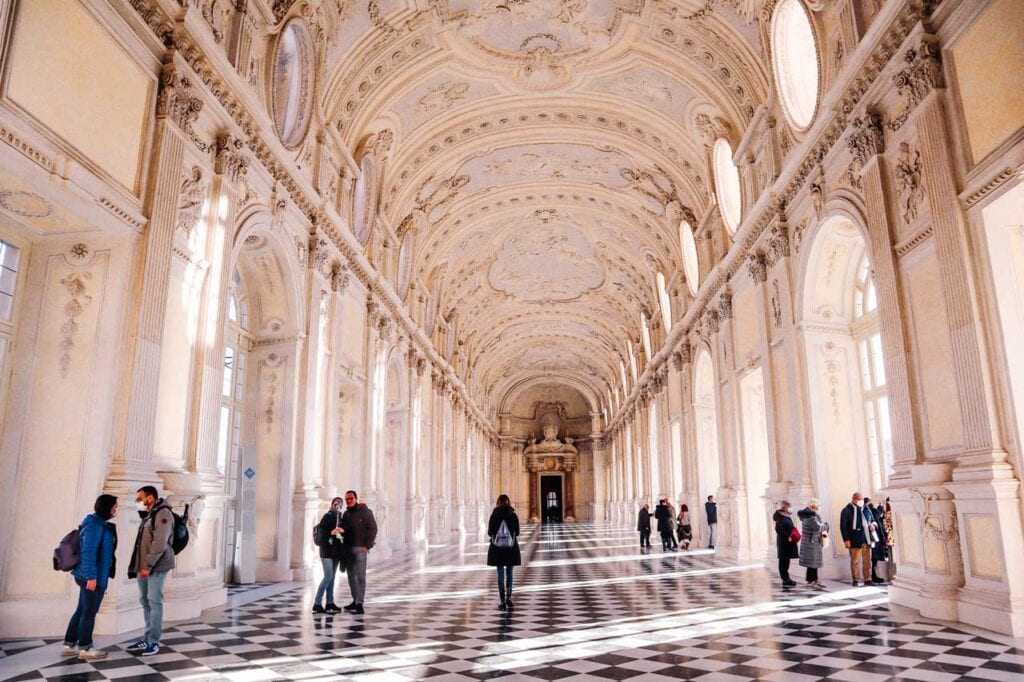
Another UNESCO-listed Savoy residence located only a few km away from Turin is the Palazzina di Caccia di Stupinigi.
Boasting a mix of Baroque and Italian Rococo architectural styles, this stunning 18th-century royal hunting lodge & leisure palace was commissioned by Duke Victor Amadeus II and designed by Filippo Juvarra.
From its outer facade to the central hall to the apartments of the Duke of Chiablese, every corner here is exquisitely decored and embellished with the most amazing details, some of which are inspired by nature.
You can visit the palace for free with the Torino+Piemonte Card , and you don’t have to buy your tickets in advance (in fact, an online reservation is more expensive).

Basilica DI Superga
By Angela from Fearlessly Italy
Northeast of Turin, the Basilica of Superga is a pearl of the Italian Baroque.
Steeped in history, the church is located almost 700 meters above sea level, and on clear days you can enjoy a beautiful view of the city.
A project by Sicilian architect Filippo Juvarra, the building of Superga Basilica was ordered by Duke Vittorio Amedeo II following a vow to the Virgin Mary that, in case of victory, he would have built a church from the same hill where he and his army settled to observe the invading French army.
Inaugurated in 1731, the Basilica is 75-meter tall, and inside, it counts six side chapels, five altars, and a rich collection of artwork.
Next to the church is the complex of the royal tombs and apartments that belonged once to the Savoys, Italy’s former royal family.
This can be visited with an interesting tour (in Italian) that explains the facts about the construction of the Basilica and modern Italian history.
To reach the Basilica of Superga from the city center, take a bus or a tram to the Sassi station, and from here, take a 20-minute train ride up the hill. You can visit it for free with the Torino+Piemonte Card .
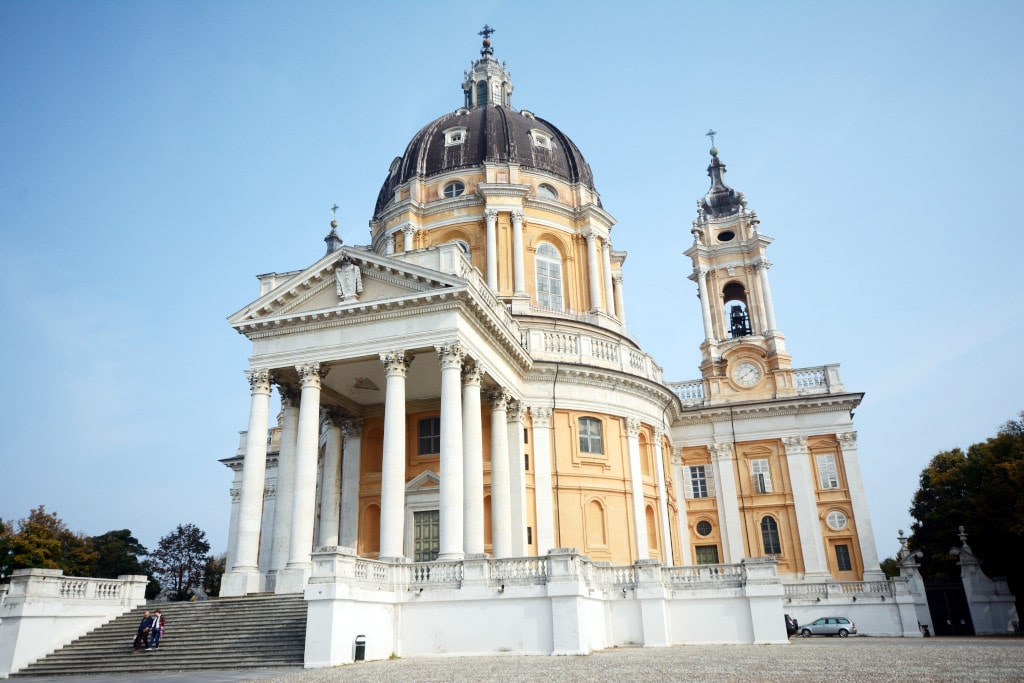
Sacra DI San Michele
By Linda from Insieme Piemonte
Located only 40 km away from Turin, high above the entrance to Val di Susa, the impressive Sacra di San Michele is definitely one of the best places to visit in the Piedmont region.
Built between 983 and 987, that ancient abbey inspired Umberto Eco to conceive the world-famous novel “The Name of the Rose”. Nowadays, it is one of the symbols of the Piedmont Region.
The self-guided tour through the gigantic walls and well-preserved history is absolutely worth the €8 entrance fee. Via the “stairways of the dead,” you will reach the 12th-century church.
Several members of the Savoy, one of the oldest royal families in the world, are buried here. From the ruins of the Tower of Bell’Alda, you will be able to see the city of Turin, if the weather permits.
Along the tour, you will have the chance to enjoy fantastic views of the Susa Valley and the alpine mountain peaks of Italy, France, and Switzerland. The Sacra di San Michele can be reached by car, bus, or via some great hiking trails.

Stresa and the Borromean Islands
Owned by the aristocratic Borromeo family since the 16th century, the Borromean Islands are a group of islands and islets situated in Lake Maggiore, a short boat ride away from the city of Stresa.
Open to the public from mid-March to October, you can visit Isola Bella and Isola Madre, home to stunning palaces and landscaped gardens dating back to the 16th-17th centuries.
You can also wander through the cobbled alleys of the only inhabited Borromean island, Isola dei Pescatori (or Isola Superiore).
Getting there: You can either book a hop-on hop-off boat tour (that doesn’t include tickets to the palaces), book a package of a boat transfer + entrance to the palaces , or purchase ferry tickets directly at Stresa’s ferry terminal (like I did) and get your palace tickets on the islands.
When you’re done exploring the islands, enjoy strolling through the lovely streets of Stresa. Not too far from the city, you can also head to the jaw-dropping Botanical Gardens of Villa Taranto.

While you won’t have much sightseeing to do in Cannobio, it’s still one of the loveliest towns on Lake Maggiore, sitting near Italy’s border with Switzerland.
Its first documented mention dates to the early Middle Ages, but archeological finds in the area suggest it was already inhabited during Roman times.
You can check out Cannobio’s churches and enjoy its Sunday market, but its true charm is revealed when you walk freely along the promenade and through its streets and alleys.
Cafes and restaurants line the waterfront, and what’s better than grabbing a cup of coffee or lunch while taking in the lake views?
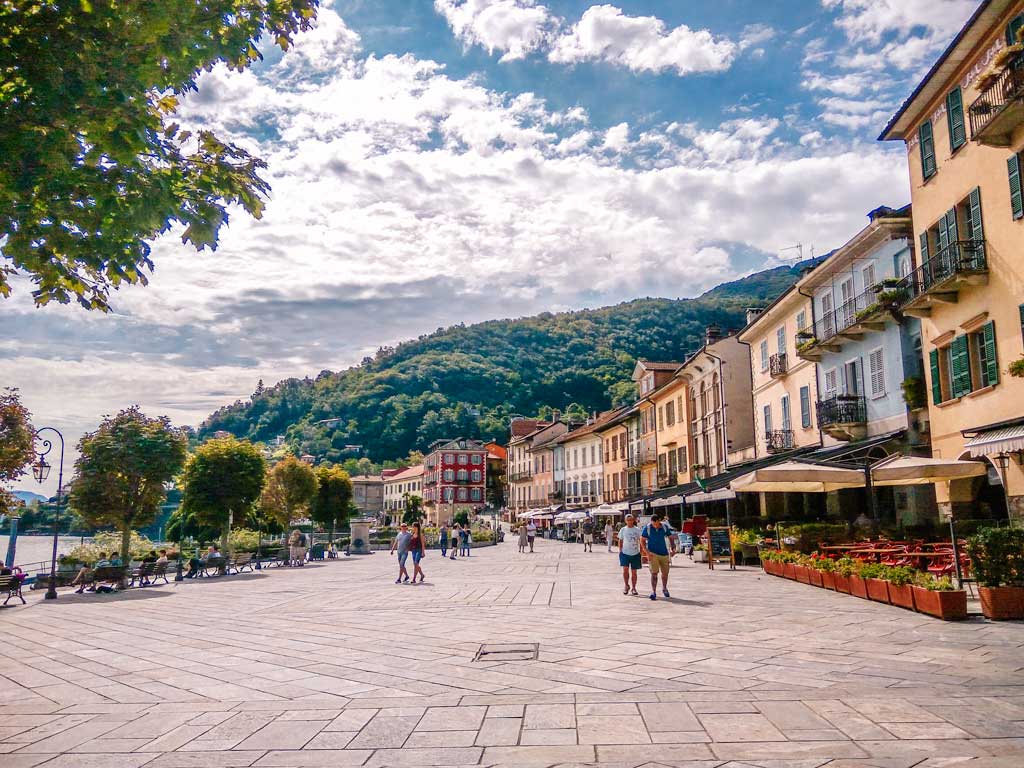
Lake Orta sometimes gets overlooked by travelers planning a trip through northern Italy’s lakes , though it’s one of the most beautiful and best places in Piedmont to visit.
What it lacks in size, it makes up for in beauty, and a day should be enough to visit a few of its tiny yet beautiful towns, including Orta San Giulio, Pella, and Omegna.
From Orta San Giulio, you can also take a short boat ride to the picturesque Isola San Giulio, a small islet in the lake mostly known for housing the 12th-century Basilica di San Giulio.
Barolo and Its Castle
By Larch from The Silver Nomad
Rising above the small village of Barolo in the Langhe wine region, the ancient Barolo Castle dates back to the 10th century.
Originally a fortified castle, it was taken over by the Falletti family in around 1250. The family made changes and reconstructed the castle, which had been damaged in the wars. Ultimately, in the 1800s, it became a country retreat for the Falletti family.
After the death of the last Falletti heir in 1864, it became a college for poorer students in the area.
The castle became abandoned in the 20th century and was bought by the Township of Barolo and restored. Since 2010, the castle has housed the Wine Museum of Barolo – WiMu (free to visit with the Torino+Piemonte Card ).
The museum has an interactive route through the five floors of the castle. The tour aims to take you through a sensory journey.
Each floor has a different theme – nature, the arts, restored rooms as used by the Falletti family, and the Barolo College. When you get to the top floor, you can step out onto the balcony to see the rolling green hillsides covered in vines.
To round off your tour, you have to try some magnificent Barolo wines. You can book a guided wine tour with tastings in the nearby area.

Forte DI Fenestrelle
By Linda from Hiking the Alps
The impressive Fenestrelle Fort is located in the middle of the beautiful Val Chisone, 85 km west of Turin. You can already see the massive fortification from far when traveling through the narrow valley.
Fenestrelle Fort actually consists of 3 individual forts connected by a 3-km-long wall along the mountain ridge. Built within that wall is the famous, world-longest “covered staircase” with 4000 steps.
It connects Fort San Carlo in the valley and Fort delle Valli at 1800 meters above sea level, which have more than 600 meters of height difference.
Starting in 1728, it took 122 years to build the largest Alpine fortress in Europe. The powerful fortification, which was built to defend against foreign invasions, was mostly used as a garrison and prison.
After WWII, the fort lost its purpose and was abandoned. Today, you can visit that outstanding construction with guided tours (only in the Italian language). It is free to visit with the Torino+Piemonte Card .
To make the most of your visit, you should also hike along the Fort’s massive walls . In this way, you can really experience and appreciate the dimension of that stunning building.

Val Pellice
The beautiful green Val Pellice is located approx. 40 km southwest of Turin. It does have a length of 30 km and is one of the only Italian Alps valleys without a street connection to its French neighbors.
Val Pellice, along with the two adjoining valleys, Val Germanasca and the lower Val Chisone, are commonly called “Waldensian valleys”.
Those valleys served as retreats in the 13th-19th centuries for Waldensians from France in order to preserve their religious faith. The village of Torre Pellice was and still is their main center. You will find Waldensian Temples everywhere in the valley.
Among the most significant monuments of Torre Pellice are the Foresteria, the museum with its extensive historical and ethnographic documentation, and the Casa Valdese, where over 50,000 books are kept (some of which are very rare, such as the valuable Olivetano Bible of 1535).
Apart from its rich history, Val Pellice has beautiful nature with great options for outdoor sports. It combines a fascinating landscape and is rich in vegetation.
In Bobbio Pellice, at the end of the valley, hikers and mountain bikers start their day trips to nearby France or into the surrounding chestnut forests.
Located at 2,290 meters above sea level, in Alta Val Pellice, you can also visit one of the highest botanical gardens in Europe.
Additionally, the Pellice River, crossing the entire valley, offers numerous possibilities for kayaking and rafting.
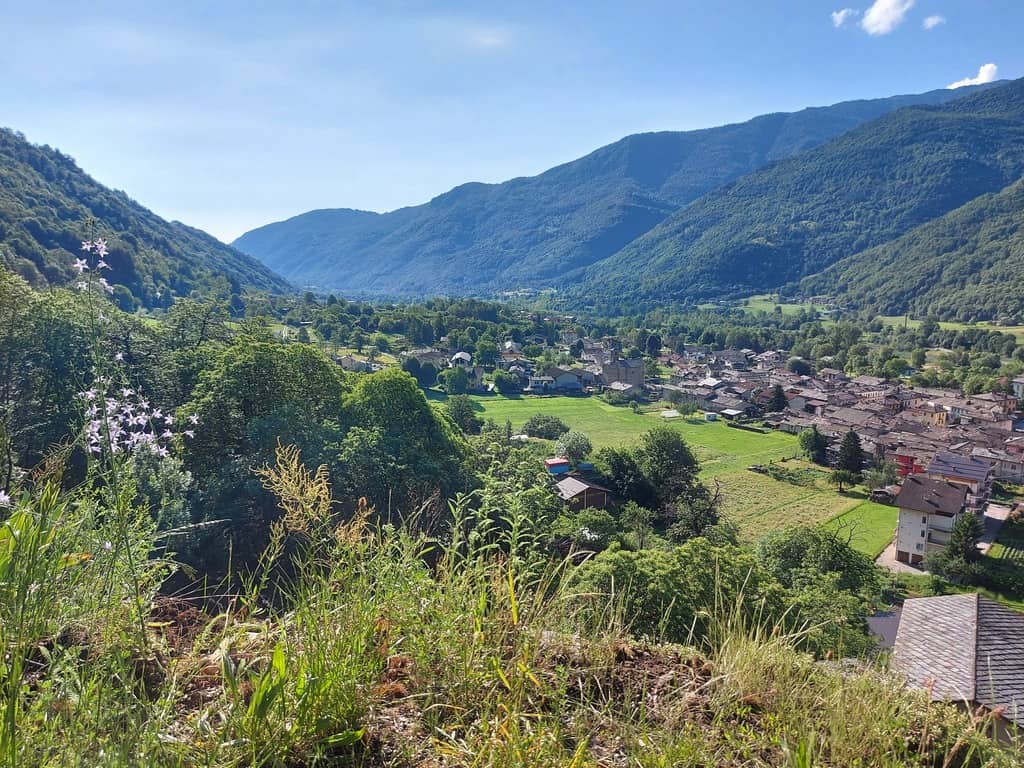
In the province of Cuneo, you’ll find the town of Bra, the birthplace of the Slow Food movement.
This organization, which has spread worldwide, promotes an eco-sustainable approach to food, including the preservation of traditional cooking, the use of local products, accessible prices for consumers, and more.
Slow Food also organizes the annual Cheese Festival in Bra, which hosts cheese producers from all over the world and is dedicated to raw milk cheeses.
The town itself might not pack a punch like other small towns in Piedmont, but it’s a fantastic place to relish regional dishes.
Within a short drive/bus ride, you can also get to the Royal Castle of Pollenzo, one of the residences of the House of Savoy.
If you’re looking for the best cities in Piedmont to visit beyond Turin, add Asti to your list.
While the area has been inhabited since before Roman times, it was in the 12th-13th centuries that Asti became one of the richest, most powerful independent cities in Italy.
Many of its medieval landmarks are still standing today, including the Romanesque-Gothic-style Asti Cathedral, several palazzos, Collegiata di San Secondo, and Torre Troyana.
In fact, the latter and a few other towers are the only ones that remained out of more than 100 that once stood here.
While in Asti, you should also try its famous wines (like the sparkling Moscato d’Asti), visit the synagogue (if you’re lucky and it’s open), and tour the Mazzetti Palace (for free with the Torino+Piemonte Card ), which houses the Civic Art Gallery.

By Jori from The Tejana Abroad
La Morra is a small, medieval town set in the Langhe wine region. A favorite to the locals, this village boasts amazing wine, as well as hazelnuts and white truffles depending on the season.
It’s located on top of one of the many hills in the area, so on a sunny day, you can get a beautiful view of the miles and miles of vineyards and Italian villas.
In late summer, there’s a wine festival where you can spend the day trying many different wines from the region.
Although difficult to reach without a car, La Morra is only 1 hour from Turin and 20 minutes from the smaller town of Alba.
While visiting La Morra, you can also explore the rest of Langhe and visit many villages around, as well as the colorful Cappella delle Brunate (Barolo Chapel).
Tip: Visit in the autumn to see the vineyards in different shades of yellow, orange, and red!

Biella (Town and Surroundings)
By Marco from My Anasa
The province of Biella is well known in the world for its textile vocation, but this is only a part of its soul. You can also discover beautiful art and nature, as the area is green and surrounded by the Alps.
The town, which gives the name to the province, is located in northwest Piedmont, right between Turin and Milan.
One of the most curious things about Biella is its division into three levels: Biella Piano, Biella Piazzo, and the river area.
The first inhabitants were Ligurians and Celts, but the actual layout of Biella took shape in the 14th century when the Visconti and Savoy families were competing for possession of the area.
Some of the best things to see in Biella include the Biella Baptistery and its frescoes, the Botanical Garden of Oropa, the UNESCO-listed Sanctuary of Oropa, the Biella Synagogue, and the Museo del Territorio which conserves important art collections and archeological finds.
Out of the town, you can enjoy many natural parks like Oasi Zegna, Burcina, Baraggia, and Bessa and its Roman gold mine. There is also a visit-worthy fortified medieval village called Ricetto di Candelo near Biella.
Extra tips: Bring comfortable shoes to explore Biella on foot, and enjoy delicious local food at restaurants like Due Cuori, Ristorante Baracca, Al Venti, Il Torchio 1763, Il Faggio, and Il Patio.

Built atop a hill, Saluzzo is one of the best-preserved medieval towns in Piedmont.
It was the capital of the Marquisate of Saluzzo, and it enjoyed its Golden Age under the Marquesses Ludovico I and Ludovico II in the 15th century, though it was eventually ruled by the House of Savoy.
Saluzzo’s historic center is a perfect place for those who love to lose themselves in a maze of medieval cobbled alleys and squares, and a few unmissable spots there include Salita al Castello Street, Casa Cavassa, and the Duomo di Saluzzo (Cathedral of Maria Vergine Assunta).
There’s no doubt that this place is full of charm, so if you’re looking for the best towns to visit in Piedmont, Italy, don’t skip out on Saluzzo.

By Mackenzie from A Wandering Scribbler
If you’re planning a winter trip to Italy , visiting Sestriere is one of the best things to do in Piedmont for skiers and mountain lovers.
Located near the French border, Sestriere is one of the world’s first purpose-built ski areas in the 1930s, meaning the resort features all the amenities and services needed for skiing.
Along with six other villages, Sestriere makes up the Via Lattea (Milky Way) skiing area. It has 146 skiable pistes (120 are equipped with artificial snow) for over 400 km of trails.
It also has one of the few facilities in the area where night skiing is possible and was the main venue for the 2006 Torino Winter Olympics, so you can wander around the Olympic village and facilities.
Besides having some of the best and guaranteed snow trails in the area, Sestriere is excellent value for money, with lift tickets priced at €40, which includes all of the Italian resorts in the Milky Way skiing area.
With a quiet town and trails during the week and lively nightlife on weekends, there is something for any traveler.
A car may be the best way to get to Sestriere, but you can also take the Sadem line 285 bus from Turin that leaves every 2 hours and will get you to Sestriere in about 3 hours.
If you’re looking for more natural spaces to explore in Piedmont, you can also visit the Gran Paradiso National Park.
Did you like this Piedmont travel guide? Read more about Italy:
- Things to do in Vicenza
- Best places to visit in central Italy
- 7-day Rome-Florence-Venice itinerary
- Best places to visit in Lombardy, Italy
- Northern Italy off the beaten path
- Road trips from Milan
- Where to stay in Aosta Valley
- Is Aosta worth visiting
- Places to visit in Aosta Valley
- Aosta Valley road trip from Turin
- Best Italian road trips
- Beautiful Italian piazzas
- Italy travel quotes
- Gifts for Italy lovers
- Romantic novels set in Italy
When are you going to visit Piedmont, Italy? Tell me in the comments!
About Or Amir
Hey, I'm Or! I'm a passionate traveler with a severe coffee, chocolate, and pastry addiction (or any other carb for that matter). I'm always planning my next trip to Spain, Italy, or any other country in Europe, and my goal is to help you make the most of each destination.
6 thoughts on “18 of the Best Places to Visit in Piedmont, Northern Italy”
It was excellent reading your write up. I was planning to travel to Piedmont area with my wife next April, mid April. I am 73 and my wife is 65. We are passionate travellers from India. Unfortunately we can’t drive. We are RCI members. There is a week s vacancy in mid April and again third week of September at SESTRIERE PALACE RESORT RESIDENCE 2. Which would you suggest. We are budget travellers and would like to cook our meals there. And would heavily rely on public transport. Our flight from India would land in Milan and departure too would be from Milan. Could we make it to any picturesque part of Switzerland as a day trip. Also could you suggest other day trips to the mountains. Sorry to have bothered you. Thanks and regards
Hey Chayan 🙂 I have not been there in April but have been in northern Italy in September, and it’s a great month to visit. If your flight arrives in Milan, that’s great because trains and buses go from Milan to so many places, including Switzerland. I took a road trip around the Italian lakes, but it seems like even public transport from Milan can take you to the swiss side of Lake Maggiore and Lake Lugano. Another option (that is still on my bucket list) is to get from Milan to Tirano, from which you can take the Bernina Express into Switzerland. I hope this helps.
Hello We would love to explore this region but cannot do it by car. Only train/bus. We thought about a base in Alba, but still have no idea how we would explore the region. Any suggestions would be appreciated. Thanks Gina and Jay
Hey Gina! To fully explore the region, renting a car would obviously be ideal. If you can only travel by public transport, you can use Turin as a base to get to many places on this post like Alba, Venaria, Asti, Bra, Stupinigi, and Superga. If you want to base yourself in Alba, it seems like it is possible to take a bus/train to Bra, Barolo, Asti, and of course, Turin.
Wow never thought of the Piedmont region as a go to area, mainly as i imagined it would be a very busy area but reading your article on it have changed my mind and will look further into it. Thanks would be you a coffee but your site is only in dollars!
I’m always happy to inspire 🙂 And I really appreciate your support, Russell – I wish there was an option to set up more than one currency.
*Your emil address will not be published. By using this form you agree with the storage and handling of your data by this website
Leave a Comment Cancel reply
Save my name, email, and website in this browser for the next time I comment.
Hi, I'm Or!
I'm a passionate traveler obsessed with traveling in Europe and discovering hidden gems in each place I visit. For me, it's not about ticking destinations off the bucket list but experiencing each one of them to the fullest. Read more about me and my story.

Visititaly.info
Holidays, tours, packages, hotels, travel guide.
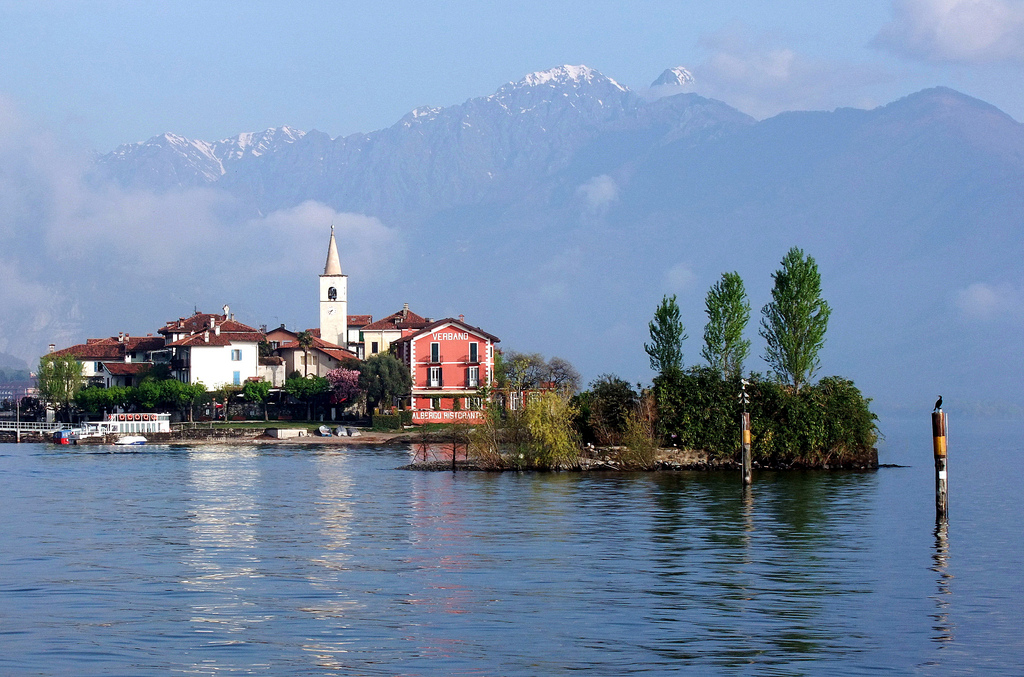
Most beautiful places to visit in Piemonte

The name of Piemonte (Piedmont in English) is in fact a combination of three words piede di monti – the foot of the mountains – according to the large walls of Alps that protect the mist covered plains, a small provincial towns and hills with pastures and vineyards. The heart of this region is Torino (Turin), which surprises its visitors with beautiful baroque buildings, cobblestone streets, shady arcades and elegant cafes.

Piemonte and neighbouring Valle d’Aosta are unlike Turin and its cultural jewels of rural character. The south of the region is covered by hills with vineyards (around Barolo) and seemingly endless cereal and rice fields. In the north you can find world-class Alps ski resorts, which include Courmayeur but also a National Park called Parco Nazionale del Gran Paradiso.
Piemonte is a region which has in recent years become a popular tourist destination for lovers of good cuisine. This fertile region of northwestern Italy is not only a world-famous wine country, but also has one of the most important areas for rice cultivation in Europe. White truffles from Alba city are in demand as much as hazelnuts from Cortemilia, gorgonzola cheese from the city of Novara or fungi from the Val di Susa.

Midst of this landscape is full of historic castles and palaces alternating with great vineyards. At its lakes Lago Maggiore and Lago d’Orta you will be fascinated by almost Mediterranean atmosphere, while in the west, on the border with France, you will find wildlife mountain valleys which are ideal for hikers.

Lago Maggiore, Lago d’Orta and Lago di Viverone are now sought after tourist destination in Piemonte region and will surprise each visitor. Clear water, surrounded by beautiful parks, palm trees, lush gardens and mountain ridges… This is just a short characteristic of Lago Maggiore with its fashionable resorts of Stresa and Verbania and its interesting Borromeo Islands archipelago consisting of three islands. It is a paradise for water sports lovers so if you like swimming, sailing, surfing, water skiing and kayaking or speedboat sailing this part of the region is ideal for you. Lovers of trekking and climbing will find their paradise in the surrounding mountains and Valgrande (Parco Nazionale Val Grande), most extensive wild national park in Europe. Even golfers can indulge their passion on 8 different courses.
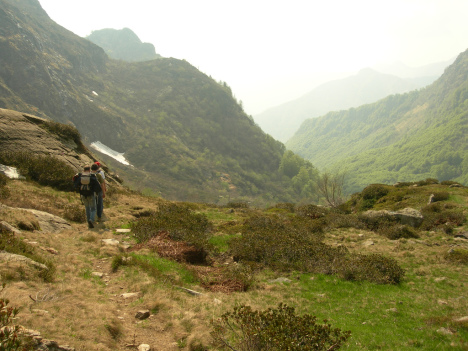
Piemonte became the cradle of the school of painting, which is documented by small parish churches and exquisite collections of fine arts. The most impressive architectural gems in north-western Italy, can undoubtedly be found in Turin, neglected and elegant Baroque city that, among other things, boasts one of the best Egyptian museums in the world.
Piemonte also has a renowned industry – Fiat in Turin, Olivetti in Ivrea, Ferrero in Alba, but is also known for its agricultural roots, food and wines. Beautiful limestone hills of Monferrato attract lots of visitors, you can taste excellent wine Asti spumante and two red wines – Barolo and Barberesco. This area is also the cradle of vermouth and salt Breadsticks (grissini), without which the bars and Italian restaurants could not cope.

Top places to visit in Piemonte
- Alessandria – sweet city
- Asti – one of the largest architectural and cultural sights
- Gran Paradiso National Park – oldest national park in Italy
- Lago Maggiore – the second largest lake in Italy
- Lago d’Orta – a pleasant holiday in a mild climate of northern Italy
- Montiglio – a lovely hill town
- The Piedmont Alps (Val di Susa, Valli di Lanzo, Sestriere, Bardonecchia)
- Turin/Torino
- Val Grande National Park
Leave a Reply Cancel reply
Your email address will not be published. Required fields are marked *
This site uses Akismet to reduce spam. Learn how your comment data is processed .

- What to see in Piedmont: 10 unmissable places
- Places and Tours
Piedmont is one of the most important regions of the Italian peninsula. A land rich in history and culture, as witnessed by its thousand monuments.

But Piedmont is also a land of extraordinary scenic and natural beauty, a land we could say, kissed by God! So what are you waiting for to follow us on our adventurous journey
1 - Turin, capital of art and culture
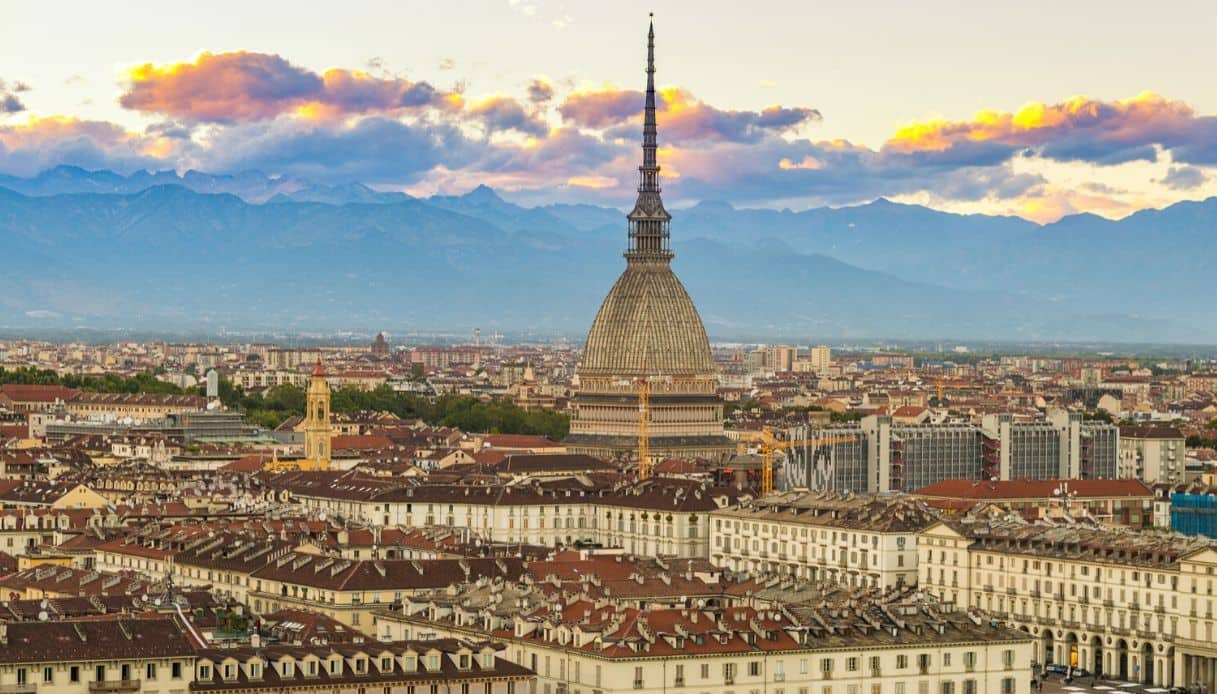
Turin is the capital of Piedmont and is a city rich in history and culture. Numerous and important are its monuments, among which it is necessary to remember the Cathedral that houses the Holy Shroud; the Real Church of San Lorenzo; the Sanctuary of the Consolata and the Mole Antonelliana. The Piedmontese capital also offers us a large number of museums to visit such as the Egyptian Museum, the GAM, Palazzo Madama, to name just a few of the most important names.
2 - Lake Maggiore and the Borromean Islands
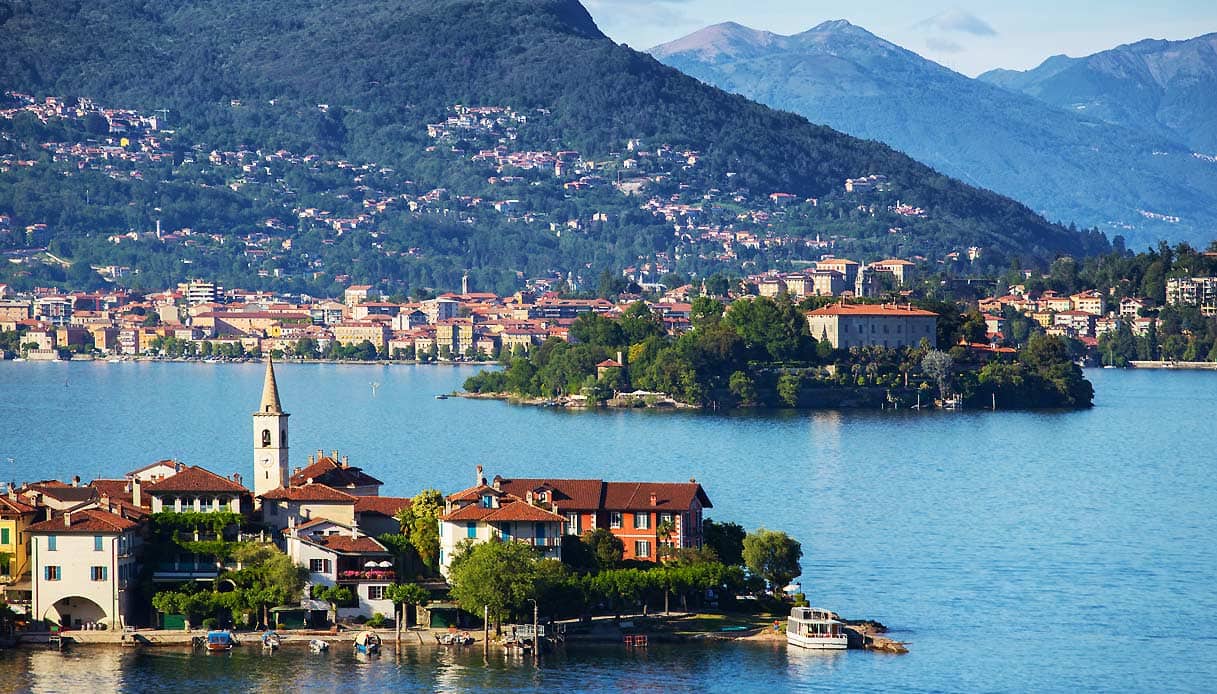
Among the beautiful landscapes of the Piedmont region, Lake Maggiore is certainly not to be missed. A heavenly place that will make your holiday more rewarding and relaxing. A must visit are the small towns that overlook the lake such as Stresa and Verbania and, above all, the Borromean Islands, spearheads of Lake Maggiore, for their historical and naturalistic charm. Among these, La Bella Island and La Madre Island are unmissable.

3 - The Sanctuary of Oropa

One of the unmissable stops on your tour in Piedmont is definitely the Sanctuary of Oropa (Biella). Built in the 4th century on the Sacred Mount of Oropa by order of Saint Eusebius, the Sanctuary is divided into several sections to visit: The Treasury Museum, The Ancient and New Basilica, The Royal Apartment, etc ... Last but not least, the 14th century statue of the Black Madonna, a masterpiece of medieval sculpture.

4 - The Sacra di San Michele
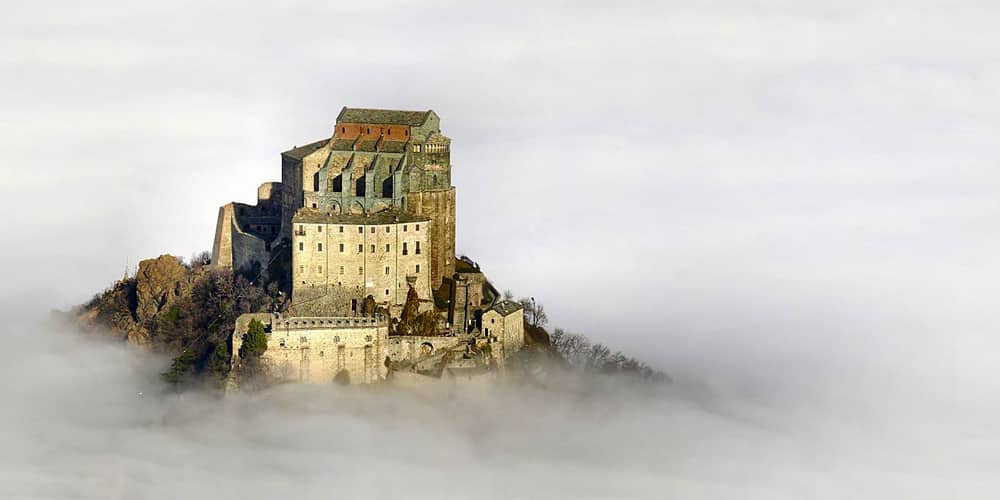
One of the most enigmatic and fascinating places in Piedmont is the Sacra di San Michele , built between the end of the 10th and the beginning of the 11th century on Mount Pirchiriano, in Val di Susa (municipality of Sant’Ambrogio di Torino). The main attractions of the Sacra di San Michele are the Foresteria, the New Church, the Bell’Alda Tower and the Nuovo Monastero.
5 - Stupinigi: the Palazzina di Caccia

To be truly satisfied with your trip to Piedmont , a visit to the splendid and elegant Palazzina di Caccia of Stupinigi , which is located in the municipality of Nichelino in the province of Turin, is a must. The building was commissioned by Vittorio Amedeo II to the architect Filippo Iuvarra, one of the last followers of the Italian and European Baroque. A fundamental step to breathe the atmosphere experienced by one of the most important Italian families.
6 - The Natural Park of Alpe Veglia and Alpe Devero
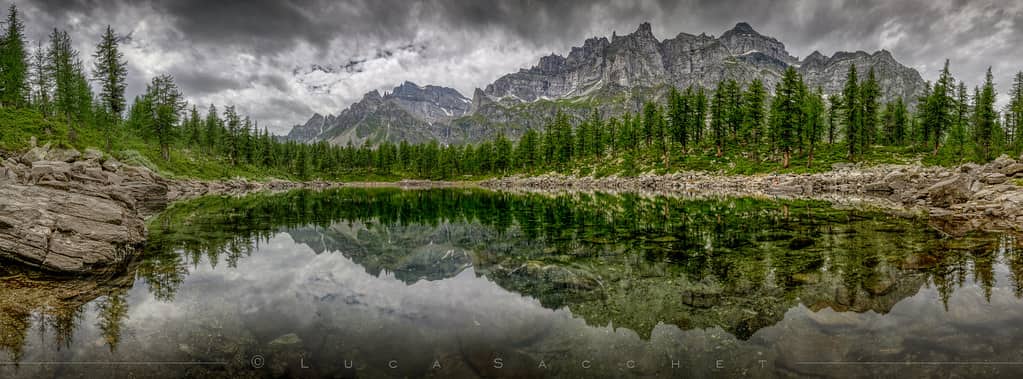
The Natural Park of Alpe Veglia and Alpe Devero is an enchanting place that best represents the scenic beauty of the Piedmont region. A place where you can immerse yourself in untouched and idyllic nature and where you can stroll among mountains of spectacular beauty.
7 - Agliè: the Ducal Castle
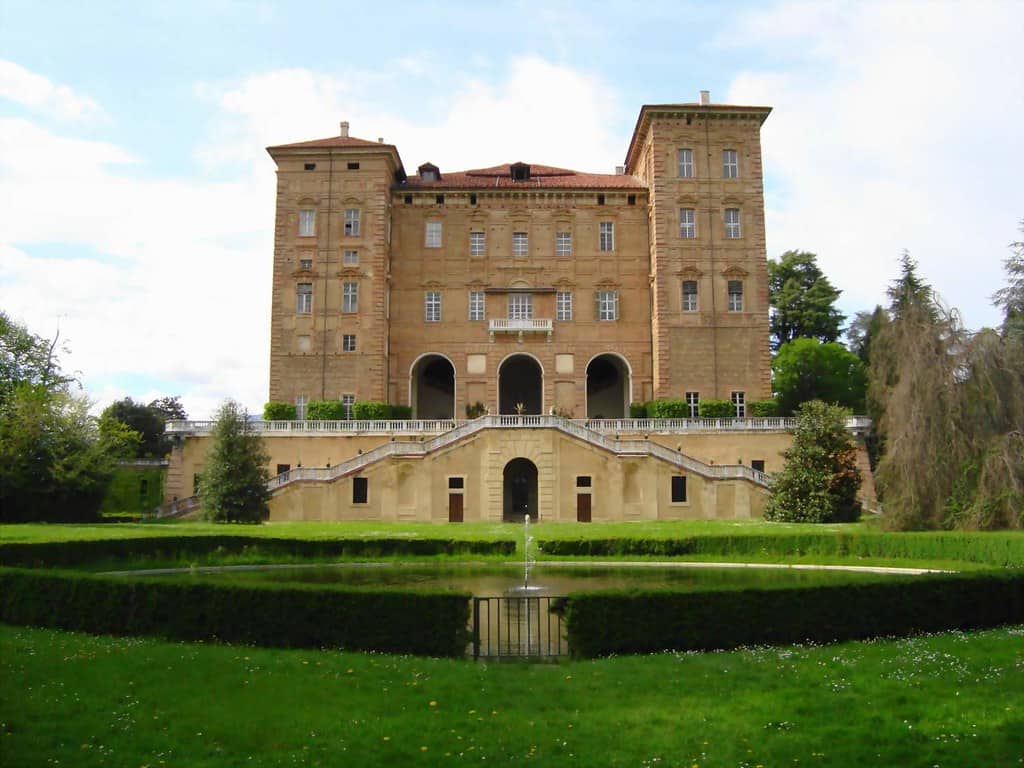
One of the ten wonders of Piedmont is located in Agliè , in the province of Turin : it is the famous Ducal Castle built in the Middle Ages and later remodeled and modernized by the architects of the House of Savoy. For this highly stratified history, the Ducal Castle of Agliè presents an original mixture of architectural and artistic styles that makes the visit more pleasant and interesting.
8 - Acqui Terme: a dip in ancient Rome
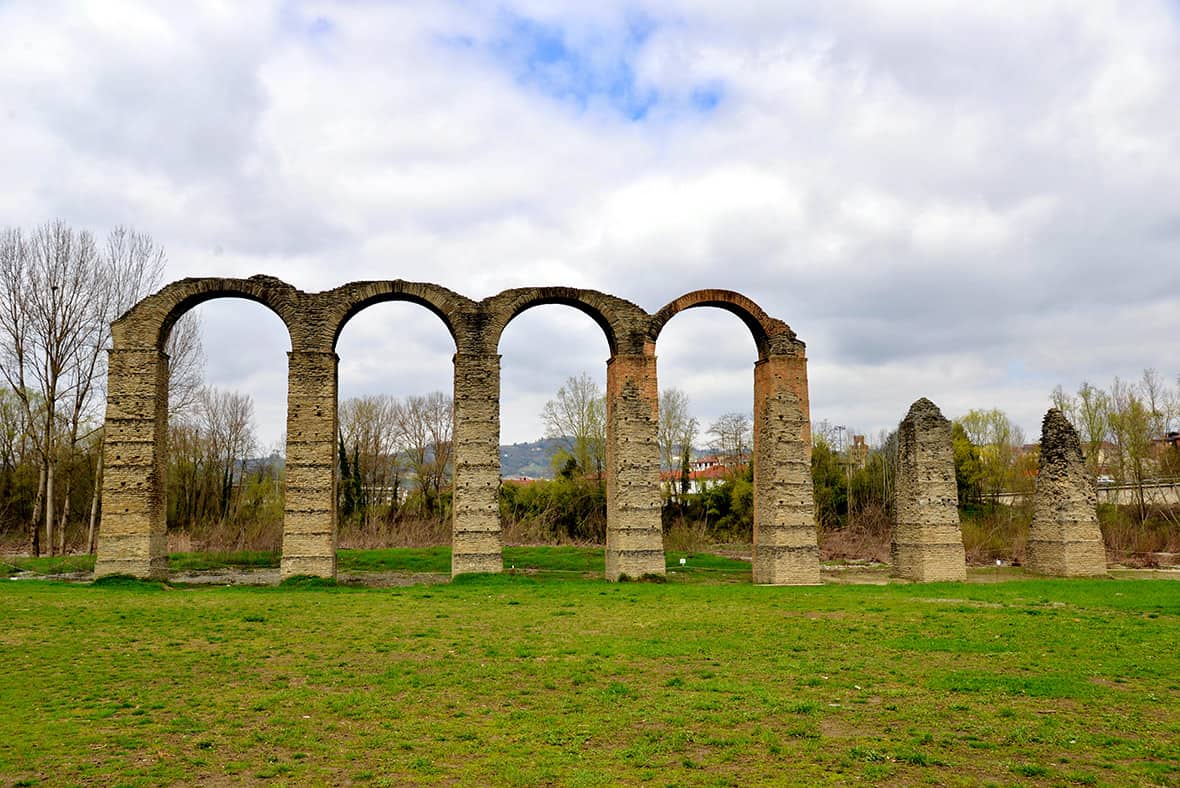
A stay in the Piedmontese town of Acqui Terme allows you to take a dip in antiquity. The Romans, in fact, after discovering thousands of years ago the precious thermal springs, decided to build some important structures that can still be visited today: among these, the aqueduct and the thermal baths. Don't miss the Duomo and the Archaeological Museum .
9 - The Fenestrelle Fortress: a bulwark of the Savoys

Maybe you didn't know that to admire the Great Wall of China it was enough to go to Piedmont in the Chisone Valley! It was here in fact, in the commune of Fenestrelle that between the XVIII and the XIX century Vittorio Amedeo II of Savoy made to build the imposing masonry colossus. The work was carried out by the engineer Ignazio Bertola and extends for five kilometers articulated in two Ridotti, three forts and three batteries.
10 - Last stop: Ivrea
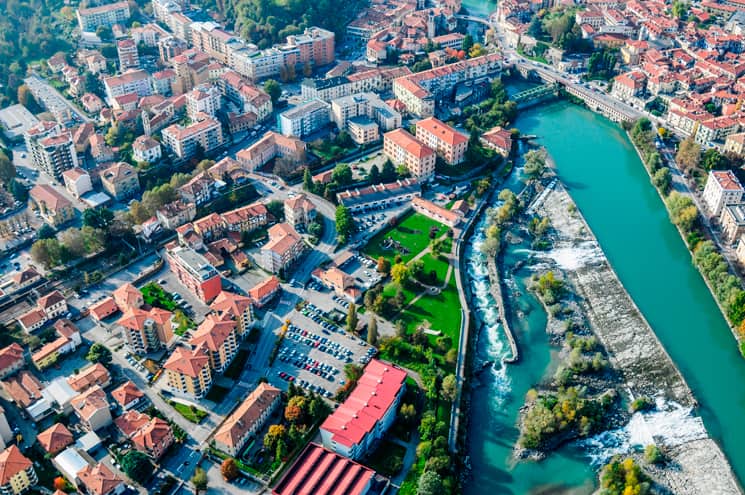
The last stop on your ideal tour in Piedmont is the city of Ivrea . Last, of course, of our list, but not for the beauties it can offer you! In fact, the famous castle built at the end of the 14th century is of great interest; the Bishop's Palace; the church of San Bernardino built in the fifteenth century and the beautiful Cathedral.

We recommend


- Travel Consultation
- Itinerary Planning
- Customized Travel Planning
- Travel Guides
- Get In Touch
- What They Say
The Best Things to Do in Piedmont Italy
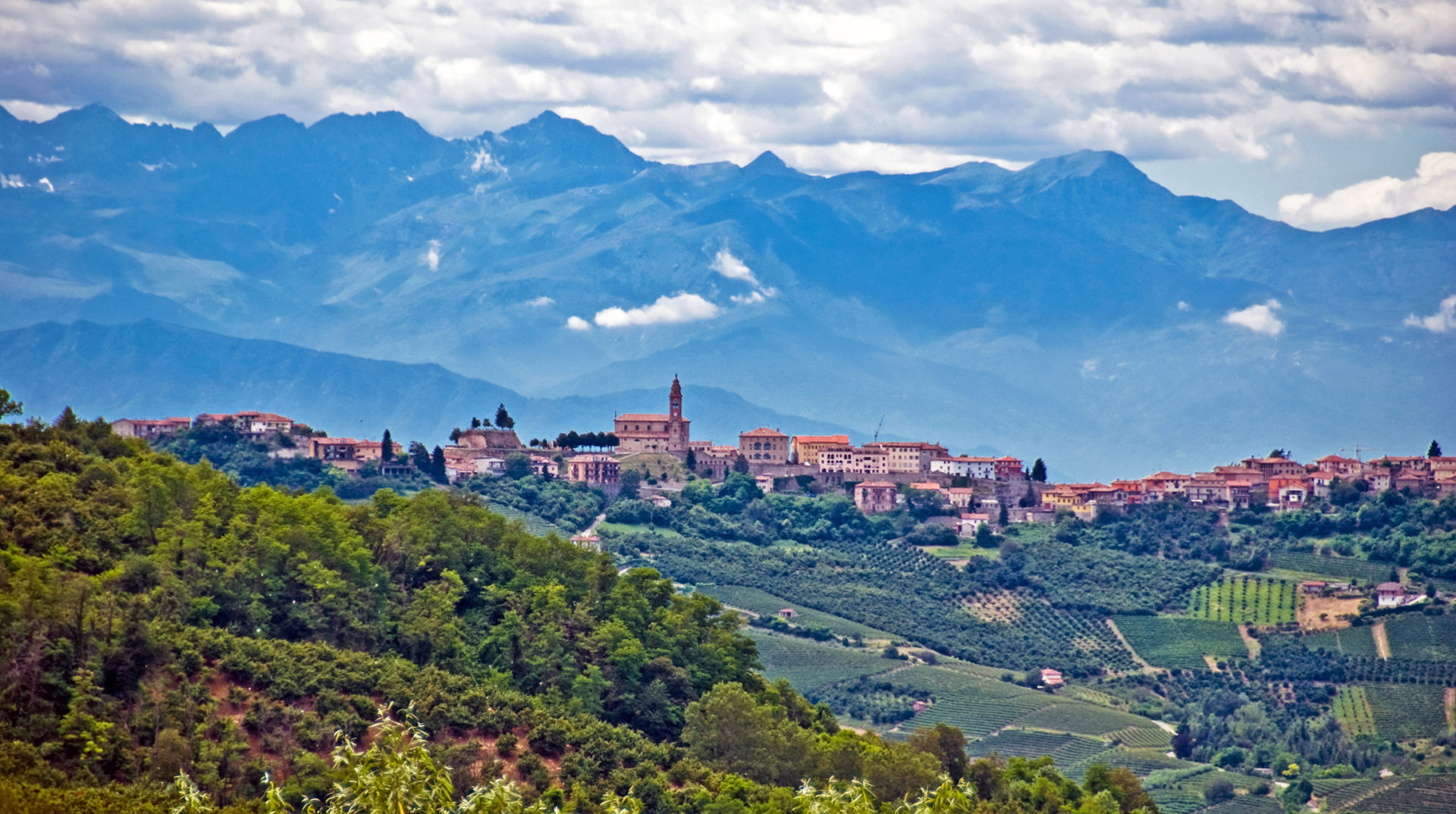
What are the best things to do in Piedmont Italy?
You don’t know where Piedmont is?
Where have you been?
Lonely Planet chose Piedmont as its number 1 region in its best of travel for 2019.
And for several good reasons that we’ll delve into below.
Piedmont, Piemonte in Italiano, has been on my radar for at least 6 years and this is the year I’m making the dream a reality.
So let’s dive into the best things about Piedmont and why you should travel to this incredible region in Italy.
But first…
Where is Piedmont Italy?
If you’re a fan of the Olympics, you may recall that Turin, Torino in Italiano, was the home to the Winter Olympics in 2006.
Turin is the capital of Piedmont.
This region is in the northwest part of the boot.
It borders Switzerland and France and has a diverse landscape.
You’ll find the Italian Alps in the northern part of the region, rolling hills to the south, rice paddies East of Turin and flat plains around the Po River.
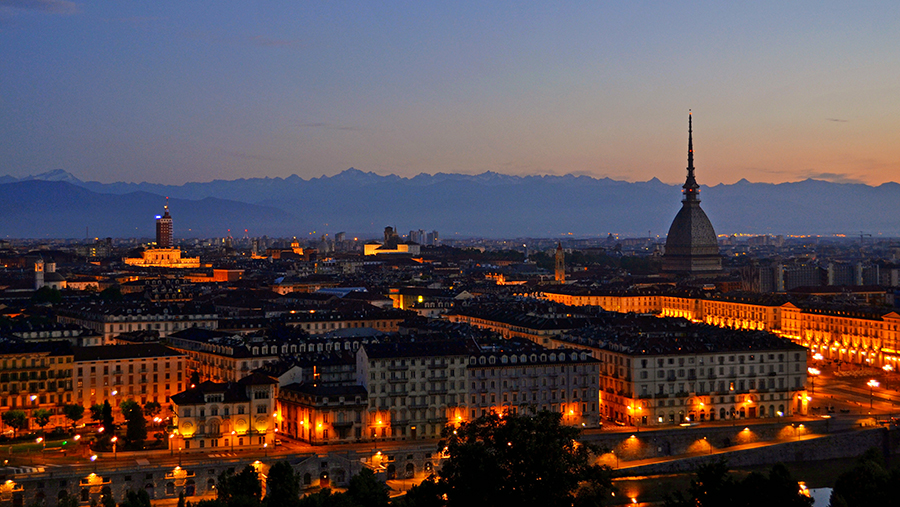
The beautiful city of Turin, Torino, at sunset. Photo courtesy of Pixabay.
A brief history of Piedmont
I won’t go into much detail here.
As with so many regions of European countries, Piedmont was part of different kingdoms. So it was once part of Burgundy, Lombardy and the Holy Roman Empire, just to name a few.
But it was in 1046 that Piedmont fell under the rule of the House of Savoy and this is the main influence you still see today.
Piedmont has always been a progressive region with industrialization taking root here early.
It’s the birthplace of the Fiat automobile, the classic Italian car.
Now the good stuff….
The best things to do in Piedmont Italy
See where and how wine is made — and drink it, of course.
The absolute best thing to do in Piedmont, Italy is to drink wine .
This holds true for all of Italy, in my opinion.
I’ll always say that I haven’t met an Italian wine that I don’t like.
But Piedmont is the home to the king and queen of wines — Barolo and Barbaresco.
Everyone goes to Tuscany for wine.
But Piedmont is the place to go if you’re really and truly a wine afficianado .
Barbera, Dolcetto and Nebbiolo are some of the other tasty red wines you’ll find in Piedmont.
There are lots of vineyards to visit near the towns of Alba, Asti, La Morra, Neive and Barolo.
Just be sure to check ahead as most wineries will require appointments for visits and tastings.
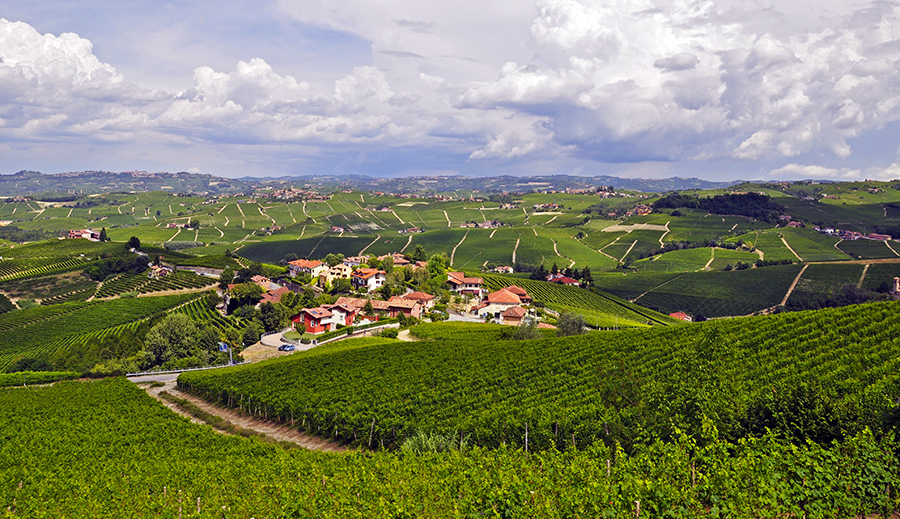
The vineyards of the Langhe wine region where you’ll find some of the best wines in all of Italy. Photo courtesy of Pixabay.
Eat amazingly delicious local food
The town of Bra is the home of the slow food movement.
This movement, started by Carlo Petrini, focuses on local food and traditional cooking with an emphasis on local farmers and businesses and sustainability.
It’s in direct contrast to the mass production of food.
I can get behind this 100%.
So here in Piedmont, there is a strong focus on LOCAL and what some may call the farm to table trend.
Every Italian region has its pasta and in Piedmont you’ll find, tajarin , — a long, thin ribbon-like pasta that is a lot like tagliatelle .
It gets its golden yellow color from the farmhouse eggs that are more orange than yellow.
Veal also is found on the menus.
Brasato al Barolo or Brasato al Barbaresco is one of the best, as the veal is marinated in the wine of your choice overnight then braised until tender.
It’s served with herbs and veggies and yes, a glass of Barolo or Barbaresco.
And for dessert?
Well the Torta di Nocciola — Hazelnut Cake — is the most traditional dessert.
Made with hazelnuts that are abundant in Piedmont, this sweet cake is quite tasty.
You’ll also find some really good chocolate in the region especially in Turin.
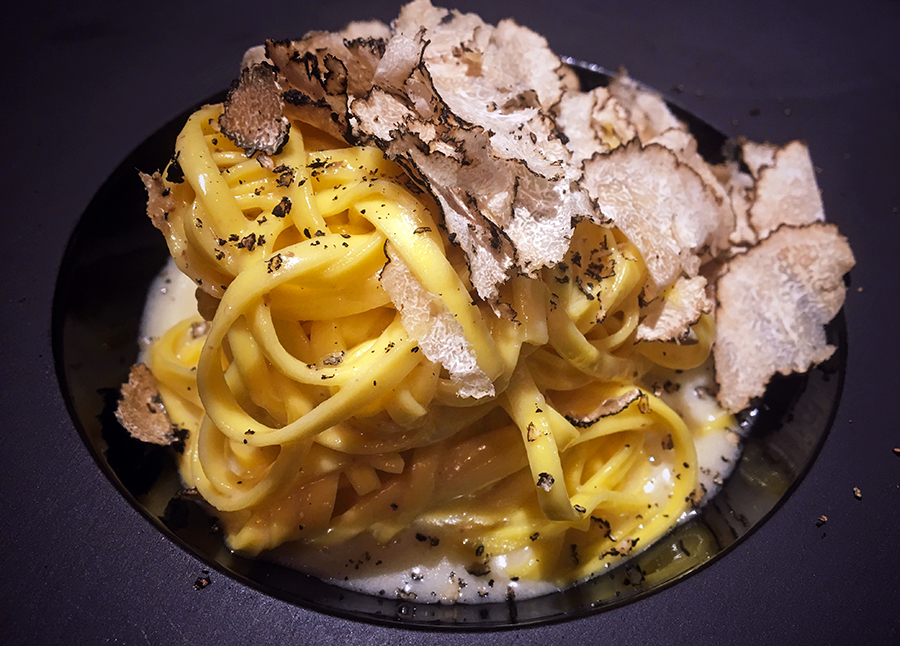
Pasta with truffles. Yum! Photo courtesy of Pixabay.
Go truffle hunting
One of the best things to do in Piedmont to really get into the food is to go truffle hunting.
What are truffles ?
Well truffles are a fungus, like mushrooms, only they grow underground so are more difficult to find.
And they come in many varieties but I’m just going to break it down into black or white for this post.
Black truffles can be found in Piedmont and other regions of Italy such as Tuscany, Umbria and Le Marche.
I’ve had them on pasta and they have a definite earthy taste and are quite good.
The white truffle is quite rare and only found in Piedmont.
These too have some earthiness to their aroma and taste but also have a hint of honey and butter.
And they’re very expensive.
There are dogs that are specifically trained to find these fungi under the ground.
The pup starts digging when he has found something and the human then takes over, checking to see what the dog has uncovered.
You, as a traveler, can go out hunting for truffles.
Guides are available to take you out into the forest for this unique experience.
Late spring, summer and autumn are the best times.
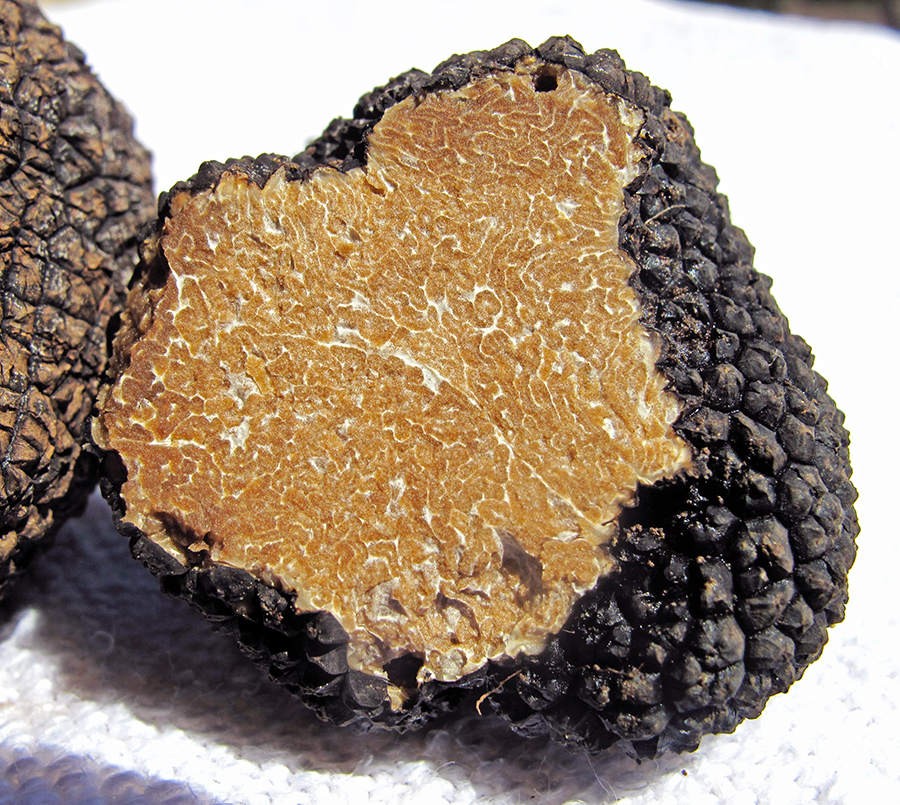
A type of black truffle. Photo courtesy of Pixabay.
Visit Forte di Fenestrelle
Visiting the Great Wall of Piedmont is one of the best things to do in Piedmont.
Fenestrelle Fort has a wall that is about 3km long that is part of a greater fortified complex — hence the nickname.
It’s a must site for those into military history.
This large and impressive fort was built in the early 1700’s so while it’s old, it’s not that old — at least by European standards.
The views from the wall walk are stunning as you’ll gaze out to the Chisone Valley and the Alps.
Reservations to visit are mandatory and there are a few choices for guided tours — from 1 hour tours up to an all day 7 hour visit.
Check out the Forte di Fenestrelle website for more information.
But don’t miss this spectacular site!
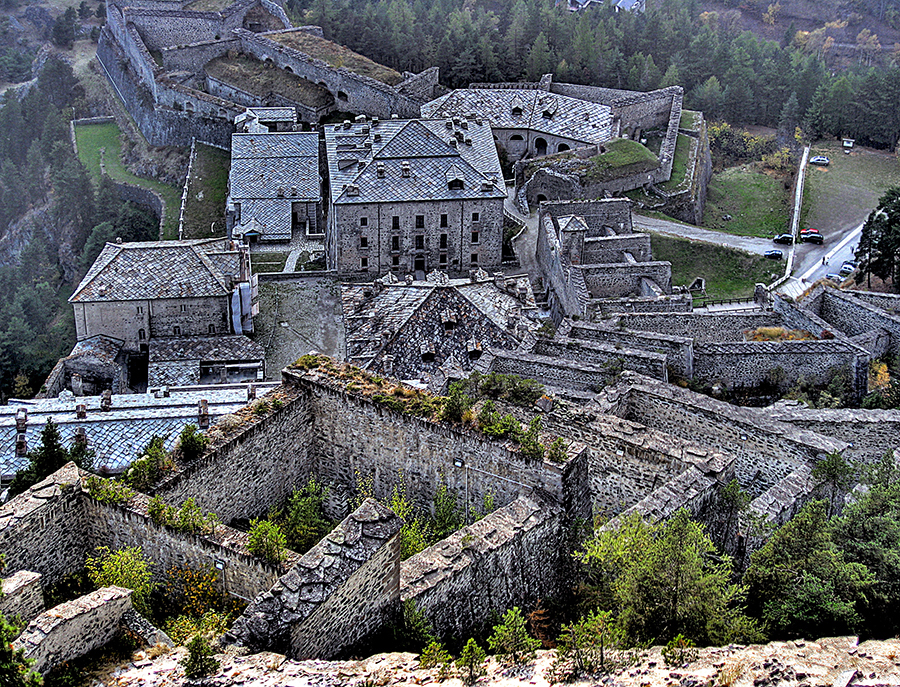
The impressive and grand Forte di Fenestrelle. This site is high on my list! ©Eric Borda via Flickr
Gran Paradiso National Park
I am so hoping to spend at least a day at this national park, which lies between Piedmont and the Aosta Valley region.
Gran Paradiso is definitely one the best things to do in Piedmont, Italy for those who love the great outdoors .
Ummm…me!
The mountains are stunning with Gran Paradiso being the highest peak at 4061m.
There are valleys, forests, alpine meadows and 57 glaciers.
You’ll find trails of varying levels, an abundance of wildlife and gorgeous flowers in summer.
And this was the first national park established in Italy back in 1922.
You can’t miss it!
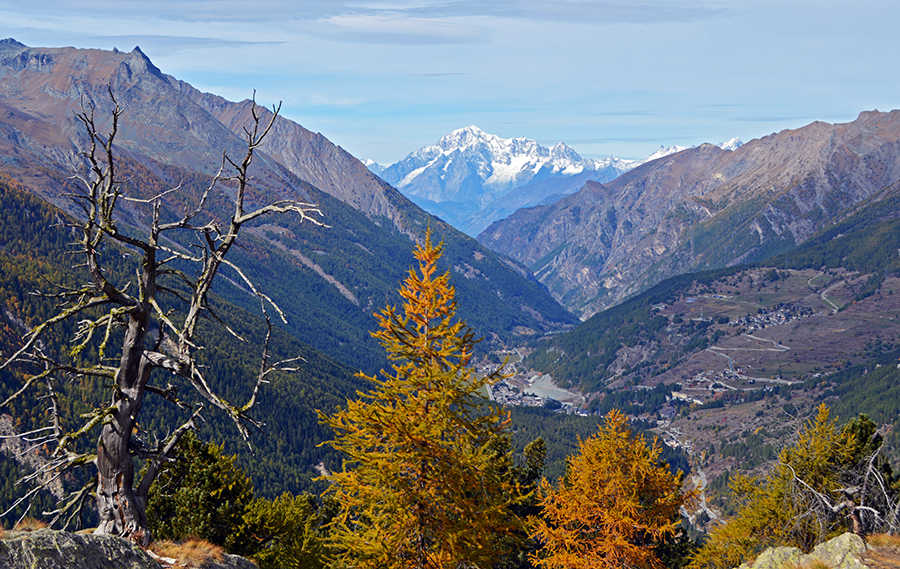
Gran Paradiso National Park. Italy’s 1st National Park! Photo courtesy of Pixabay.
Castles, monasteries and abbeys
As I mentioned above, the House of Savoy ruled Piedmont for a long time.
So as a result, there are quite a few castles and royal houses around the region.
Castello di Camino, Castello di Belveglio, Castello di Rocca Grimalda as well as a few in Turin such as La Venaria Reale — the Versailles of Turin — are musts for lovers of royalty.
Monasteries and abbeys also dot the landscape.
Sacra di San Michele is one of the most dramatic in the Susa Valley but you’ll also find Sant’Antonio di Ranverso Abbey, Lucedio Abbey and Staffarda Abbey scattered about Piedmont.
There’s definitely no shortage of religious and royal buildings in Piedmont Italy.
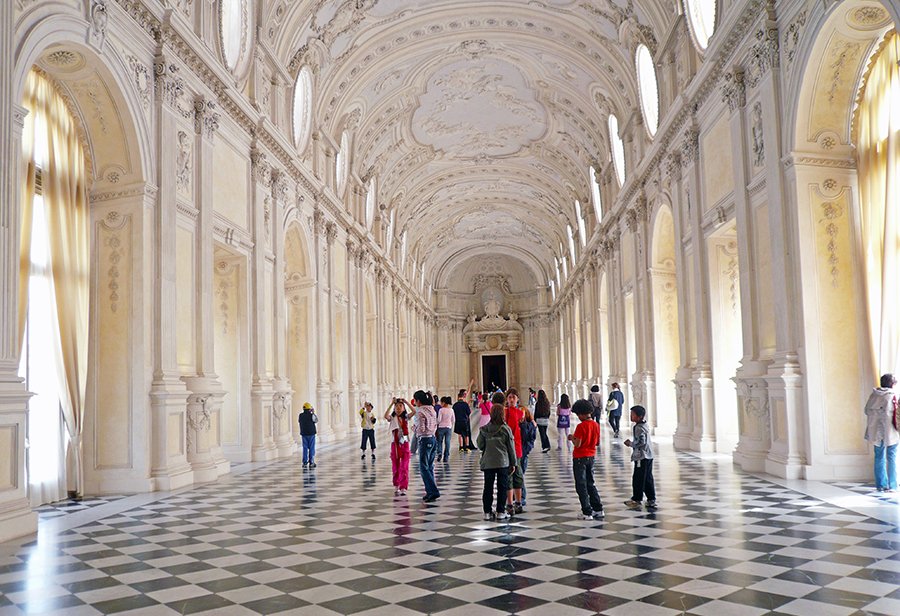
Reggia di Venaria Reale — Turin’s answer to Versailles. ©Sergio & Gabriella via Flickr
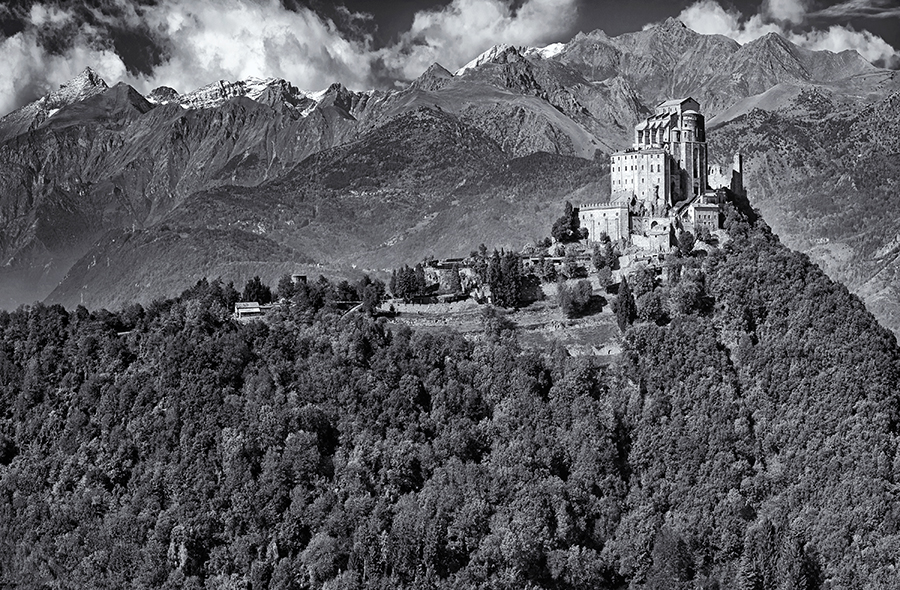
View of Sacra di San Michele. Stunning! ©Diana Robinson via Flickr
Valle di Susa and Valle di Chisone
These parallel valleys lie west of Turin and each is equally beautiful.
Valle di Susa is where you’ll find Sacra di San Michele, the Celtic town of Susa and other charming mountain villages.
Valle di Chisone is south of Valle di Susa and this is where you’ll find loads of ski resorts.
So if skiing and snowboarding are your jam, then a visit to Valle di Chisone is the best thing to do in Piedmont for you.
Both valleys hosted a lot of the Olympic events back in 2006 so you may want to spend a bit of time in both.
And even if you’re not an outdoor adventurer but still want to see some breath taking scenery, then be sure to at least make the drive.
The scenery is fab!
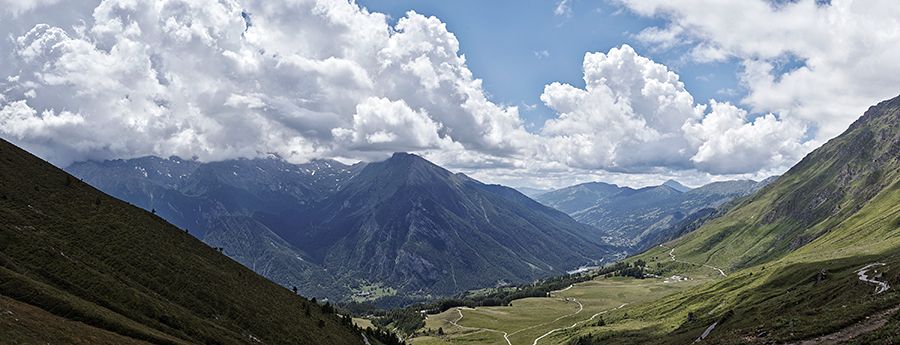
Valle di Chisone. Yes please! ©Prakhar Amba via Flickr
Turin/Torino
What to do in Piedmont?
Well, you can’t travel to Piedmont without spending at least a wee bit of time in the capital of Turin.
Known as Torino in Italiano, this city will take you by surprise.
Beautiful tree-lined boulevards, a mix of historic and modern set against the backdrop of the Alps will make your draw drop.
There are museums, art galleries, castles, churches and the gorgeous Piazza Castello —Torino’s central square.
Turin is also home to Fiat — the iconic Italian car company — and chocolate.
The first hard chocolates were sold here.
As a result, there are some delicious artisan chocolate shops in Turin. Yum!
And yes, the slow food movement is alive and well in Turin so you’ll have a plethora of choices when it comes restaurants.
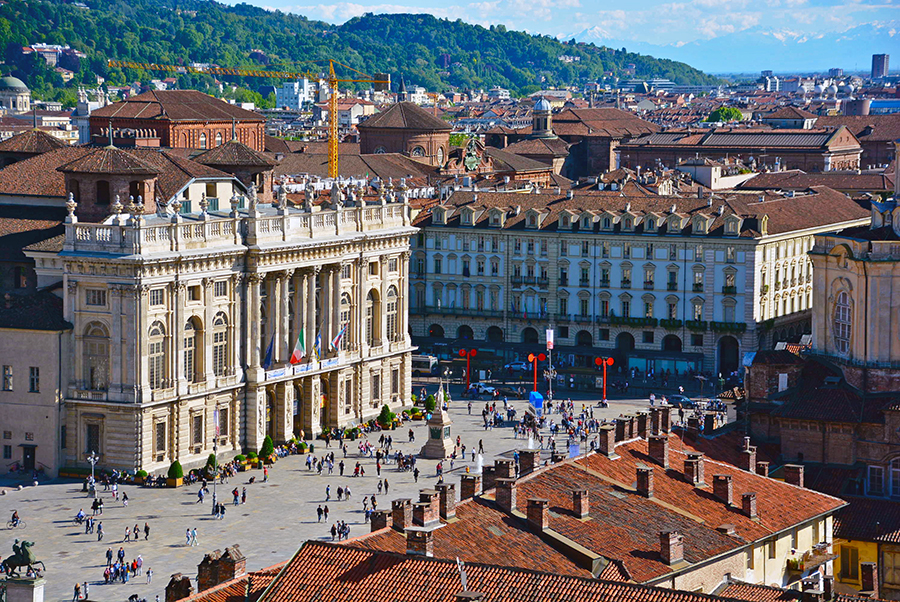
Turin/Torino, the capital of the Piedmont region. Be sure to spend some time in this fabulous city. ©Alejandro via Flickr
Charming towns
As with any country or region I visit, I find that the best thing to do is visit the charming towns and villages.
And the towns of Piedmont are fabulous.
Towns such as La Morra, Barolo and Neive in the Langhe wine region are beautiful as are other towns such as Saluzzo, Chianale, Domodossola, Garessio and Orta San Giulio.
You’ll be spoiled for choices for sure — and you won’t go wrong with any of them.
These towns and villages are wonderful places to slow down and enjoy every day life of Piedmont.
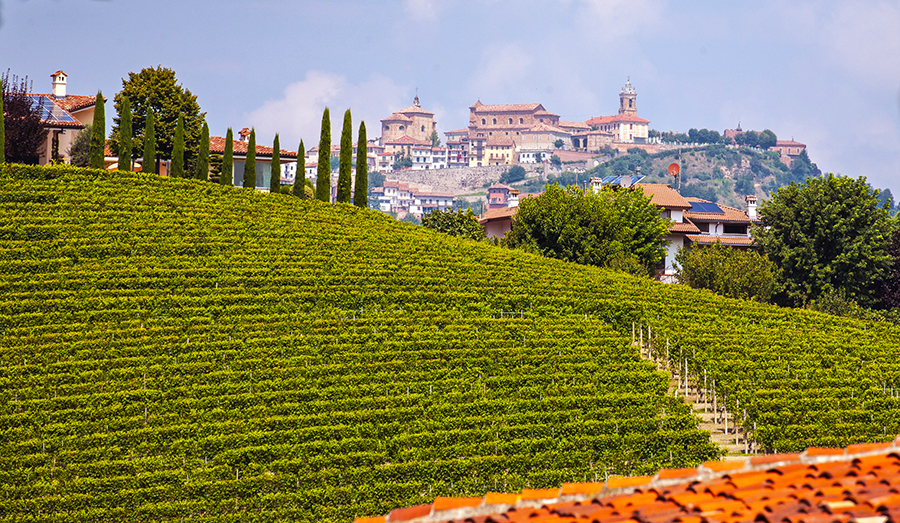
La Morra is one of the charming villages in the Langhe region which is where you’ll also find some of the best wines in all of Italy. ©ErWin via Flickr
This is a stunning peak that sits on the border between Piedmont, Aosta Valley and Switzerland.
Monte Rosa is the second highest mountain in the Alps and western Europe, after Mont Blanc — Monte Bianco in Italiano.
There are some impressive glaciers on this massif and there is a ski area for you snow bunnies.
And you’ll find trails for hiking although many are pretty challenging.
Feeling a bit lazy?
Well, you’re in luck as there are a couple of cable cars to take you up the nearby peaks.
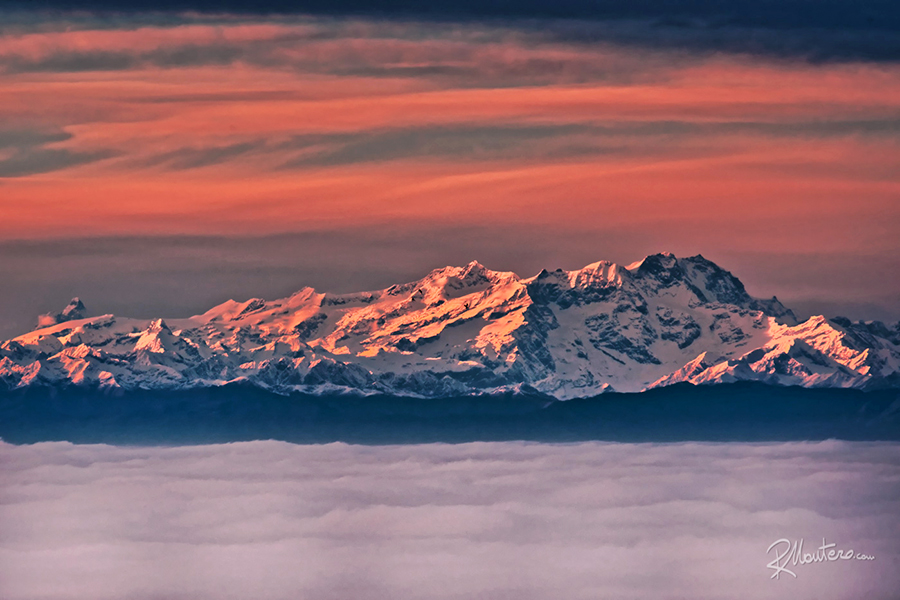
Monte Rosa actually sits between Piedmont, Valle Aosta and Switzerland. And it gets its name not from it being pink (rosa) but rather from Franco-Provençal Valdôtain word rouése meaning “glacier”. I learned something new! ©Riccardo Maria Mantero via Flickr
Lago d’Orta
Lake Orta is the final item on the list, but certainly not the least.
One of the lakes of northern Italy, Lake Orta is one of the best things to do in Piedmont.
And this is due to the fact that unlike its neighbors to the East — Maggiore, Como and Garda — this lake doesn’t see nearly as many travelers.
It’s a small lake, but it’s stunning with Isola San Giulio sitting in the center of it.
The above mentioned, Orta San Giulio is the medieval village that captures the imagination and is a delight to wander about.
But there are outdoor activities too such as boating, swimming, walking and biking.
While it does get busy in summer, outside of that, it’s tranquil and serene.
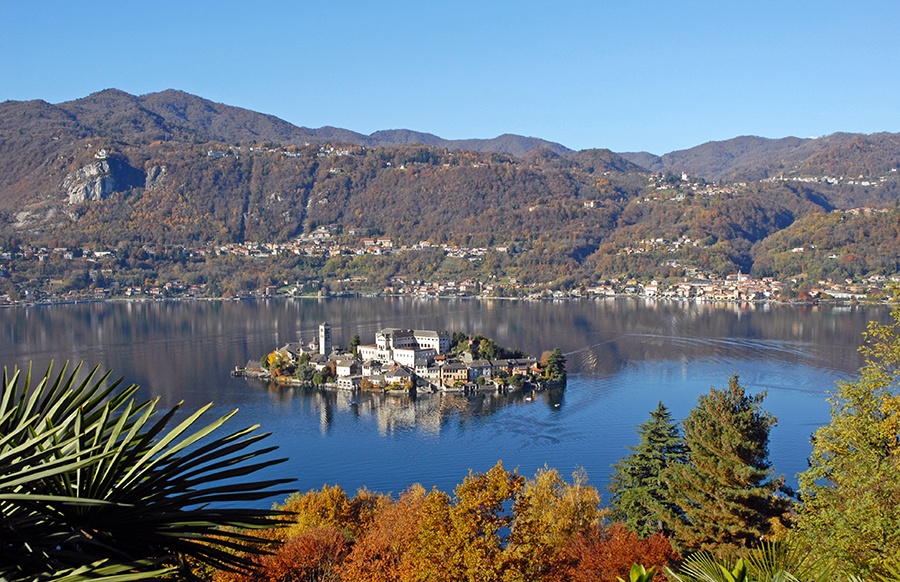
Lago di Orta is a must for your time in Piedmont. I mean, who can pass this up? Photo courtesy of Pixabay.
Whew! This is quite the list.
There are loads of things to do in Piedmont.
It is the second largest region in Italy so you shouldn’t be surprised.
I’m planning on just 1 week here so I know I won’t experience all that I want to.
But I know I’ll get a good taste of this amazing region in northern Italy.
What would you put on your top 3 list of things to do in Piedmont?
And what do you think I should see?
Drop those comments below, find me on Facebook or Pinterest or send me an email.
And if you’re looking for more inspiration on where to go in Italy, then why not check out Location Inspiration Guide: A Journey Through Italy by yours truly.
Disclaimer: This post contains affiliate links in which means Wander Your Way will earn a commission if you click on the link and purchase anything from these trusted companies. It helps Wander Your Way, a small business, stay in business. Thanks for your support!
Are you ready to explore Piedmont, Italy?
Well, I’m ready to lend a hand. Who am I? I’m Lynne Nieman and I’m a personal travel planner helping people like you create your perfect European adventure. Whether you need help planning part or all of your trip, I’m ready to assist you in making your travel dreams come true!
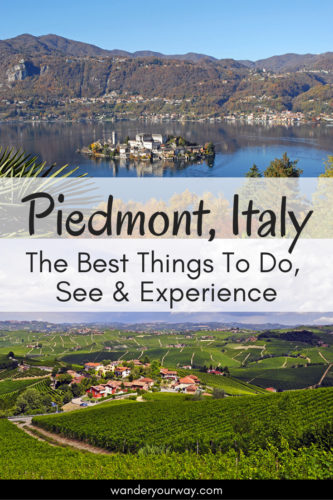
Related posts

This is a great introduction to Piedmont! I’d love to book a wine trip there. What were your favorite wineries around Alba, Asti, La Morra, Neive and Barolo?
Well, I haven’t been to Piedmont yet, Sabrina. But I’ll let you know. I do know of a few wineries like Mauro Veglio that produce good wines. But I know there will be many I don’t know of. So I’m excited to find out!
The more I research Italy, the more stops I find to add to my itinerary! I’d love to spend a few days in Piemonte trying those wines, though! Thanks for the guide 🙂
There are so many places in Italy! All worthy of time!
Comments are closed.
Get the best destinations in Europe PDF
Subscribe to get your FREE PDF on the best destinations in Europe for the independent traveler!

Touropia Travel
Discover the World
12 Best Places to Visit in Piedmont, Italy
By Jamie Gambetta · Last updated on May 4, 2024
The many Italian regions offer travelers varying experiences. However, there may be no area as stately and elegant as Piedmont. Home to Turin, vast and stunning lakes, plus an assortment of charming villages, Piedmont is designed to be discovered.
Slow-cooked dinners and delightful wines are a common sight here. Helping travelers indulge in fine Italian specialties while reflecting on their day. Close to the Swiss border, the cuisine mingles with a rollercoaster past of wars and an ancient royal family that helped unify a region once rife with individual fiefdoms.
This leaves travelers exploring all the things to do in Piedmont with the knowledge that there’s more to see than just the tourist highlights. Go, get lost and discover colorful streets where lovely aromas and wine flow.
12. Lake Orta
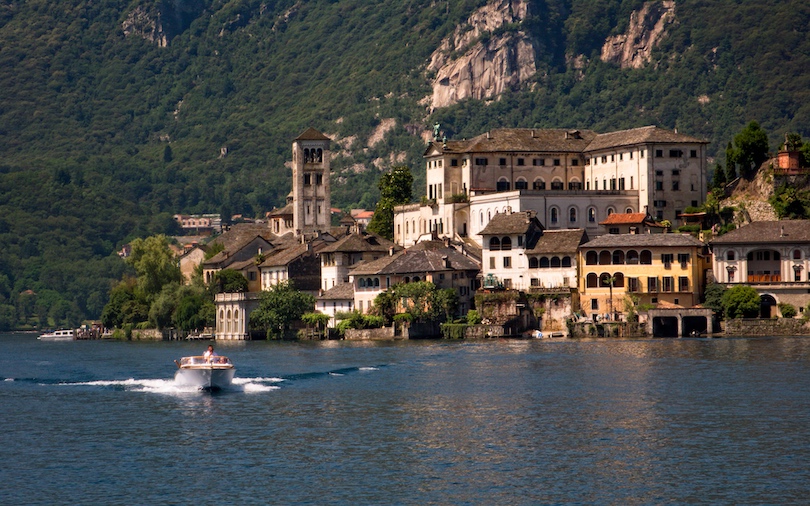
A ninety-minute jaunt from the region’s capital of Turin is Lake Orta. Affectionately referred to as the “Italian lake tourists have yet to discover” Lake Orta is charming and quaint.
It’s here you’ll find the village of San Giulio nestled upon a promontory giving the illusion it is floating on the lake. A short boat ride will see you in the idyllic Isola San Giulio, home to the 12th century Basilica di San Giulio.
Ortafiori is a festival hosted by San Giulio each April and May and an absolute must if you plan on traveling here in those months. During Ortafiori, the village hosts a large feast and displays an abundance of flowers in the streets.
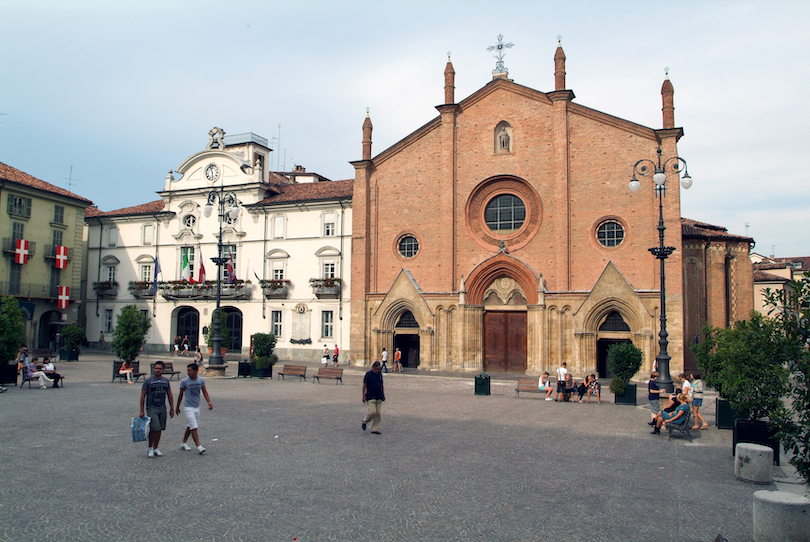
The story of Asti goes beyond the middle ages. In fact, it was first established during the Roman era. But it was not until the 1100s that it rose to prominence to become one of the most important independent societies in this region. This rise to relevance can be seen today in many landmarks, historic plazas and churches, the majority of which were built in the Middle Ages.
You will want to start your day in the plaza for coffee before making your way to Asti Cathedral. Next up, the Mazzetti Palace is home to the Civic Art Gallery, which will keep you entertained for hours and immersed in valuable collections dating back to the 1400 and 1500s.
Finish your day with a glass of Moscato d’Asti. This is a famous wine unique to this region. Bubbly with a sweet taste, this glass makes for an excellent dessert and the end to your adventure around Asti.
10. Fenestrelle Fort
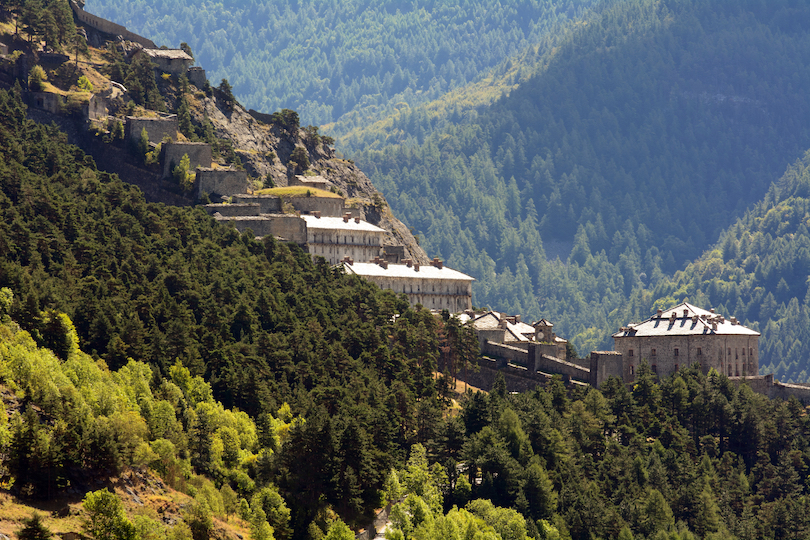
Located in the middle of picturesque Val Chisone, otherwise known as the “Olympic Valley” from the 2006 Torino Olympics, is the dramatic Fenestrelle Fort. Visible from across the valley, visitors can see this massive structure well before arriving in Val Chisone.
Fenestrelle Fort is made up of three individual forts that are brought together by a 3km wall. This wall is also home to the famous “world’s longest covered staircase” boasting an impressive, leg-numbing 4000 steps.
Construction of the fortress started in 1728 but took 122 years to complete. What was built mainly to defend against invasions ended up primarily used as a prison and garrison. The fort fully lost purpose after WWII and was subsequently abandoned. You can visit via guided tours or test your endurance with a hike along the massive walls of the fort to fully experience the fortress’ grandeur.
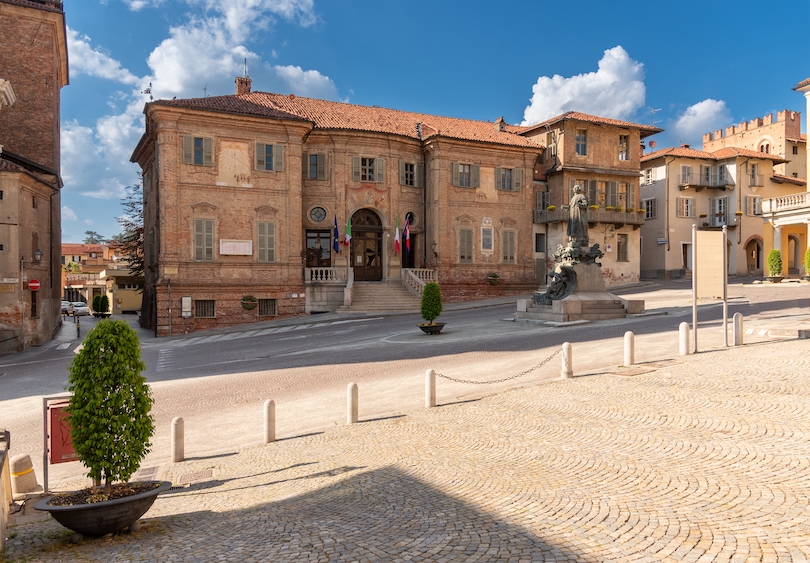
If you have ever heard of the “slow food movement” and believe in its practices and principles, Bra will be your number one place to visit. With Bra being the birthplace of this movement, the organization has grown well beyond the little Italian town. It’s now spread worldwide.
If you have not heard of the Slow Food Movement, well, Bra’s annual cheese festival is enough reason to add it to your list. Hosting cheese producers from around the world and fully dedicated to raw milk cheese, this festival will put any cheese lover in pure heaven.
Once you have savored the delicious dishes Bra has to offer, make sure to check out San Andrea Church. Built in 1682, this impressive baroque church has paintings, statues and frescoes from the Renaissance kept in impeccable condition.
8. Gran Paradiso National Park
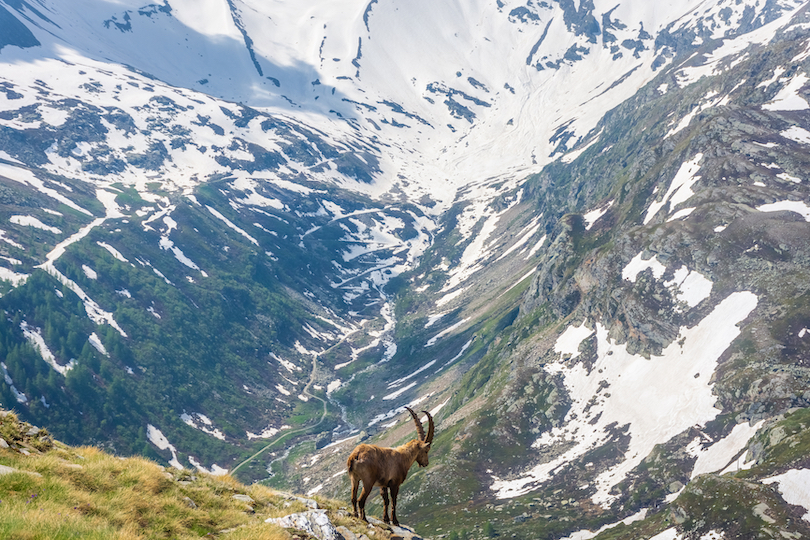
If you ever woke up one day and thought “I wonder what an Italian Yellowstone might look like?” then look no further than Gran Paradiso National Park. Home to over 100 species of fauna, 1100 unique types of flora, 59 glaciers and an impressive 183 lakes, the possibilities at Gran Paradiso are endless.
Depending on when you plan to visit, the trails can be used for hiking, walking and biking during the summer or snowshoeing and skiing during the winter months. Some of the more famous hikes range from the Alpe Money, a 10 mile trek along valleys, with jaw dropping vistas or the shorter Valnontey River Trail and Rifugio Vitorrio Sella.
The latter two both offer staggering views. Not to mention, their shorter lengths will also see you back in a chalet, wine in hand, sooner. If you are after a ski adventure, consider coming in February to enjoy any of the five ski resorts within the park.
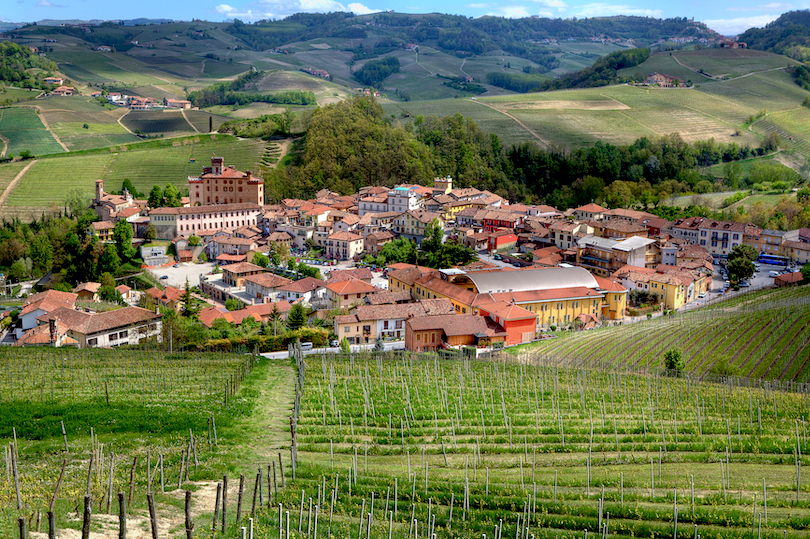
Red wine connoisseurs will want to find their way to the beautiful Barolo. Barolo wine, which has made the region famous, is made from the Nebbiolo grape and is one of Italy’s most iconic wines.
Start your day visiting one of the many small, local and family-owned wineries in this region and have several tastings of the complex and flavorful Barolo wine. It’s important to note a reservation may be necessary for some tasting rooms.
If wine tasting alone hasn’t quenched your wine thirst, check out the Wine Museum located in Falletti Castle. The castle, originally built in the 10th century, is an impressive structure providing 360 views. However, with several floors of history on wine to explore within the museum, you will surely leave a wine expert.
6. Sacra di San Michele
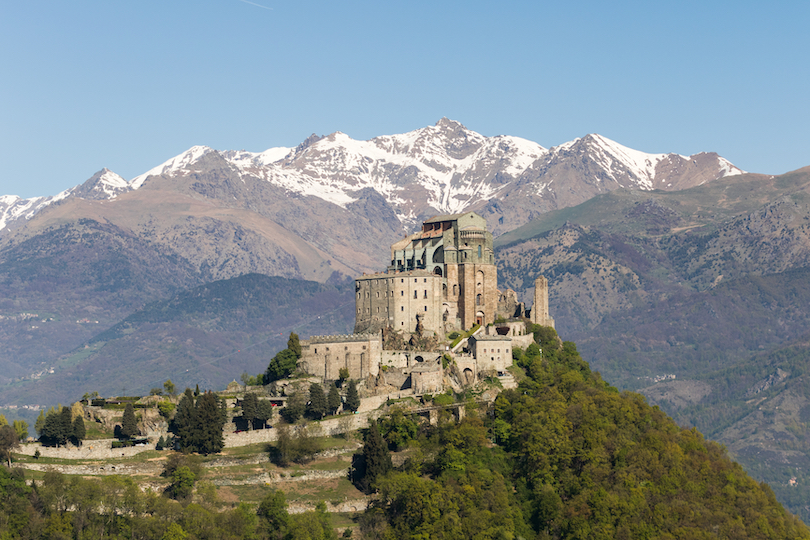
Dating back to the late 10th century, Sacra di San Michele boasts some of the most memorable Romanesque architecture not just in Piedmont, but Europe. Set high in the Italian Alps, this former abbey has inspired travelers and writers alike, having inspired Umberto Eco’s celebrated novel The Name of Rose.
Such is the history of Sacra di San Michele, visitors will want to take a guided tour of the ancient community. Go beyond the fortress walls to discover the abbey’s intact history, on display today as if it was still the Middle Ages.
Your journey begins with a trek up the so-called stairways of the dead, where you’ll soon be met by memorable views of the surrounding Susa Valley in addition to the stunning peaks that rise towards the heavens.
Highlights of your time here will be learning about the members of the ancient royal family, the Savoy, who are buried here. Plus exploring the remains of the Tower de Bell’Alda, which harbors views of distant Turin.
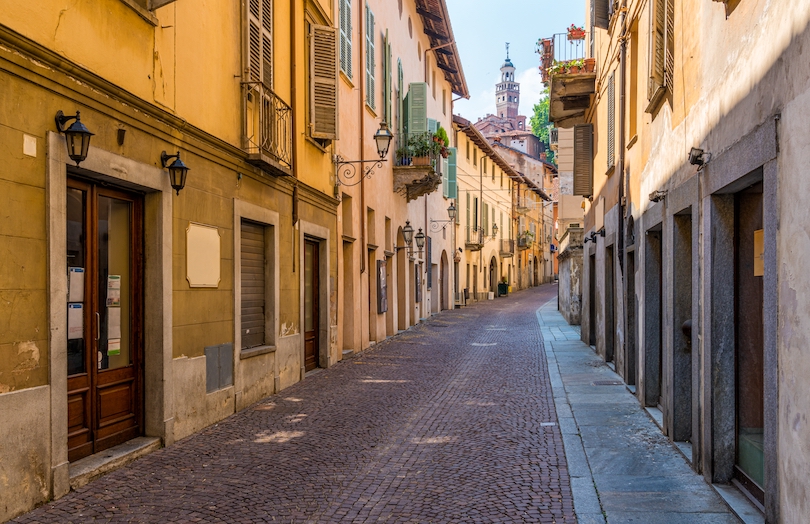
For those looking to be transported back to the 15th century, then a trip to Saluzzo is a must. This small town has remarkably kept much of its medieval old town intact, giving a feeling of time travel to those who visit.
Start your journey in Saluzzo with the Cathedral of the Assumption, located in the Piazza Risorgimento. Give yourself time to admire the various works of art within the cathedral such as the wooden crucifix made in the 14th century and a traditional Baroque altar by Carlo Giuesppe Plura.
Once you have explored the magnificent walls within the cathedral, head to Piazza Castello. Marvel at Drancia, the central historic fountain, and La Castiglia, a majestic castle overlooking the ancient village. Finally, we suggest you complete your tour of Saluzzo sampling the local cuisine.
With this region being known for Paglierina, a cheese originating in the Langhe region, and Cavour also known as the “white hen” of Saluzzo, there is no shortage of flavorful and unique foods to try.
4. Skiing in Via Lattea
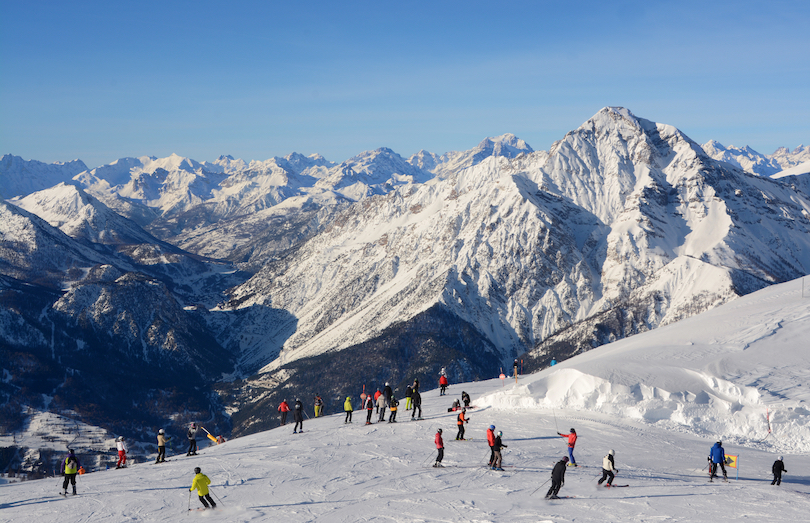
Looking for the largest ski area in western Italy? Look no further than Via Lattea. Meaning the “Milky Way”, Via Lattea links six resorts with over 70 ski lifts in Piedmont to create an awe-inspiring ski area any snow chaser would enjoy.
A large amount of the terrain at Via Lattea is perfect for intermediate skiers. But that doesn’t mean experts will grow bored. In fact, the challenging black runs promise to get the heart pumping. In addition, beginner slopes and ski instructors lie in wait for those new to the sport.
After a long day on the slopes, Sauze d’Oulx is the go-to après-ski destination. With lively bars and upscale restaurants, there is something for everyone looking to relax with a few beverages or refuel with fine foods. With a good combination of high altitude, north-facing slopes and snow-making abilities, you can have a ski vacation in the Italian Milky Way from December to March.

Known as the unofficial food and wine capital of Piedmont, make sure Alba lands at the top of your list. Highly regarded for its fine foods and white truffles, Alba’s White Truffle Fair is also worthy of planning your trip around. Along with a plethora of delicacies served using the mouthwatering truffle, you will find some of the most flavorful Barolo and Barbaresco wines to pair with each bite.
With Piedmont being the world’s largest hazelnut producer, you won’t be too surprised to find out that Alba is also the home of the notorious Nutella. What better place to try the sweet treat than in its original city!
Once you are too full to eat another bite, you can wander to the historic center of Alba. With its ruins predating Roman times, there is so much history to get lost in.

Italy’s fourth largest city, often referred to as the “Capital of the Alps”, is Turin. With so much to do in Piedmont’s largest city, we recommend starting your day at the Palazzo Reale, which helps paint a story of Turin’s prime years when it was Italy’s first capital in 1861.
This fascinating museum is not only educational but beautiful, boasting chandeliers and blooming gardens. If you have worked up an appetite, the Caffe Mulassano is a great place for a bite, given that they proclaim to have created the tramezzino (small crustless sandwich) here in 1926. With over 30 different filling options, there is something for everyone.
As Turin is known to be a street art hub, we highly recommend the Museo di Arte Urbana Aumentata (MAUA). As an open-air gallery mixed with an augmented reality experience, it makes every piece of art more than meets the eye.
1. Lake Maggiore
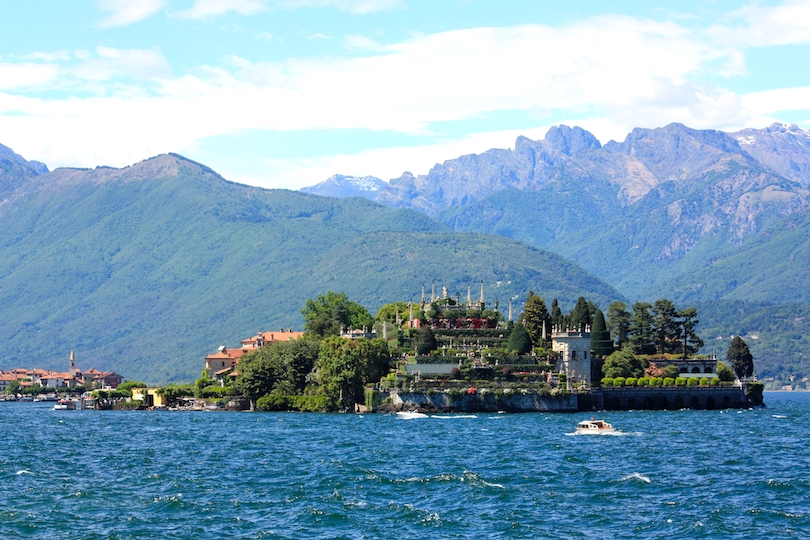
Italy’s second largest lake, Lake Maggiore, is a stunning sight. The elegant stretch of water glimmers under the Piedmont sun, with her many scenic towns reflecting on the water below. It’s thus no surprise that Lake Maggiore is known as the Eden of Italy.
Such is her size. Lake Maggiore even ventures across the border to Switzerland while also touching the Italian region of Lombardy . Since the 1800s, this gorgeous location has been the scene of many local and international travelers and aristocrats. Many of which developed the beautiful architecture and lakefront villas you see today.
Along the lake’s edge are the charming towns of Angera, Stresa and Baveno, each with their own personality to discover. Add on the Borromean Islands and you’ll quickly have a packed itinerary. See them all from the water on a kayak, or jump onboard the Lake Steamer, to explore in comfort.
Map of Places to Visit in Piedmont, Italy
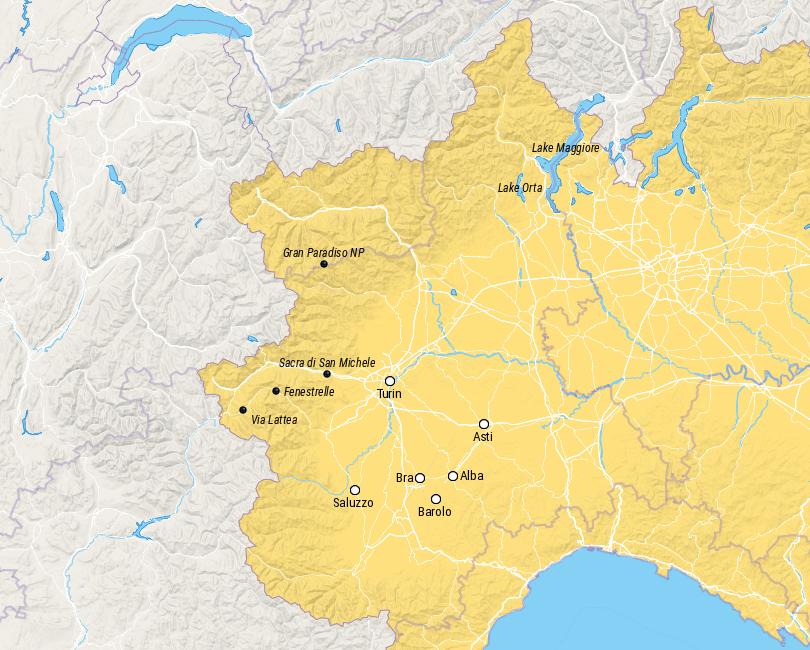
Share this post:
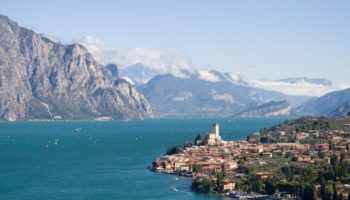
10 Top Destinations in Northern Italy
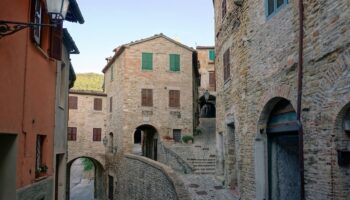
14 Best Places to Visit in Marche, Italy
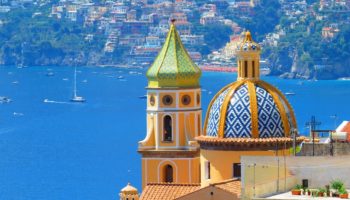
10 Most Beautiful Amalfi Coast Towns
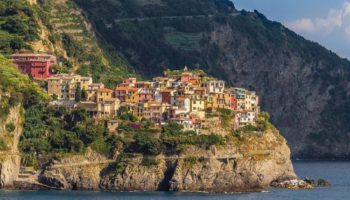
5 Beautiful Villages of Cinque Terre
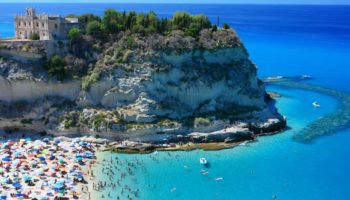
10 Best Beaches in Italy
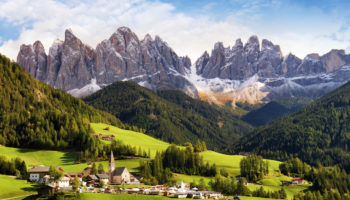
20 Most Beautiful Regions of Italy
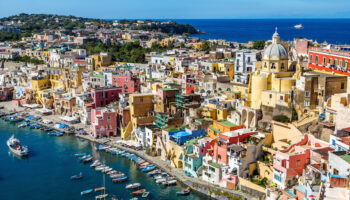
10 Most Beautiful Italian Islands
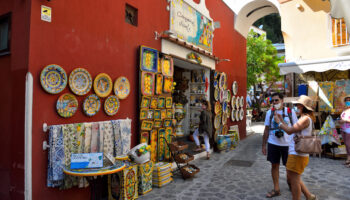
14 Best Things to do in Positano, Italy
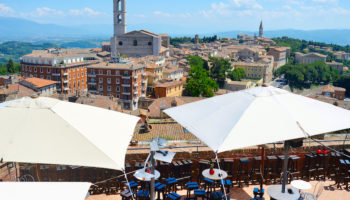
10 Most Underrated Destinations in Italy
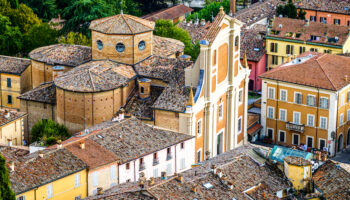
12 Best Places to Visit in Emilia-Romagna, Italy
Reader interactions, leave a reply cancel reply.
Your email address will not be published. Required fields are marked *
This site uses Akismet to reduce spam. Learn how your comment data is processed .
Must-see attractions in Piedmont
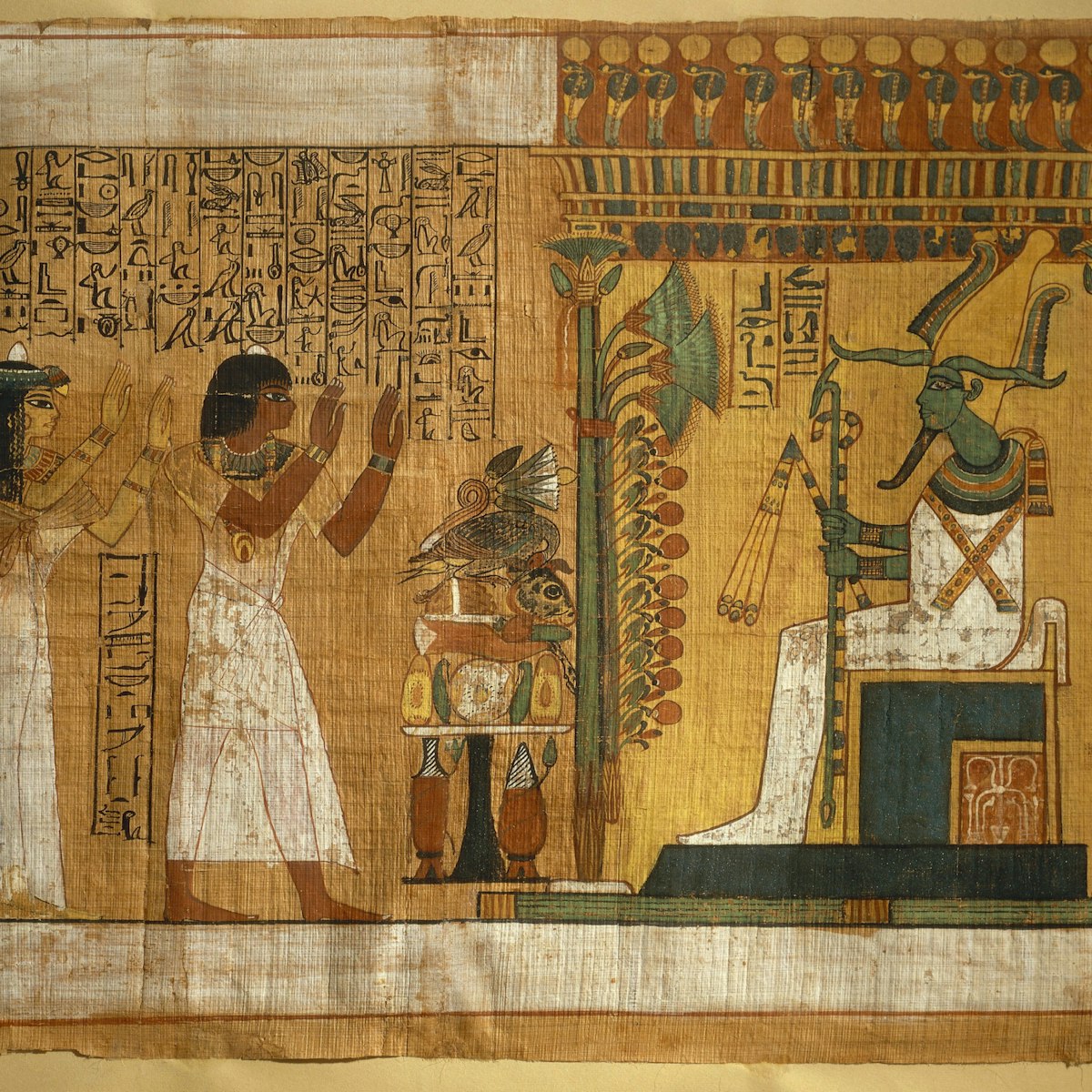
Museo Egizio
Opened in 1824 and housed in the austere Palazzo dell'Accademia delle Scienze, this Turin institution houses the most important collection of Egyptian…

Castello di Rivoli
Some 21km west of Turin, the Castello di Rivoli Museum of Contemporary Art is a giant of modern art in Piedmont. Its ambition and reach, not to mention…
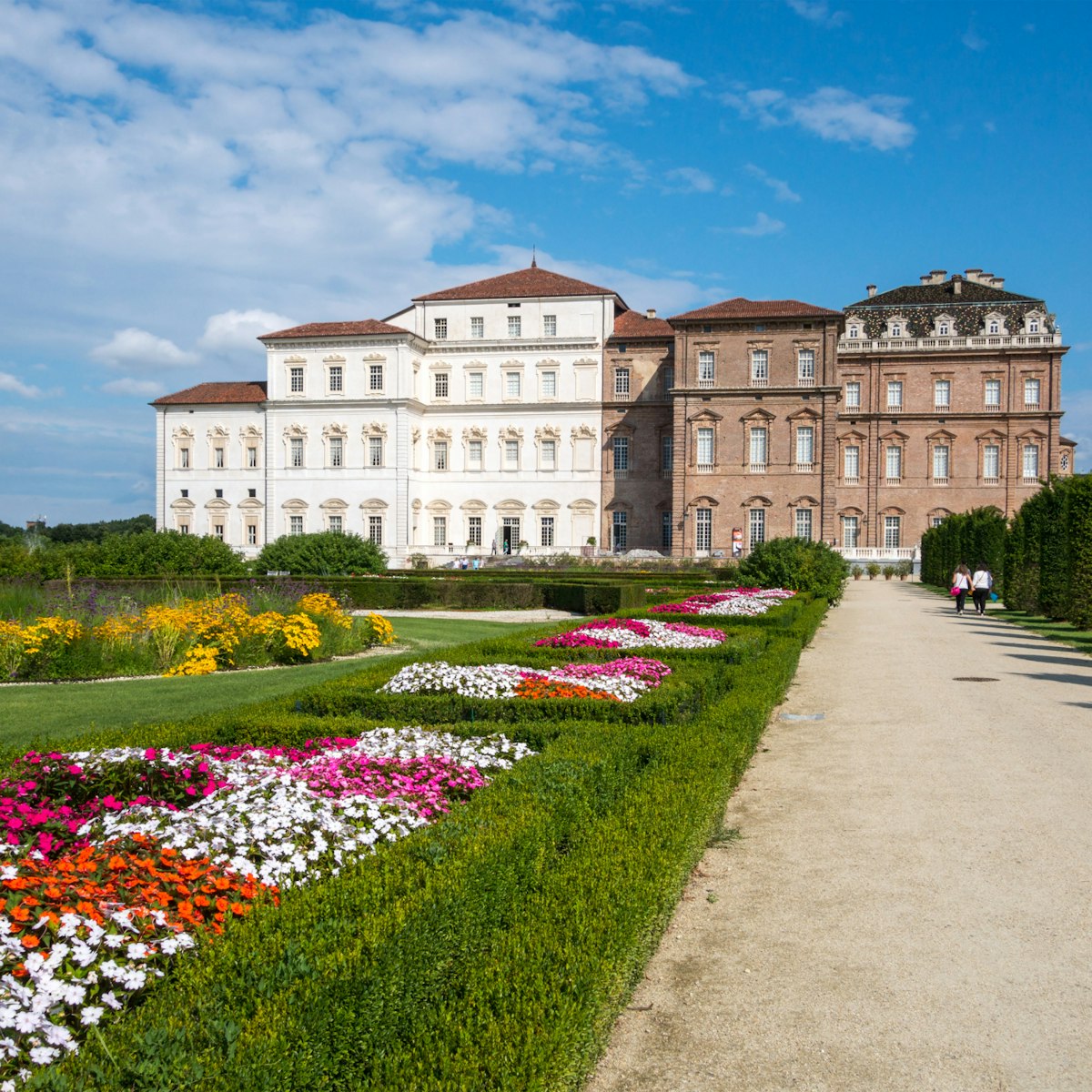
Reggia di Venaria Reale
OK, it may not enjoy the weighty publicity of its French counterpart, but this is one of the largest royal residences in the world, rescued from ruin by a…
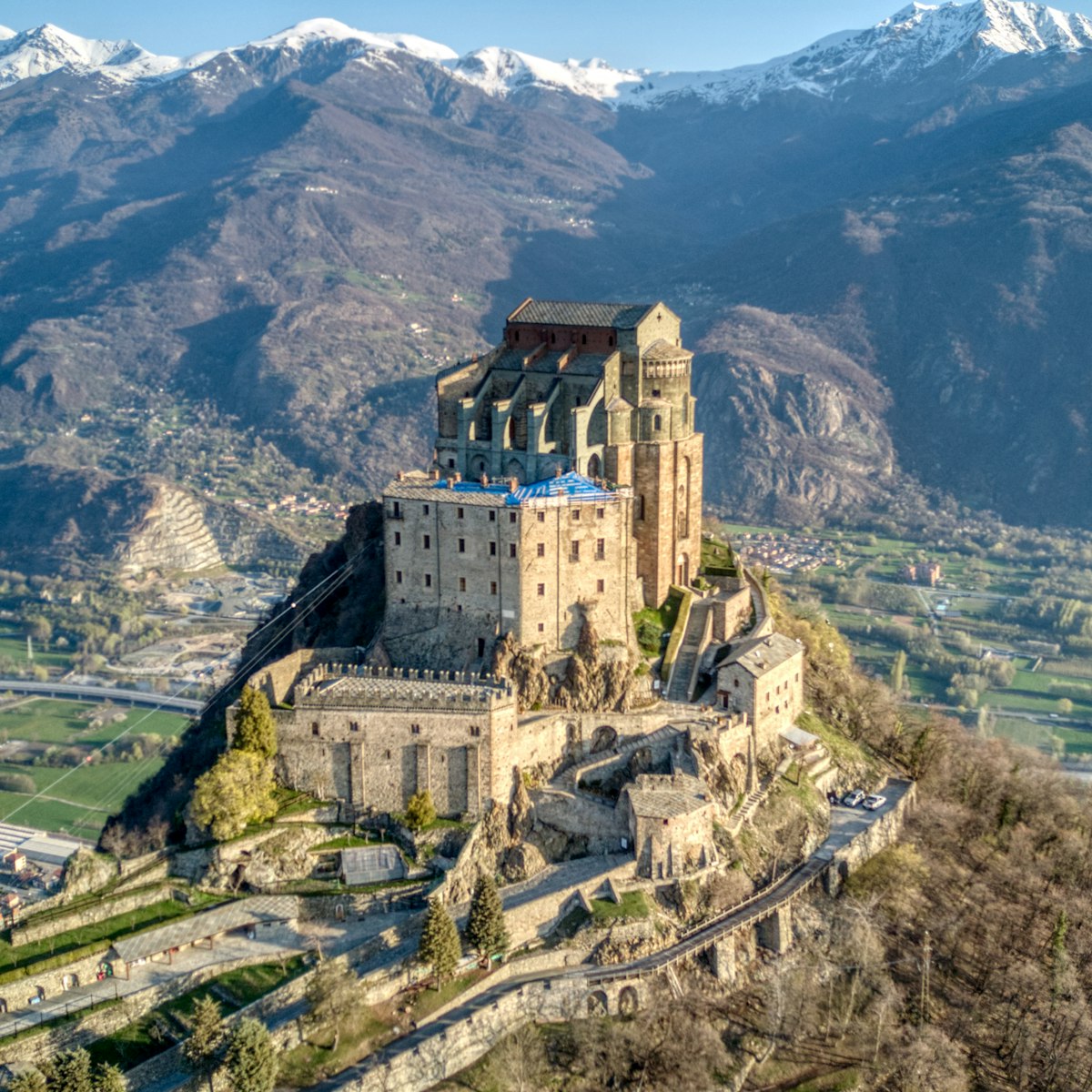
Sacra di San Michele
This Gothic-Romanesque abbey, brooding above the road 14km from Turin, has kept sentry atop Monte Pirchiriano (962m) since the 10th century. It housed a…

Museo Nazionale dell'Automobile
As the historic birthplace of one of the world's leading car manufacturers – the ‘T’ in Fiat stands for Torino – Turin is the obvious place for a car…

Palazzo Reale
Statues of the mythical twins Castor and Pollux guard the entrance to this eye-catching palace and, according to local hearsay, also watch over the…
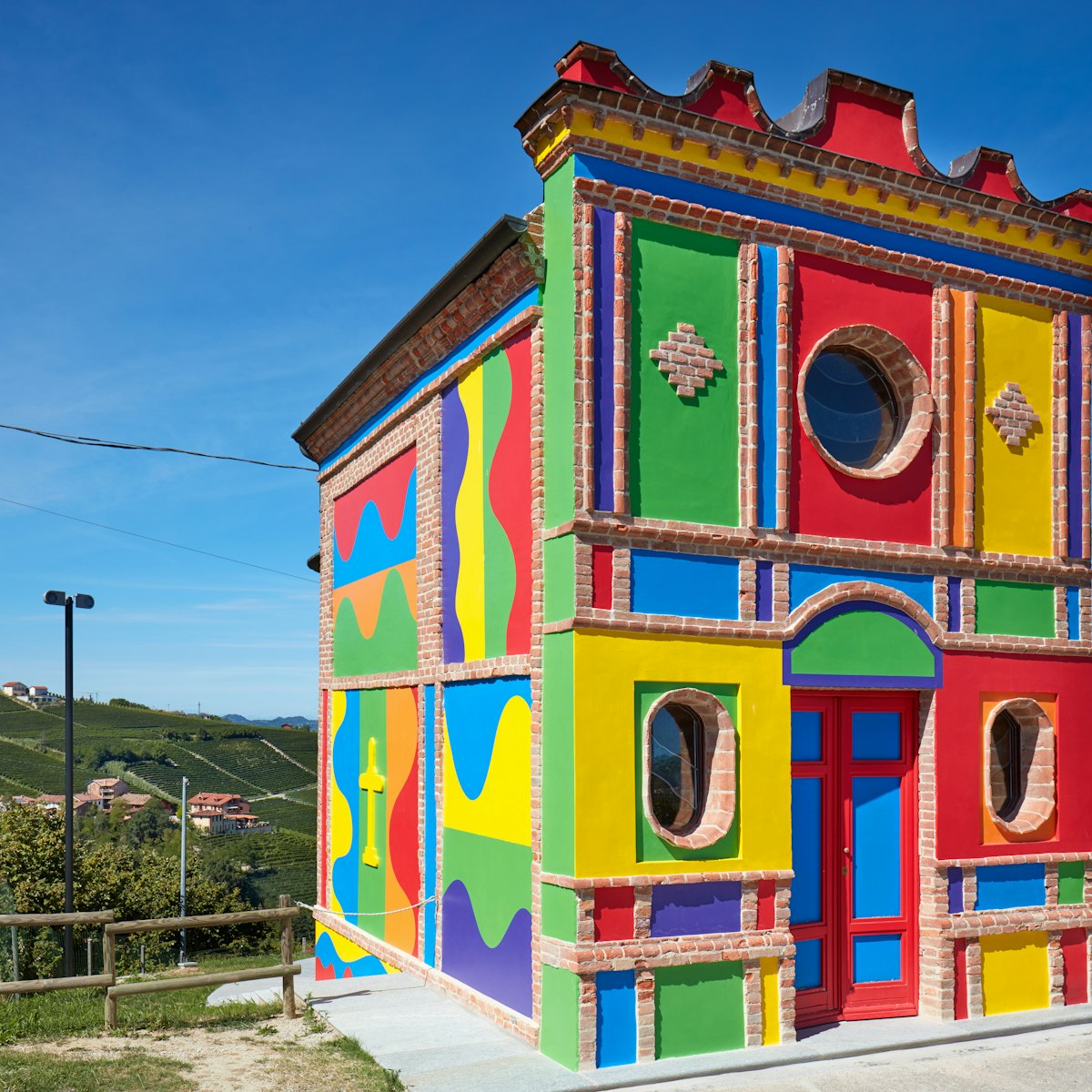
Cappella del Barolo
Langhe, Roero & Monferrato
Alba's winemaking-restaurateuring Ceretti family has commissioned a number of site-specific artworks in the region and this never-consecrated chapel is…
Museo Casa Mollino
Architect-designer-artist Carlo Mollino is perhaps Turin's most intriguing son and a quintessentially 20th-century Torinese. The little-known Museo Casa…
Cantine Bosca
Some 28km south of Asti, the Cantine Bosca is one of several historic wineries that produce the famed sparkling wine of the area (the DOCG Asti Spumante,…
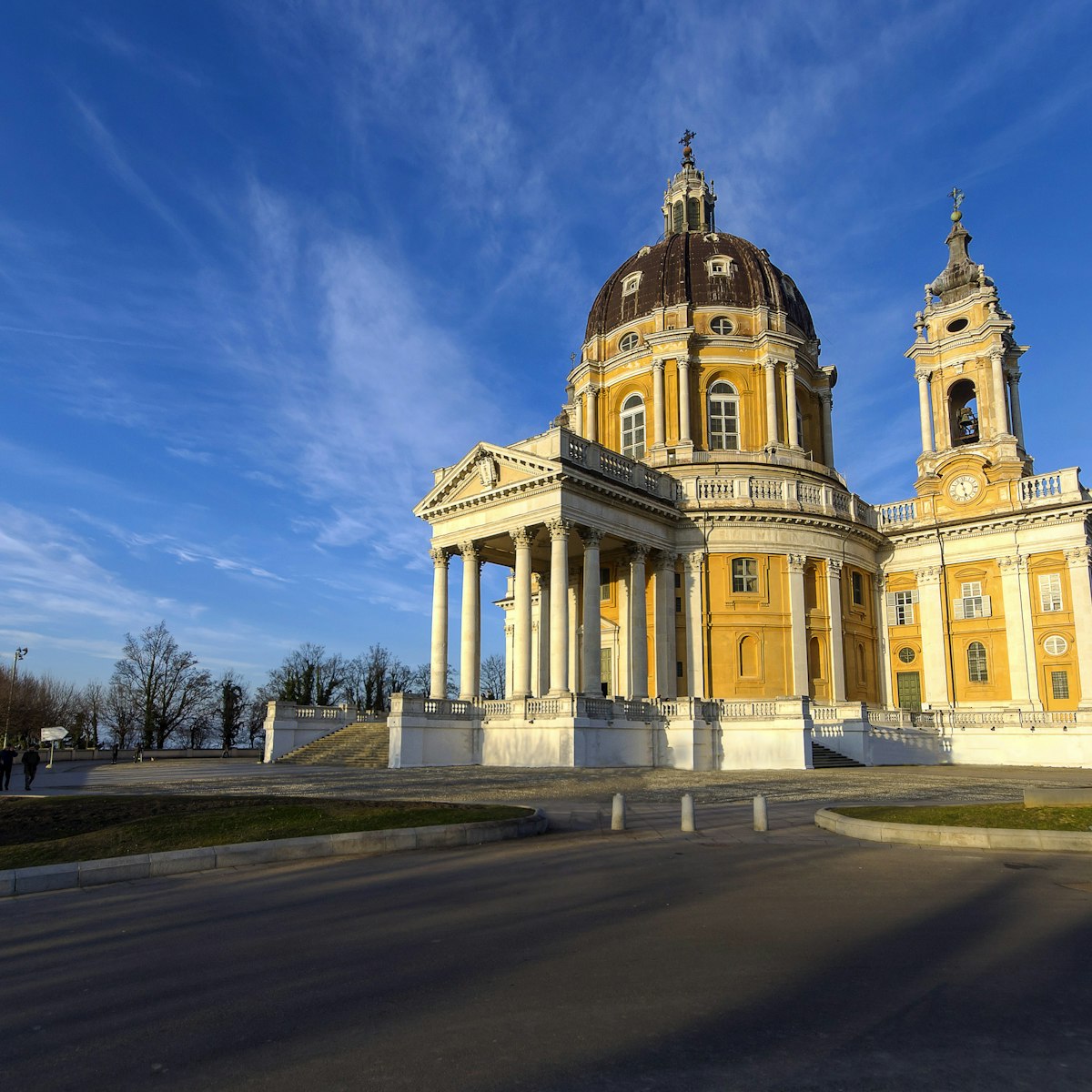
Basilica di Superga
Vittorio Amedeo II's 1706 promise, to build a basilica to honour the Virgin Mary if Turin was saved from besieging French and Spanish armies, resulted in…
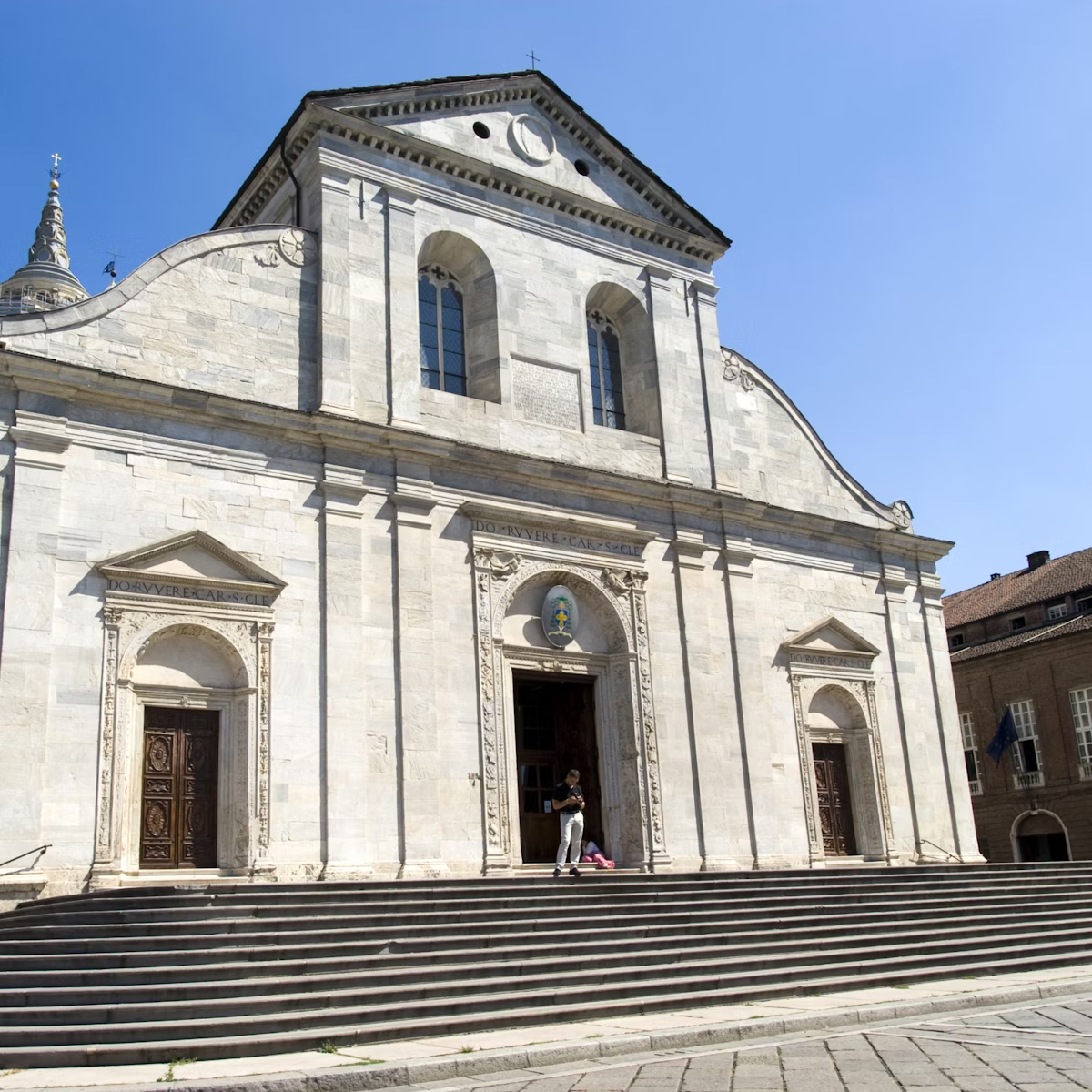
Cattedrale di San Giovanni Battista
Turin's cathedral was built between 1491 and 1498 on the site of three 14th-century basilicas and, before that, a Roman theatre. Plain interior aside, as…
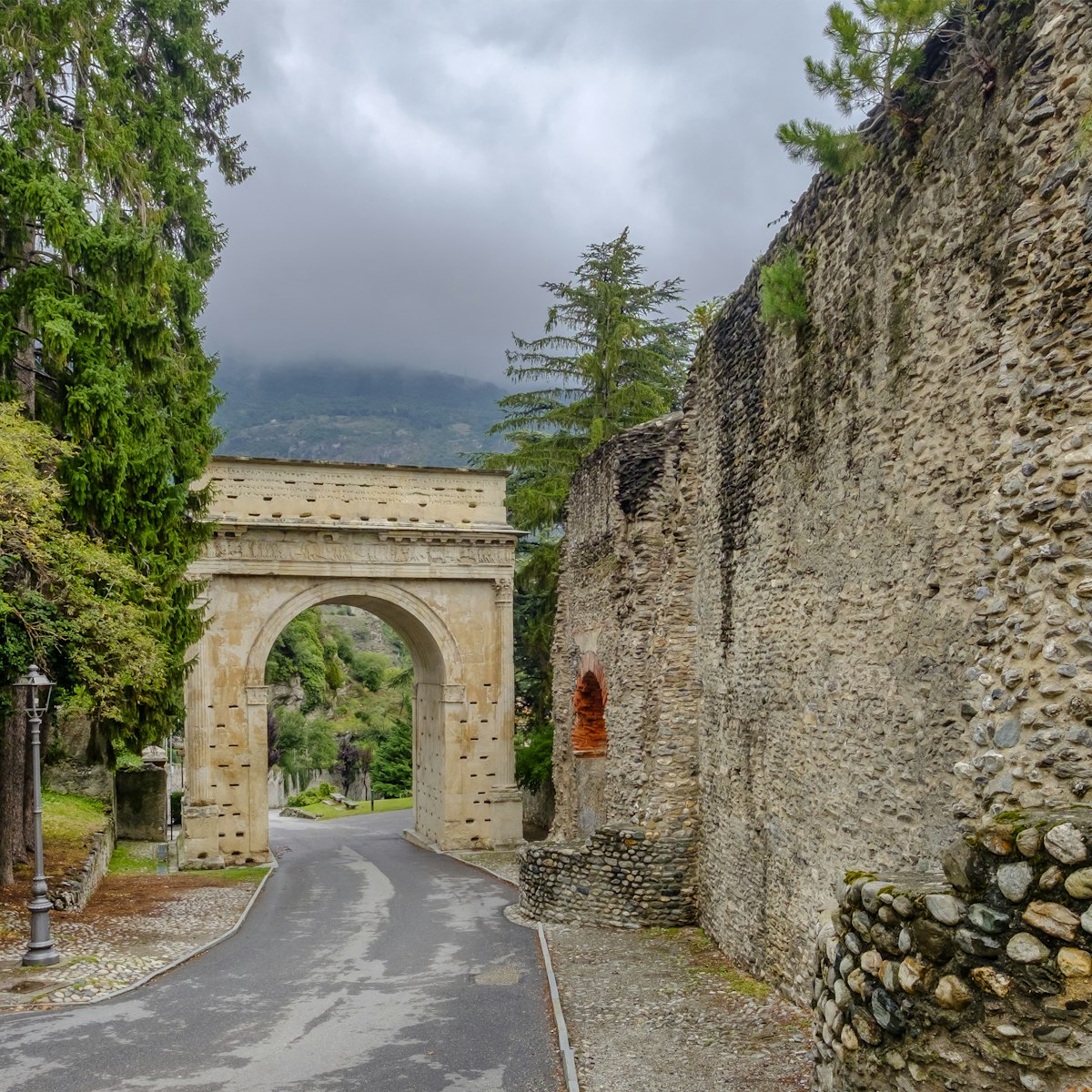
Arco d'Augusto
The pristine and impressive triumphal Arch of Augustus, dating to 9BC, sits just outside the centre of town. It marks the transition of power between the…
Museo Lavazza
Set in the architecturally striking new headquarters of the famed coffee chain, the Museo Lavazza takes you deep into the world of the heady caffeine…
Museo Nazionale del Risorgimento Italiano
After extensive renovations, this significant museum reopened in 2011 to coincide with the centenary of the Risorgimento (reunification period). An…
Pinacoteca Giovanni e Marella Agnelli
On the rooftop of the Lingotto building, 3km south of the centre, this intimate gallery houses the personal collection of late Fiat head Gianni Agnelli,…
Piazza Castello
Turin's central square is lined with museums, theatres and cafes. The city's Savoy heart, although laid out from the mid-1300s, was mostly constructed…
Juventus Museum
The state-of-the-art Juventus Stadium has a museum that will blind you with its silverware (32 Serie A titles – and the rest!) and proudly recounts how it…
Fondazione Merz
The Arte Povera powerhouse, Mario Merz, was born in Milan but spent most of his creative life in Turin. This foundation space, an evocative reworking of…
Museo del Vino a Barolo
A capricious jaunt through the history of viticulture via light, film and installations, care of the imagination of Swiss designer François Confino (who…
Galleria Civica d'Arte Moderna e Contemporanea
GAM was one of Italy's first modern-art museums and has an astounding 45,000 works in its vaults dedicated to 19th- and 20th-century European artists,…
Parco Naturale Alpi Marittime
Piedmont's largest park is home to spectacular landscapes, encompassing wildflower-filled grasslands, topaz lakes, shimmering glaciers and jagged mountain…
Fondazione Sandretto re Rebaudengo
This classic white-cube contemporary gallery space was created with Italian super curator Francesco Bonami and runs a great exhibition program showcasing…
Museo Ettore Fico
This sleek, contemporary gallery joins Turin's already stellar collection of pivotal art foundations. Set in an old factory in a hipster, postindustrial…
Museo Nazionale del Cinema
Housed in the Mole Antonelliana, this enjoyable museum takes you on a fantastic tour through cinematic history. Memorabilia on display includes Marilyn…
Mole Antonelliana
The symbol of Turin, this 167m tower with its distinctive aluminium spire appears on the Italian two-cent coin. It was originally intended as a synagogue…
Turin's former Fiat factory, one of Italy's most praised examples of early-20th-century industrial architecture, is 5km south of the city centre. It was…
Museo della Sindone
Encased in the crypt of Santo Sudario church, this fascinating museum documents one of the most studied objects in human history: the Holy Shroud. Despite…
Palazzo Madama
A part-medieval, part-baroque castle built in the 13th century on the site of the old Roman gate, this palazzo is named after Madama Reale Maria Cristina,…
Parco Valentino
Opened in 1856, this 550,000-sq-metre French-style park kisses the banks of the Po and is filled with joggers, promenaders and lovers night and day…
Torre di Barbaresco
Take the lift to the rooftop of this restored medieval tower for a sublime view over wine country. You'll see the meandering Tanaro River, various other…
Centro Culturale San Giuseppe
A converted church turned cultural centre, this is a lovely place to catch a choral or chamber music performance, or undertake a bracing hike up 134 steps…
Borgo Medievale
Perched over a scenic stretch of the Po River, the Borgo Medievale is a small recreated 15th-century village that was actually built for the 1884 Turin…
Giardino Reale
These royal gardens, freely accessed via the Palazzo Reale, make a tranquil setting for a bit of down time in the city centre. Flower-lined pathways,…
Torre Troyana o Dell'Orologio
During the late 13th century the region became one of Italy's wealthiest, with 150-odd towers springing up in Asti alone. Of the 12 that remain, only this…
Palazzo Mazzetti
This 18th-century residence of the Mazzetti family houses the civic museum and an information office. Downstairs you'll find Roman artefacts and a scale…
Porta Palatina
The low-key and little-visited Porta Palatina is, in fact, one of the best preserved 1st-century BC Roman gateways in the world. Together with the remains…
Torre Civica
The burnt-red-tiled rooftops of Saluzzo's old town make a timeless picture from the loggia (balcony) beneath this 15th-century belfry, which is reached…
Piazza Galimberti
Arriving in Cuneo's gargantuan main piazza, you'd think you'd just touched down in a capital city. Finished in 1884, it sits aside an older portico…
Roman Amphitheatre
Razed to the ground by Napoleon's armies, little remains of this 1st-century amphitheatre, but it's still an atmospheric spot to stroll around.
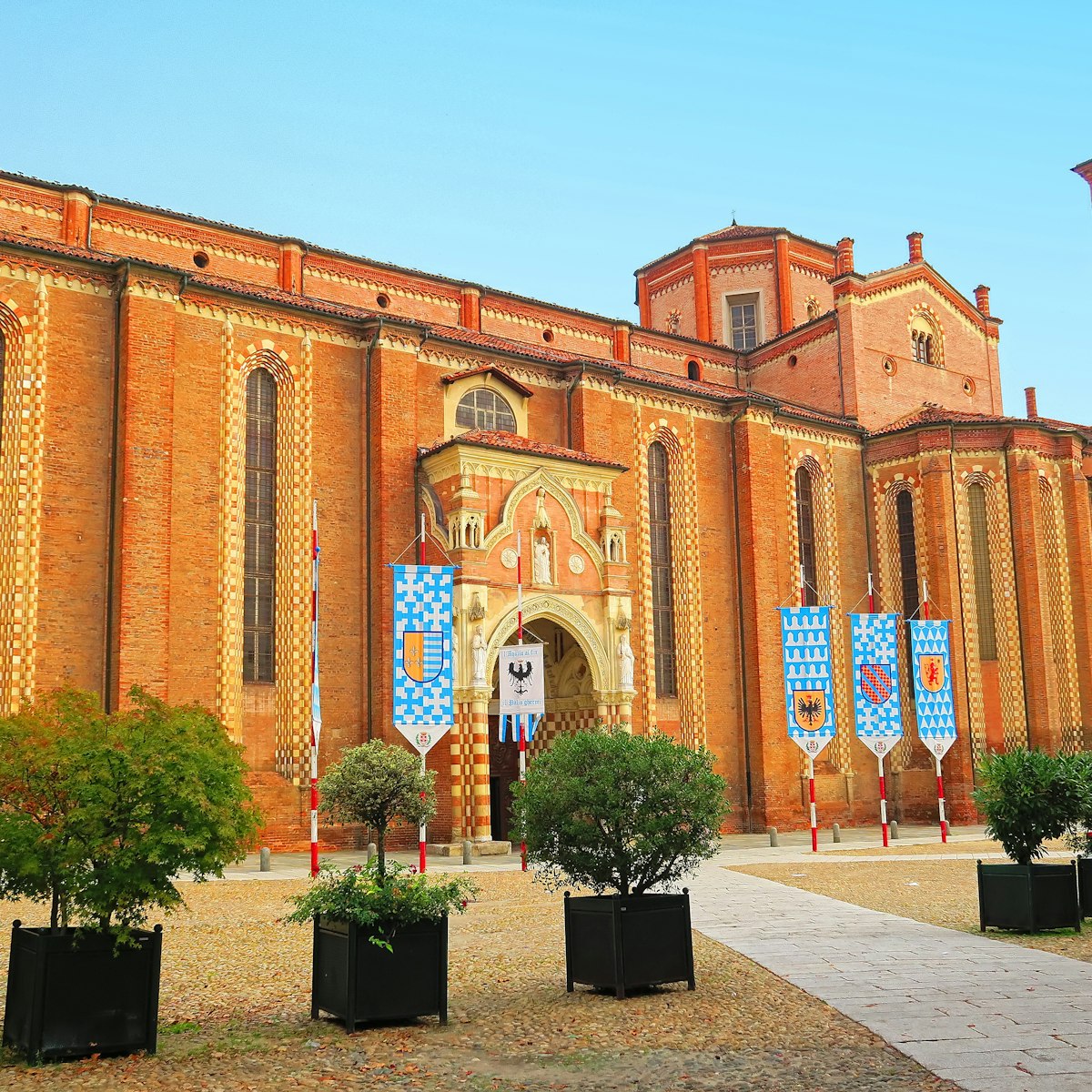
Cattedrale di Santa Maria Assunta
Rising above Asti's historic core is the enormous belfry of this 13th-century Romanesque-Gothic cathedral. Its grandly painted interior merits a peek.
More destinations you need to see
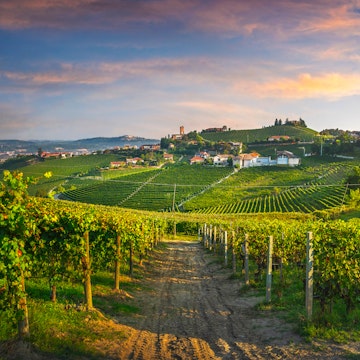
Get the free guide: 10 Experiences Only in Friuli-Venezia Giulia - Send Now!

Town of Alba/Photo Audrey De Monte
Nutella, Lavazza, Vermouth, Slow Food, Espresso itself, the famous moka pot, home of Martini and Cinzano, Campari (for all you Negroni-lovers), Eataly! Make a pilgrimage to the region where many “Made In Italy” items have their origins. If you are a food and wine enthusiast, you will have a fantastic time in this region, especially if you’re visiting during truffle season, wine harvest season, or Turin’s chocolate festival. Some of the best-known wines from Piedmont are also some of the best-known Italian wines: Barolo, Barbaresco, Nebbiolo, Barbera, and Dolcetto.
Piemonte has several attractions related to its one-time royal family, the House of Savoy, who moved in the mid 16th century from Chambery, France to Turin. With its status as the original capital of Italy, from 1861 to 1864, the royal family’s palaces, now UNESCO World Heritage sites, include the Palazzo Reale and Castello del Valentino in Turin, the Palazzina di Caccia in Stupinigi, and the Palace in Venaria. Additionally, Turin houses one of the most venerated relics in the Catholic Church, the legendary Shroud of Turin.

A few facts on Piemonte
- Piedmont is the English name for the region – the Italian name is Piemonte, which means literally “the foot of the mountains”: “ pie” stands for foot and “ monte” for mountain.
- The capital of Piemonte is Torino (Turin)
- There are five UNESCO World Heritage Sites in Piemonte: the residences of the Royal House of Savoy in and around Turin; the Sacri Monti (nine 16th-17th century chapels and other religious buildings); Prehistoric pile dwellings around the Alps; Vineyard Landscape of Piemonte: Langhe-Roero and Monferrato
- Piemonte is bordered by the Italian regions of Aosta Valley, Lombardy, Liguria, and Emilia-Romagna, and it also shares borders with France and Switzerland
- Famous people from the Piemonte region include Vittorio Emanuele II (the first King of a united Italy whose name appears on monuments and streets all over the country), Giovanni Agnelli (founder of the FIAT car company), Cesare Pavese (20th century writer, poet), and Paolo Conte (singer and pianist)
- People from Piemonte are called piemontesi (plural). The singular version is piemontese
- Language: Italian is the official language in Piemonte. However, Piemontese—which linguists consider a separate language and the Italian government says is a dialect—is spoken by about 3 million people by some accounts.
What to Do & See in Piemonte
Here are a few of the cities and towns of Piemonte you might have on your list:
- Turin: Capital of Piemonte, Italy’s first capital, Shroud of Turin is in the cathedral, home to world-class Egyptian Museum & National Cinema Museum
- Alba: Home of Ferrero company (makers of Nutella), famous for truffles & wine, historic center ringed by ancient Roman walls
- Asti: Important town in Piemonte wine region, historic city contained by medieval walls, Palio di Asti is Italy’s oldest palio race
- Barolo: Very small town famous for its red wine
- Cuneo : The capital of Italy’s Cuneo province, Cuneo is worth visiting for a few days. The beautiful arcades of this 12th-century town give it an elegant appearance. You can use Cuneo as a base for excursions into the mountains and even into France.
- Stresa: Popular tourist resort town on Lake Maggiore
- Lake Maggiore: Italy’s second-largest lake, part of the lake is in Switzerland’s Italian canton (Ticino)
- Lake Orta: the most romantic of all the Italian lakes
- Pinerolo: The gateway to the scenic Val Chisone, the alpine town of Pinerolo offers good skiing in the winter and mountain hiking in the summer.

Piemonte, literally “the foot of the mountains” is nestled under some of the most gorgeous peaks of the AlpsPiedmont’s geography span’s gorgeous lakes, rolling valleys, and Italy’s tallest peaks. Here’s a brief guide to Piemonte’s top destinations, from elegant cities and charming villages to storied castles and more:
The capital, Turin
Turin, called Torino in Italian, virtually unknown outside of Europe, is the crown-jewel of Northern Italy. With elegant royal palazzi, medieval architecture, contemporary art, elegant gardens and public squares and 12 miles of arcades grace much of the Left Bank of the Po River, and nearly a dozen museums to choose from, visitors to Piedmont could spend all their time just in Torino.
In addition to royal history, Turin reflects the history of the Risorgimento , the movement which led to Italian reunification. The Palazzo Carignano, where the Italian parliament met for the first time, is today a museum devoted to that time in Italian history. Also with the historic and elegant cafés, which served as a meeting place for such literary royalty as Puccini, and Neitzche, Dumas and Cavour, Turin has gifted the world with Fiat (the Agnelli family built Fiat into the world’s 7th largest car manufacturer), and has been known as the chocolate heart of Europe since the 1600’s. Hot chocolate and chocolate-hazelnut spread were both invented here.
If museum fatigue sets in, stroll the elegant boulevards and piazzas of Torino, tour the massive flagship Eataly store, or take a break in one of Torino’s historical coffee houses like Caffè San Carlo, Al Bicerin or Caffè Torino. Torino has the grace of Paris and the splendor of Vienna, mixed with the rich culture and utter beauty of Italy.
- The Shroud of Turin, believed to be the cloth that covered Jesus, was brought to the city by the Savoy
- Chocolate Festival, CioccolaTÒ
- Visit the Museo Egizio, the best collection of Egyptian artifacts outside of Cairo
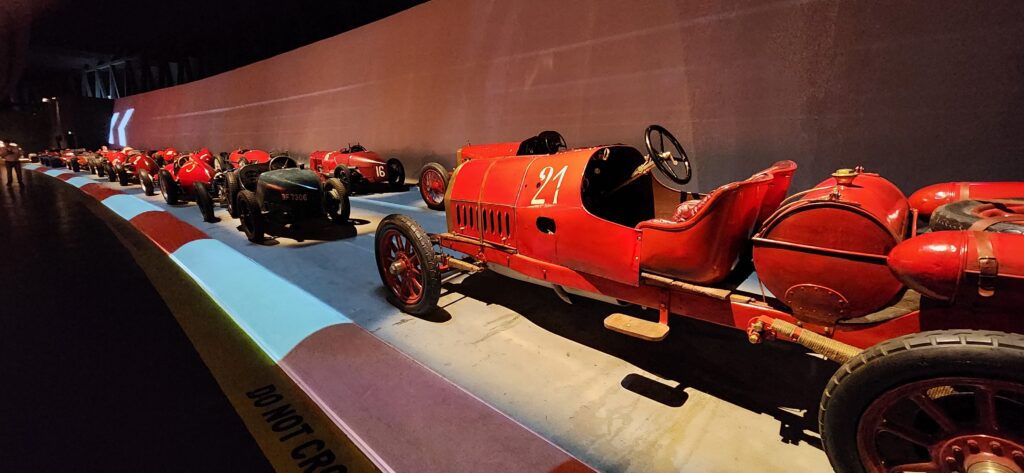
Museo Nazionale dell’Automobile/Photo Audrey De Monte
- National Cinema Museum atop Turin’s iconic Mole Antonelliana building
- Palazzo Reale to see Greek and Roman archaeological treasures and the personal art collection of the Savoy dynasty, among other masterpieces. Stroll through Palazzo Reale’s magnificent gardens, from the same designer who created the renowned gardens of Versailles.
- Torino’s Mole Antonelliana, the 167-meter-tall domed building that marks the city’s skyline, is home to the Museo Nazionale del Cinema, showcasing equipment and film memorabilia from the very first motion pictures to modern day cinema
- Lavazza museum dedicated to all things coffee
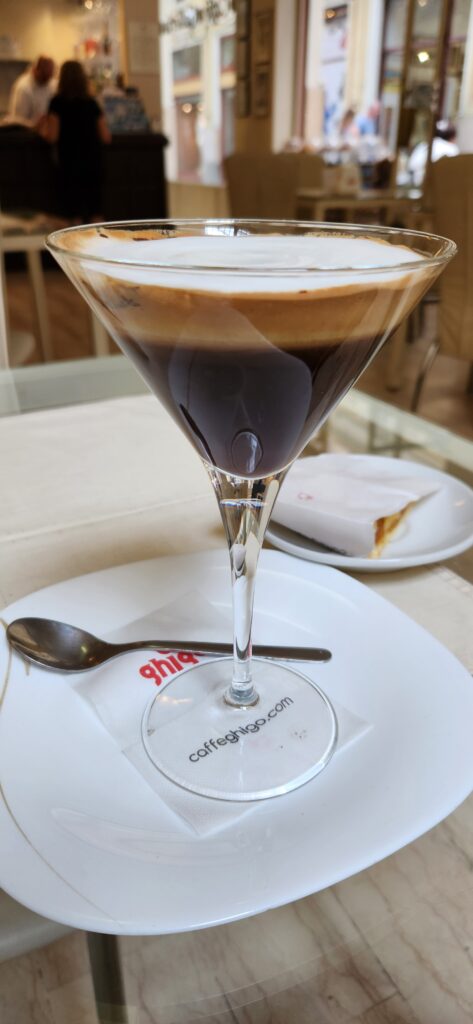
Enjoying a moment with a Bicerin!/Photo Audrey De Monte
- The city is the birthplace of the aperitivo which is the Italian tradition of having evening drinks and snacks
- Turin is a celebration of Italian literature. Writers such as Umberto Eco, Mark Twain, Primo Levi, Italo Calvino, Natalia Ginzburg, Friedrich Nietzsche have admired the city
- Visit the daily Mercato di Porta Palazzo, one of the largest outdoor food markets in Europe
- Eat at Ristorante del Cambio, Turin’s most famous restaurant, serving meals since 1757. Their Pollo Marengo , was invented for Napoleon after an early triumph over the Austrians in the northern hills.
- Eataly , the upscale chain selling high-quality Italian foods and wines, was founded right in the region, when Italian businessman Oscar Farinetti converted a closed vermouth factory in Turin into the first location of Eataly. That was in 2007 and now Eataly boasts 27 stores around the world. The headquarters are still in Monticello d’Alba, in the province of Cuneo.
TIP: Get the Torino+Piemonte Card for free or reduced entrance to museums, monuments, castles, fortresses and royal residences in Turin and the Piedmont region.
Visit Venaria Reale
One of Italy’s Top Five Tourist Attractions is in Turin. The Venaria Palace is a really remarkable place, perhaps even bigger and more impressive than the Palace of Versailles. With a roughly 862,000 square-foot floor plan, the Venaria Reale is one of the biggest palaces in the world. The name of the palace derives from the Latin Venatio Regia, which means “Royal Hunt”.
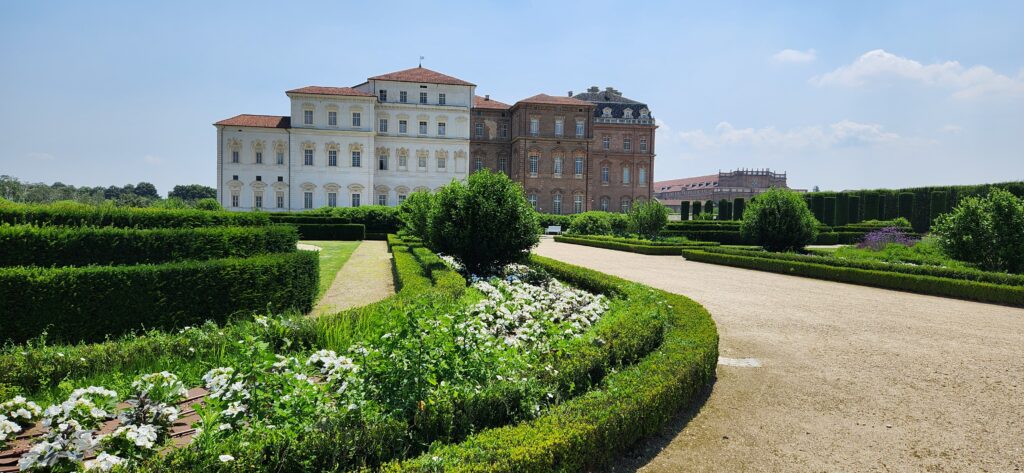
Venaria Reale/Photo Audrey De Monte
The 17th-century palace, together with the other buildings that make up the Residences of the Royal House of Savoy, is a UNESCO World Heritage Site. A Baroque masterpiece just outside of Torino, visitors can tour the palace, including the breathtaking Galleria Grande, the Theater of History and Magnificence dedicated to the Savoy family and legacy, and approximately 10,764 square feet of frescoes. Thanks to an eight-year, multi-million dollar restoration, visitors can also stroll more than 120 acres of restored gardens. Originally designed as an estate for hunting and leisure for Duke Carlo Emanuele II of Savoy and Duchess Maria Giovanna Battista, the Venaria comprises the palace, gardens, a park for hunting grounds, and an entire village, not to mention sculptures, fountains, staircases, terraces, ponds, and frescoes.
Visit Sacra di San Michele
Another splendid place is a monastery, very like that of the famous novel Name of the Rose. The monastery, called the Sacra di San Michele, is an unbelievable sight. Nobody really knows when this imposing monastery, high on a hilltop to the west of Turin was built. Local legend has it that it was built by angels in the 11th century. Whenever it was built the Sacra di San Michele is an incredible sight to behold as you drive out from Turin. Exploring the monastery is even more overwhelming. Once you enter through the famous Gate of the Zodiac you are literally in another world, another age entirely.
The Mountains
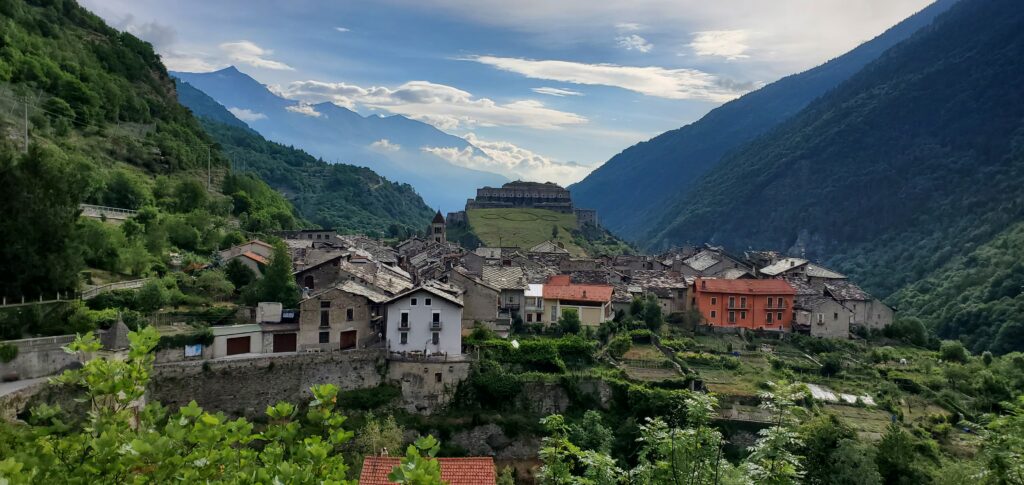
Fort of Exilles in the Val di Susa in the region of Piedmonta medieval castle, which has sat high above the town since the 10th century/Photo Audrey De Monte
Piedmont is ruled by mountains and beautiful valleys, making it a great destination for winter sports lovers as well as Alpine aficionados looking to hike in the warmer months.
The northwest corner of the Alps where the Mont Blanc stands, highest peak of Europe, is actually part of the Aosta valley, a separate Italian region. Monviso is, therefore, the highest peak in Piedmont, with its 3841 m above the sea level (12,600ft) a favorite summer destination for hikers.
Made up of two different valleys, the northern Val di Susa and southern Val Chisone, many of the 2006 Winter Olympics events were held in the state-of-the-art facilities of the Via Lattea. Val di Susa is the Alpine corridor down which Carthagian General Hannibal made his way to Rome. Visitors can ski roughly 400km of runs through at least seven different resorts, including a jaunt into France to Montgenèvre’s slopes, all included with the Via Lattea ski pass.
One of Italy’s largest nature reserves Gran Paradiso is found in these mountains. The other mountain area that is one of my favorites is the Val di Susa. One of the great attractions of this area is the famous castle which housed the man in the iron mask – the Castle of Exilles.
Besides spectacular natural beauty, lovely little towns and a unique culture these valleys are also home to The Great Wall of Europe – the greatest defensive structure ever built in Europe and second only to the Great Wall of China in terms of length, Fenestrelle Fortress. Near Pragelato is the largest fortification in Europe and the longest wall construction after the Great Wall of China: Forte di Fenestrelle. Building started in 1708 by Savoy Duke Vittorio Amedeo II. It comprises three forts: San Carlo, Tre Denti and delle Valli are joined together by a staircase of around 4,000 steps. The entire structure is about 5 kilometres long and climbs 700 metres up the mountainside. An exhibition of military uniforms reconstructs some battle scenes from the Risorgimento up to the Second World War. In summer there are also music concerts and performances.
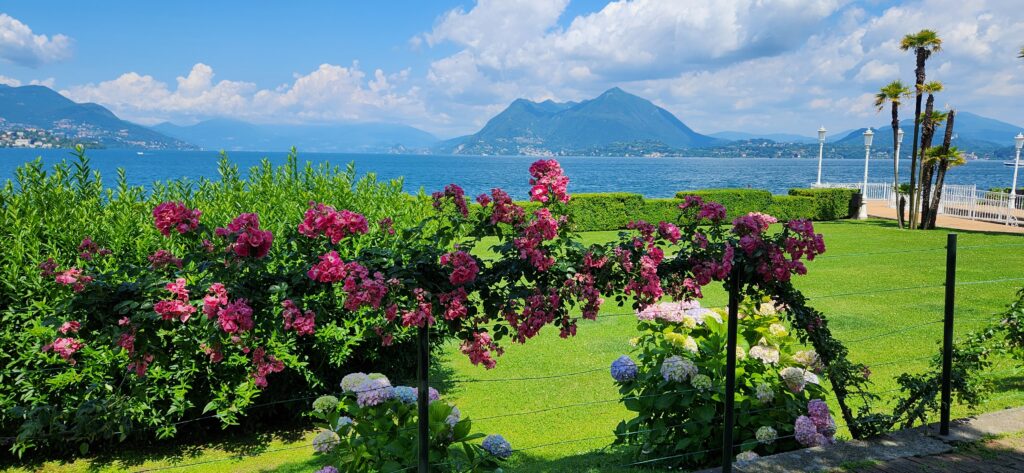
Stresa on Lake Maggiore/Photo Audrey De Monte
Piemonte is also home to Lago Maggiore, Italy’s beautiful resort lake. The lakeside town of Stresa has been a favorite destination for artists and writers since the 19th-century (parts of Hemingway’s “A Farewell to Arms” was set here). Come to see Isola Bella Island, known for its monumental palace Palazzo Borromeo. Take your time admiring the grace of marvelous white peacocks inhabiting the lush gardens – a scene as if straight from a fairy tale. Not only is it the perfect distance between Torino and Milan, it’s also the perfect jumping-off point to visit the ancient villas and luxurious gardens of the Borromean Islands.
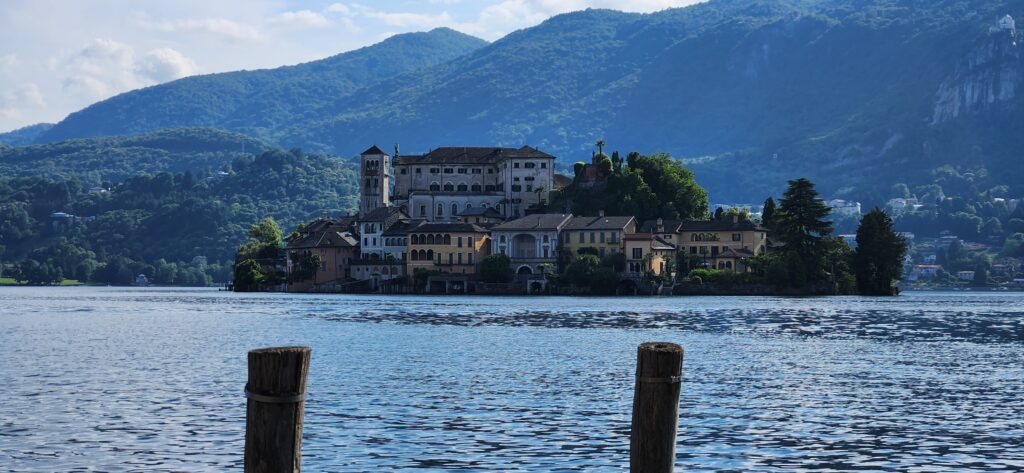
Lake Orta/Photo Audrey De Monte
Though Piemonte shares Lago Maggiore with Lombardy and even Switzerland, Lago d’Orta is in the region. Circled by forest, Lake Orta is perhaps the most peaceful and romantic of Italy’s northern lakes, and also the smallest. Orta enjoys far fewer international tourists, making it the perfect place to escape the crowds. Swim or enjoy a boat ride on the lake, tour the narrow streets of medieval Orta San Giulio or ferry over to tiny Isola San Giulio for a unique day trip.
The Valleys
The rolling valleys of the Langhe, Roero and Monferrato are a wine lover’s paradise. It’s the land of Piemonte’s famed white truffles, sweet hazelnuts, and outstanding chocolate production. Here Barolo, the king of wines, is produced, along with other world-class wines made from the prized Nebbiolo grape. The beautifully cultivated vineyards of the area stretching from Asti to Cuneo are interrupted only by hilltop towns and charming castles.
Visit Bra, the hometown of the Slow Food Movement, founded by Carlo Petrini in 1989 to prevent the disappearance of local food cultures and traditions. Every two years, Slow Food organizes the Cheese festival in Bra, with artisanal cheese makers from across the world.
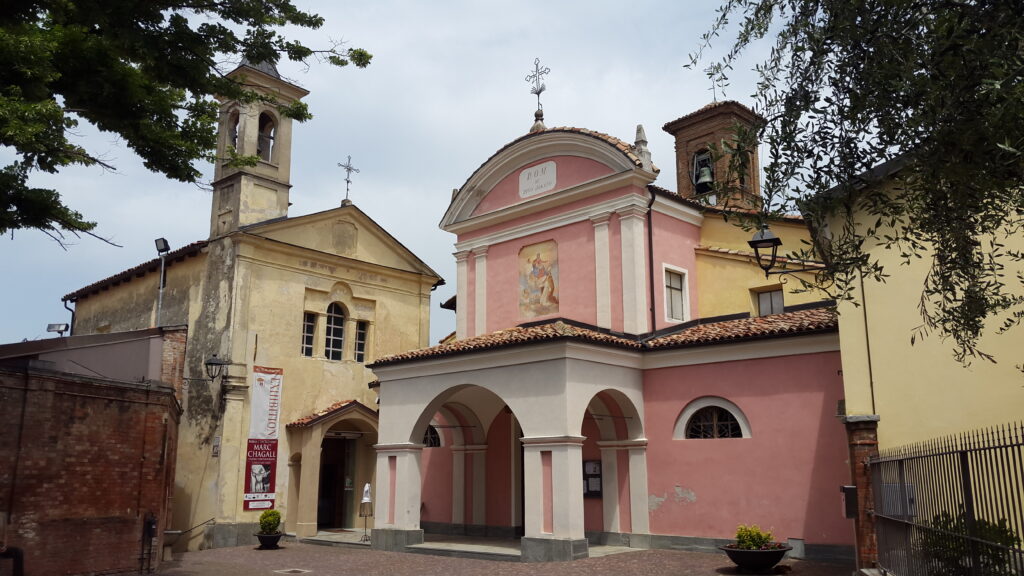
The town of Barolo/Photo Audrey De Monte
Barolo, the namesake of the famed Barolo wine and site of the Museo del Vino; and Barbaresco , with its 11-century medieval tower and equally noteworthy wines. As you tour the vineyards, dedicate some time to hamlets like Serralunga, La Morra, Diano d’Alba and Grinzane Cavour. Don’t miss charming Alba, the capital of the Langhe and home of the annual Fiera Internazionale di Tartufo Bianco (“The International White Truffle Festival”).
Hike in the Sacred Mountains
The nine summits of the Sacri Monti (Italian for sacred mountains) have been given UNESCO World Heritage status for the 16th and 17th century chapels built upon its slopes containing scenes from the life of Christ, the Virgin Mary and Saints in the form of painting or sculptures. Designed to celebrate different aspects of Christianity, these tiny structures not only have a deep spiritual history, but are also beautifully integrated into the surrounding nature of Piemonte’s valleys, forests, and lakes.
Catch the Spring Vibes as Millions of Tulips Bloom
Every spring Turin is the place to admire colorful flower carpets as people from all over the world come to enjoy the beautiful tulip festival Messer Tulipano . It’s a great way to welcome spring into your life. You are sure to enjoy the reproduction of a magnificent floral arrangement of a million tulips created by the best florists in Italy.
This doesn’t just happen anywhere – but in one of the city’s most beautiful sights – the historic castle of Castello di Pralormo. Walk among the organized rows of tulips and admire the spring vibes. Stop to buy an original bouquet for yourself or your loved one. And if you are really into gardening, you can even get some flower bulbs of your favorite tulip variety to later plant at home! Imagine how they will bloom the next year as a daily reminder of your Italian trip!
Take part in the festivals
Of course, the international white truffle festival is held in Alba each fall, but there’s also the famous Cioccolatò chocolate fair every year in Torino. The Palio race of Siena enjoys worldwide acclaim, but each September Asti holds a Palio of its own, considered the oldest horse race in Italy. There is the Cheese Festival held every two years in the town of Bra. Or, for the adventure seeker, visit Ivrea during the epic Battle of the Oranges, a massive food fight celebrated each year during Carnival. During the Alba truffle festival, for serious truffle afficionados, the World Truffle Auction (Asta Mondiale del Tartufo Bianco d’Alba) at the beautiful Castello di Grinzane Cavour, is the highlight of the tuffle season, as truffles are auctioned off with proceeds going to charity.

14th-century Castle of Serralunga d’Alba/Photo Audrey De Monte
Wines of Piemonte
Piemonte is surrounded by mountains, the Alps to the North and the Apennines to the south. The slopes heading towards the Apennines is where you’ll find the quality wine production in Piedmont. The cold alpine air from the Alps and the warm air from the Mediterranean meet over Piemonte and create the ideal environment for quality wines, a large temperature variation between night and day. The typical day begins with morning fog that slowly burns off. This means the land higher up on the hills gets more sun, making the higher elevation vineyard sites the most coveted.

Wine tasting experiences in Piemonte/Photo Audrey De Monte
The unique natural beauty of this region was recognized by the World Heritage Committee of the United Nations body, which in 2014 added the ‘vineyard landscape of Piedmont: Langhe-Roero and Monferrato to its elite group of UNESCO cultural and natural sites. The area includes the towns of Barolo, Castiglione Falletto Grinzane Cavour, La Morra, Monforte d’Alba, Novello and Serralunga d’Alba in the Barolo DOCG, as well as Barbaresco and Neive in the Barbaresco DOCG. The region’s primary grape varieties are Barbera (31%), Moscato (22%), Dolcetto (13%), and Nebbiolo (10%).
Hills and towns are every bit as picturesque as the better known Tuscan ones, and in my opinion even more so. In fact there are more hills per square mile here than in Tuscany and set amongst these hills are a few of my favourite villages: Barolo, La Morra and Neive. Autumn is the time to visit, this is when vineyards are a blaze of colour and every small town has a local truffle, mushroom or wine festival. Nothing beats wondering around historic old towns savouring local delicacies and great cheeses. Talking of old towns don’t miss Saluzzo, a little to the west of Le Langhe. This wonderful and as yet undiscovered old town, perched on a glorious hilltop, is just superb.
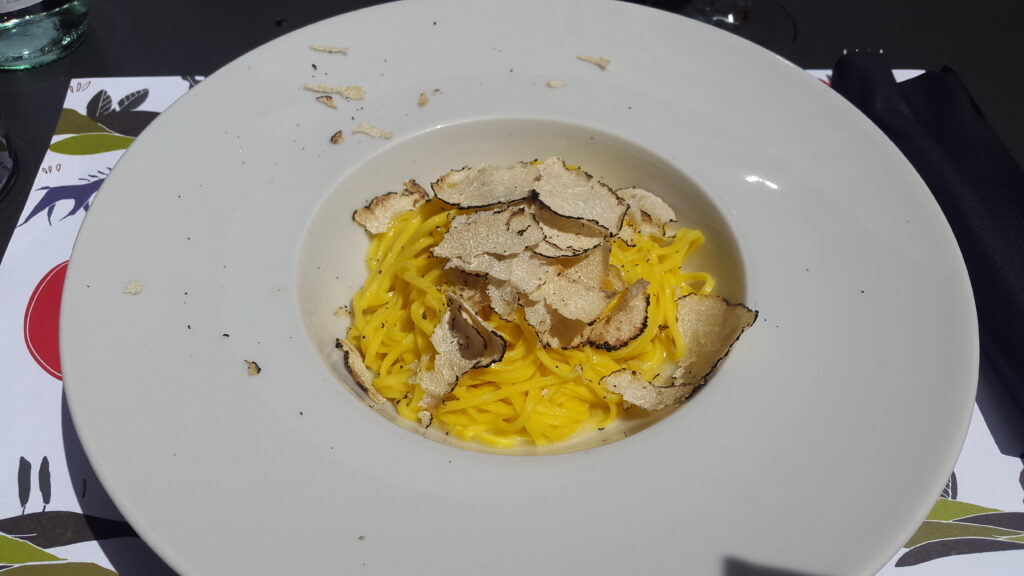
Relish in the local dish, tajarin, buttery local pasta topped with finely shaved raw white truffle/Photo Audrey De Monte
The local food specialties of Piemonte
No guide to Piemonte is complete without a note on its delicious local cuisine. Piemonte is a veritable Epicurean paradise. Home of the renowned white truffle, and its namesake annual festival, it’s also a land rich in dried fruits like walnuts, chestnuts and hazelnuts, homemade cheeses, and soft delicate veal. When in Italy, it’s always best to eat local, and the Piedmont region is no exception. With some of Italy’s best wines, truffles, beef and chocolate, the northern Italian region of Piemonte offers a variety of exhilarating tasting experiences.
- Piemonte produces cow’s, goat’s and sheep’s milk cheeses, finest blues and no fewer than 6 of Piedmont’s cheese boast the Protected Designation of Origin (PDO;DOP in Italy) mark. Ones to try are: Raschera, Gorgonzola, Castelmagno, Bra, Murazzano, Robiola di Roccaverano, Bellelmatt, Tome, Seirass.
- The white truffle of Alba, nicknamed “white diamond”, a delight of gastronomes everywhere, is rare and specific to the region of Piemonte. These delectable beauties are the most expensive truffles in the world, selling for about $200.00 US per oz or $4000 a pound. Unlike black truffles, the white truffle should not be cooked, only shaved over raw veal or Tajarin pasta. There are five kind of white truffle depending on the kind of tree on whose roots it grows (oak, poplar, linden, weeping willow and vine trees). Truffles grow from August to January with peak season between September and December and they cannot be cultivated. During this time 1,500 licensed trifolao , truffle hunters, roam the forests with their dogs.
- As Piemonte does not lie directly on the coast, the cuisine is predominately meat and dairy. Hunting and fishing is commonplace In the mountainous areas to the west; game like wild boar, as well as freshwater trout from mountain streams. As in the nearby region of Valle d’Aosta, many of the meat recipes come from across the Alps – hearty braised meat and mixed boiled meats, called bolliti, served with a variety of sauces.

Battuta di Fassona/Photo Audrey De Monte
- Historically, in autumn people head into the forests and hills to collect mushrooms and nuts, which could be dried or roasted and used all year round. Fall menus in Piedmont feature porcini mushrooms, hazelnuts and chestnuts.
- When in Piemonte, stick to Piemontese classics, like the typical bagna cauda. Literally, “hot bath”, it is a hot sauce made with anchovies, olive oil, and garlic, and used as a dip for Piemonte’s delicious fresh vegetables.
- The river valleys of Piemonte supply fruits, vegetables and grains to the region, not only the Po River but smaller tributaries like the Tanaro, Belbo, and Bormida. Fruit orchards dot the hillsides alongside neatly terraced vineyards. In the spring, the Saracen asparagus from Vinchio is cultivated in the hills between vines. Summer brings red and yellow peppers, known as “Quadrato d’Asti”, which are enjoyed raw with bagna cauda, or preserved in oil.

Rice growing area of Piemonte/Photo Audrey De Monte

Cherasco snails/Photo Audrey De Monte
Finally, indulge your sweet tooth in the birthplace of modern chocolate. Desserts are dominated in Piemonte by two well-known products: chocolate and hazelnuts. Piedmont has given us gianduja , a Piemontese specialty of chocolate-hazelnut cream, and, of course, Nutella. Turin has been known for chocolate production as far back as the sixteenth century, today home to candy producers Caffarel and Ferrero Rocher. Best place to get the gianduja , shaped like a three-point hat, is at Stratta, a beautiful shop dating back to 1836. In 1937, Pepino , invented ice cream on a stick, known as un pinguino (a penguin).
How to travel to Piemonte
Travelers can fly directly into the Torino airport or Milan’s international airport. Torino is just a 1.5-hour drive from Milano Malpensa airport.
Best time to visit Piemonte
Piemonte is beautiful and accessible year-round. Choose the season based on your wish-list in the region. Skiers will want to visit in winter, while hikers should choose summer or fall. Fall is prime time for foodies, and their busiest time, who want to savor food and wine at the height of the harvest, and for those who want to experience the famed White Truffle Festival of Alba.
The city of Turin may not be on Italy’s Venice to Rome tourist circuit, but this royal city has a lot to offer. It is one of Italy’s industrial and economic powerhouses, home to the headquarters of some of the country’s most iconic brands: Fiat, Caffarel, and Martini & Rossi. It was the first capital of modern Italy, and today it’s known as Italy’s chocolate capital. Join me, on a cultural vacation to experience the best this region has to offer, on our “Italy’s Northwest Gems” itinerary , where the “real Italy” is still going strong.
Related posts:
- Valle d’Aosta Travel Guide
- Custom Guided Italy Tour (Rome, Orvieto, Assisi, Maremma, Sestri Levante, Piemonte)
- Ultimate Guide to the Regions of Italy
- Benefits of Hiring a Private Guide
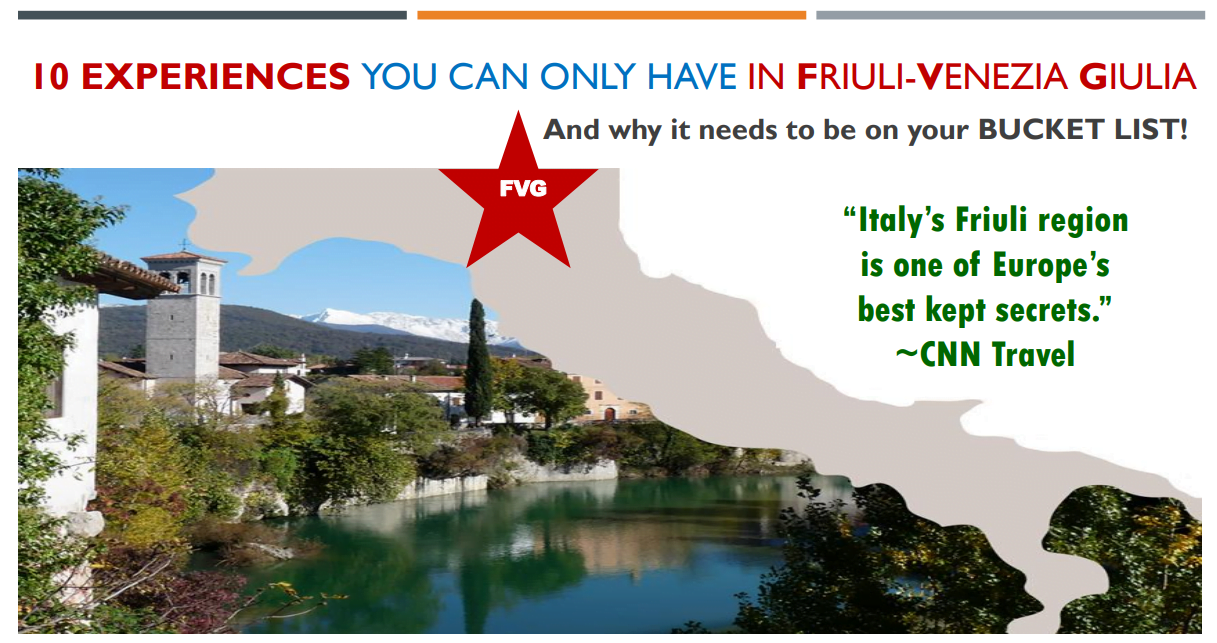
20 PAGE TRAVEL GUIDE
WHAT NOT TO MISS IN
IN FRIULI-VENEZIA GIULIA
We respect your email privacy .
© 2024 Travels With Audrey | [email protected]
Contact Audrey | Privacy Policy
Privacy Overview
The Piemonte Region of Italy: Planning Your Trip
:max_bytes(150000):strip_icc():format(webp)/martha_bio-56a3c8865f9b58b7d0d3b5fe.jpg)
The Piemonte, or Piedmont region, borders France in northwestern Italy. Piemonte is known for its wines and fall truffles, mountains with ski resorts in the west and north, and the city of Turin.
From the region's top destinations to what to eat and drink, here's everything you need to know to plan an unforgettable trip to Piemonte.
Planning Your Trip
- Best Time to Visit: The best time to visit Piemonte is in the early fall, when average highs are in the low 70s and the region comes alive with truffle and wine festivals.
- Language: Italian is the official language in Piemonte. However, Piemontese—which linguists consider a separate language and the Italian government says is a dialect—is spoken by about 3 million people by some accounts.
- Currency: As in the rest of Italy, the Euro is Piemonte's official currency.
- Getting Around: In the capital of Turin, the city center is easily walkable, while harder-to-reach neighborhoods are accessible by tram and bus . (There is a metro , although it only has one line; it does, however, stop at 21 stations, including Porta Nuova and Porta Susa train stations.) To get from Turin to other destinations in Piemonte, you can take a train ( Trenitalia is the national train operator), with towns like Domodossola and Cuneo easily walkable. If you're wanting to see more of the countryside—particularly Langhe, Roero, and Monferrato—consider renting a car or booking a guided tour.
Things to Do
How you spend your time in Piemonte will largely depend on what you like to do. Love to ski? You'll be happy to know that the region boasts more than 1,350 kilometers (839 miles) of slopes and 50 skiing stations (the mountain resorts west of Turin were even used in the 2006 Winter Olympics). Piemonte also claims five UNESCO World Heritage Sites that you can visit, from a series of royal residences to a 10,789-hectare wine-growing area. The region is home to 45 Michelin-star restaurants, with the city of Turin recognized by UNESCO as a Creative City for Gastronomy in 2017.
To help you narrow down your options, here are some of the top destinations in Piemonte:
- Turin : The main city of the Piemonte region and home to Fiat cars, Turin ("Torino" in Italian) is an elegant city with historic Baroque cafés and architecture, high-quality shops, and interesting museums, which include the famed Egyptian Museum and the Museo Nazionale del Risorgimento Italiano (The National Museum of the Italian Risorgimento). Around Turin, you can visit the Residences of the Royal House of Savoy, whose 22 palaces and villas comprise a UNESCO World Heritage Site. Just outside the city is the stunning monastery of Sacra di San Michele (Saint Micheal's Abbey), one of Europe's most important Benedictine monasteries.
- Domodossola: Nestled at the foot of the Italian Alps in the north, Domodossola is on the rail line connecting Italy to Switzerland. The town has a good medieval center and is known for the Baroque Sacro Monte del Calvario (Sacred Mount Calvary). With 15 chapels depicting the Stations of the Cross, the sanctuary is part of the Sacri Monte (Sacred Mountains) UNESCO World Heritage Site .
- Cuneo : The capital of Italy's Cuneo province, Cuneo is worth visiting for a few days. The beautiful arcades of this 12th-century town give it an elegant appearance. You can use Cuneo as a base for excursions into the mountains and even into France.
- Langhe-Roero and Monferrato: Located in the south of Piemonte, this UNESCO "vineyard landscape" incorporates five wine-growing areas. In between sipping wine, consider taking a tour of some of the region's castles, including the Castle of Grinzane Cavour.
- Ivrea: Named an Industrial City of the 20th Century in 2018, Ivrea is about an hour's train ride north of Torino. The famous Carnevale di Ivrea involves lots of orange throwing, parades, and food.
- Sestriere: Located 11 miles from the French border in Val Susa, this ski resort is considered one of the top places to ski in Italy .
- Pinerolo: The gateway to the scenic Val Chisone, the alpine town of Pinerolo offers good skiing in the winter and mountain hiking in the summer. Bonus: It's less crowded than Sestiere.
- Lake Maggiore: Part of Lake Maggiore, one of Italy's top lakes , is in Piedmont (the eastern shore is in the Lombardy region and the northern part extends into Switzerland). The smaller Lake Orta is just to the west of Lake Maggiore.
What to Eat and Drink
Piemonte—particularly the town of Alba, located in the Langhe region—is famous for its aromatic white truffles, which are harvested in the fall. Throughout the season, many restaurants will serve the local delicacy, freshly shaved onto dishes like buttered tajarin (thin egg noodle) and risotto. Be sure to check out the International Alba White Truffle Fair , a months-long affair where you can watch (and participate in) cooking shows, sign up for cooking classes and taste workshops, and, of course, shop truffles from local traders. For the ultimate truffle experience, stay and eat in a place owned by a truffle hunter, or sign up for a Langhe Wine and Truffles Full Day Excursion that includes a truffle hunt.
The town of Bra is home to the Slow Food movement, which is still widely celebrated in this part of Piemonte, whereas Vercelli is known for its rice fields—and the frogs that are attracted to the rice. A food fair dedicated to frog meat, Sagra della Rana, is held the first week of September. There are 10 types of PDO chees produced in Piemonte, including Toma and Murazzano, while Turin is thought of as the European capital of chocolate. Be sure to sample gianduiotto, an ingot-shaped hazelnut and chocolate confection, and bicerin, a "small round glass" layered with espresso, hot chocolate, and whipped milk.
Some of Italy's best wines are found in the vineyard landscape of Langhe-Roero and Monferrato. The area around Alba encompasses Barolo, Barbaresco, and Roero while the province of Asti is known for Dolcetto, Barbera, and Moscato. Some of the top wineries in the region include Marchesi di Barolo and Ca' del Baio .
Where to Stay
The capital of Piemonte, Turin has plenty of options in terms of accommodation, from major chains like DoubleTree by Hilton Turin Lingotto and AC Hotel by Marriott Torino to the boutique Turin Palace Hotel . A lot of tourists tend to stay in the city center thanks to its close proximity to big attractions like the Museo Egizio and Palazzo Reale; however, if you're looking to party, we recommend San Salvario for its budget-friendly restaurants, bars, and clubs.
For those planning a ski trip to Sestriere, you'll find a range of options, including the four-star Hotel Shackleton Mountain Resort and the Olympic Village where world-famous athletes stayed during the 2006 Olympics. Wherever you choose to travel in the region, you can find apartments and private homes through Airbnb and Vrbo, as well as cozy, agriturismi stays in the countryside.
Getting There
To reach Piemonte from the U.S., you'll need to book a flight to Milan Malpensa Airport. The Malpensa Express will get you from the airport to Milano Porto Garibaldi in 49 minutes and Milano Centrale in 58 minutes; from either train station, you can reach many destinations in Piemonte, including Turin and Domodossola, through Trenitalia .
Alternatively, if you're traveling from elsewhere in Italy or Europe, you could fly to Turins's airport, Caselle Aeroporto Internazionale di Torino, which is 10 miles (16 kilometers) from the city center. From the airport terminal, you can take bus line 268 , which stops at Turin Porta Nuova and Porta Susa railway stations, as well as Borgaro Torinese and Caselle Torinese. Piemonte is also easily accessible from major Italian cities, France, and Switzerland via high-speed train .
Money Saving Tips
- If you're traveling on a budget, you can avoid the crowds and save money on hotels and airfare by booking your trip for May.
- For those planning a trip to Turin, San Salvario is an affordable neighborhood where you can find cheap eats and hostels.
- On the first Sunday of the month, Palazzo Reale and the Musei Reali offer free admission; just don't forget to reserve your tickets online. Pick up a Torino + Piemonte card , which will get you free admission to museums and exhibits in Turin; discounted tickets to a number of cultural sites in Piemonte (outside of Turin); reduced prices on tourist services like the "Venaria Express" shuttle bus; and discounts on cultural events. There are one-, two-, three-, and five-day options.
Omniglot. "Piedmontese (Piemontèis)." Accessed September 29, 2022.
UNESCO. "Residences of the Royal House of Savoy." Accessed September 28, 2022.
Comune di Domodossola. "The Sacred Mount Calvary of Domodossola." Accessed September 28, 2022.
UNESCO. "Vineyard Landscape of Piedmont: Langhe-Roero and Monferrato." Accessed September 28, 2022.
UNESCO. "Ivrea, Industrial City of the 20th Century." Accessed September 28, 2022.
Discover the Best Way to See Turin, Italy
Your Trip to Milan: The Complete Guide
The Top 23 Things to Do in Italy
Northern Italy's UNESCO World Heritage Sites and Cities
A Guide to Italy's Wine Regions
Best Day Trips From Milan, Italy
Turin International Airport Guide
Aosta Valley Map and Travel Guide
Italy Guide: Planning Your Trip
The Best 17 Places to Visit in Switzerland
The Geography of Italy
Where to Go in 2023: The Most Exciting Destinations to Explore This Year
Perugia: Planning Your Trip
Lombardy Cities Map and Travel Guide
The 15 Best Cities in Italy
Lake Como Guide: Planning Your Trip
Piedmont Travel Guide: 8 Experiences You Can’t Miss
- May 4, 2021

Do you like chocolate, truffles, and drinking some of the world’s best red wine while gazing out over the Alps? If so, Piedmont is the place for you!
A wine harvest, the charm of the capital city of Turin, and a handsome Italiano were all it took to make me fall for the region. Bordering both France and Switzerland, Piedmont is famous for its wine, elegance, and gorgeous mountains. Home to the Royal family of Savoy for centuries, a trip here can take you from grand palaces to the mountainous Alps. With a stop for a glass of Barolo on the way, of course.
Discover 8 experiences you can’t miss in Piedmont!
1. Spend a day in Turin
Turin, the first capital of Italy and the former home of Italian royalty exudes elegance and sophistication. No trip to the region is complete without setting foot under the beautiful covered walkways in the city center or a stroll past the Royal Palace. The trendy Quadrilatero Romano is one of the oldest parts of town; filled with cozy cafés and bustling trattorias. Climb up the hill to the Monte dei Cappuccini at sunset for one of the most romantic views of the Alps before strolling back along the river Po.
Refuel at Al Bicerin for the best hot chocolate-coffee-cream drink in town: the famous Bicerin. If you visit Turin during Easter, stop by Pasticceria Ghigo for a taste of their famous nuvola di Ghigo . This delicious dessert is a pandoro cake covered in a thick layer of powdered sugar. The Porta Palazzo Market, which dominates the octagonal Piazza della Repubblica, is the largest outdoor market in Europe. Here you can shop for seasonal fruits, vegetables, and more.
If you’re culturally inclined there are a ton of fantastic galleries to discover in the city. This includes the second-largest collection of Egyptian antiques in the world! Incidentally, the Museo Egizio is one of the most visited museums in all of Italy. Turin is a bustling commercial hub, so you can retrace Italy’s industrial heritage through a visit to the National Automobile Museum, the Lavazza Museum, and the Fiat Museum . Car lovers shouldn’t miss checking out the Fiat Lingotto Factory which features a rooftop test track designed by architect Renzo Piano.

2. Go Truffle Hunting for Tartufi Bianchi
Piedmont is world famous for its white truffle. The region actually hosts an annual truffle fair in Alba to celebrate this delicacy. While you can order and shop for truffles throughout Italy, you shouldn’t miss the chance to join a real truffle hunt in Piedmont. Out in the countryside, these hunts let you forage and scavenge for this delicacy. White truffles are exclusive and expensive partly because they’re in season only for a short time–from October-December. And, like other truffles, they can’t be cultivated (only found in the wild).
So throw on a pair of boots and join La Tartufaia in La Morra! This unforgettable experience in the woods and delicious lunch is sure to be a memorable experience. Your hunter and his clever dogs will take you to a secret location where truffles tend to grow. It’s incredible to watch the dogs catch the scent of truffles and start digging up the earth to find them. Afterward, you’ll take a tour of the estate’s vineyard before enjoying a wine and truffle tasting. You can also opt for a picnic or yoga session on the beautiful property.

3. Explore the Palazzina di Caccia di Stupinigi
Piedmont is home to numerous Residences of the Royal House of Savoy which include 22 palaces and villas. All UNESCO’s World Heritage sites. The luxurious Reggia di Venaria may be the most famous residence in the region but I recommend visiting the Palazzina di Caccia di Stupinigi instead. Architect Filippo Juvarra designed this 18th-century hunting lodge for King Victor Amadeus II of Sardinia.
Built in the Baroque style, the Palazzina features intricate stucco detailing, as well as embellishments across 137 rooms and 17 opulent halls. The Palazzina sits on a large, verdant estate just a short drive from Turin. In 1805, Napoleon spent a brief time in this lavish property before continuing to Milan where he was crowned emperor. The Palazzina also houses an important furniture collection of priceless cabinets, fabrics, and chinoiseries decor.

4. Visit Vineyards in Le Langhe
Rolling green hills, fields upon fields of vineyards, and charming villages await you in the heart of Piedmont’s wine region. One of those villages is the famous (tiny!) Barolo. Home to the iconic red wine of the same name. Founded in the 1930s, the Ceretto winery is a dynamic place that fuses tradition with contemporary culture.
Ceretto doesn’t only produce excellent Barolo, Barbaresco, and Nebbiolo wines, but the winery is also a patron of the arts. Ceretto has commissioned several site-specific works like the colorful Barolo Chapel by Sol Lewitt and David Tremlett, which adds a pop of color to the vineyard. Overlooking the vines, a suspended bubble named “Acino” (The Grape) resembles a spaceship that offers 360-degree views of the countryside. Together with chef Enrico Crippa, the family is also the founding member of Piedmont’s only 3-star Michelin restaurant, Piazza Duomo.
For something more understated, go for a tasting at the family-run Monchiero in Castiglione-Falleto. They have a range of truly delicious wines at superb prices. In addition, they also make other classic Piemontese wines including a Nebbiolo d’Alba, Dolcetto, and a Barbera. If you’re in Monforte D’Alba instead or have a penchant for bio wine, try Principiano Ferdinando. These clean wines include Barolo and the classic reds of Piedmont, as well as a delightfully refreshing spumante .

5. Taste Local Piemontese Cuisine
Piedmont has a very distinct cuisine and is famous for its huge selection of antipasti. Try vitello tonnato (veal with creamy tuna sauce), insalata russa (Russian Salad), lingua with salsa verde, tomini cheese, anchovies with green sauce, and more. The typical pasta of the region is a rich egg pasta called tajarin , which is particularly delicious with local truffles, as well as the scrumptious agnolotti . The agnolotti are filled with roast beef and served with a buttery roast beef sauce. Rice is another popular ingredient, so watch out for a variety of risotto dishes!
Moving onto the mains, you can’t miss the braised beef in Barolo (how decadent!). The garlicky dipping sauce Bagna Cauda or the utterly classic fritto misto –courses of lightly fried vegetables, meat, and even fruit. Keep things traditional and taste these dishes at one of the oldest restaurants in Turin, Porto di Savona .

6. Wake Up in the Countryside
Set within the picturesque Bormida Valley, almost an hour’s drive from Alba , Villa La Madonna is a gorgeous boutique for a romantic weekend getaway in Piedmont. Owned by Swedish sisters Marie and Annica Eklund, the masterminds behind the flooring design company Bolon, the property has an inimitable feminine touch and charming boho-chic details that will delight aesthetes and hotel lovers alike.
All eighteen suites have balconies or a terrace overlooking the estate’s vineyards. The natural light helps create a holistic experience that “awakens your creativity… and gives you inspiration through the tangibles and the landscapes surrounding you.” In the summer months, enjoy long days lounging by the pool, carved from natural stone. You can also dine al fresco on the patio or amongst the vines.

7. Relax at Lago d’Orta
Move over Lake Como! And welcome to the lesser-known Lago D’Orta. Come for a peaceful day by the lake where you can enjoy a leisurely lunch at one of the many cafés and restaurants in the town of Orta San Giulio. Check out Ristorante Venus for views of the lake or order a tagliere of small bites at Al Boeuc before taking a short ferry ride over to the Isola San Giulio.
This tiny island in the middle of the lake is dominated by a beautiful Benedictine monastery. After visiting the church, don’t miss walking along a narrow street that takes you throughout the island. Named the “way of silence and meditation,” it blends spirituality with architecture and peaceful views of the lake. If you prefer to stay in the area overnight, the Hotel San Rocco is set within an elegant baroque building overlooking the lake shore.

8. Hike, Ski, and Picnic in the Mountains
Just one hour north of Turin lies beautiful mountains and the Val di Susa. This area is filled with charming villages and plenty of outdoor activities – which extends into France. For incredible views, hike up the Sacra di San Michele. This abbey is a symbol of Piedmont that was built between 983 and 987 on top of Mount Pirchiriano. It’s a medium-difficulty hike but worth the effort when you reach the top of the mountain and admire the valley below. Some members of the Royal House of Savoy are even buried here.
If you enjoy skiing, don’t miss the “Via Lattea,” the second biggest winter sports area in Europe. It features more than 400km (250 miles) of skiable pistes where you’ll be able to ski from Italy to France. If you visit in the summer, you’ll be able to enjoy nice hikes and picnics in the same valley. If you’d like something more challenging, try climbing up the Rocciamelone mountain which sits at 3,538 meters.

For more Northern Italy travel tips and help planning your trip, visit Livguine.com .
In this article:

Post written by: Olivia Windsor
Leave a reply.
Your email address will not be published. Required fields are marked *
You May Also Like

A Local’s Guide To Ponza: Italy’s Secret Island

Where To Go Wine Tasting On The Amalfi Coast

A Local’s Guide To Lake Maggiore: 7 Places You Can’t Miss
Privacy overview.
Piemonte Maps and Travel Guide
Great wine, forts, monasteries and...beer await the visitor to the piedmont of italy.
- Italy Maps >
On the Italian side of the alps you'll find Piemonte, the famous wine growing region of northern Italy nestled between the countries of Switzerland and France and the regions of Aosta , Liguria and Lombardia . If you wanted an adman's choice phrase for Piemonte's diverse landscape, perhaps you'd start with "Between the Alps and the vineyards and rice paddies."
There is no question that the region is as diverse as it is beautiful. At times when you reach the crest of a hill in your rental car you'll be amazed that you seem to be floating above a sea of vines, especially if you are lucky enough to be wending your way through the major wine producing area called the Langhe, marked in purple on our map below.

The vines nurture white wine grapes called Arneis, Nascetta, Favorita, Sauvignon Blanc and Chardonnay as well as the reds of Nebbiolo, Dolcetto, Barbera, Freisa, Cabernet Sauvignon and Merlot to name just the major ones. Pick the best Nebbiolo, age it well, and it might become Barolo DOC, the most famous wine of the region and considered the best of Italian reds.
Then there are the famous risotto rices grown near Vercelli (along with the frogs attracted to the water that rice grows in, celebrated in the Sagra della Rana held the first week in September), the famous truffles of Alba, Italy (and the world's) best chocolate, the 160 types of cheeses and Italy's treasure trove of herbs. By the time you have pursued the list of Piemonte's best you realize you're in a gourmet paradise small enough to explore easily by rental car.
But it's not all about food, either. History buffs will enjoy the historic forts guarding the border with France as well as monasteries like Sacro monte di Varallo near Lago di Orta and the Sacra di San Michele west of Torino.
Great food, great wine, lots of history and eye candy plus a major lake called, interestingly enough, Lago Maggiore; how can you not want to spend a month in Piemonte?
Map: Cities, Tourist Attractions and Wine Regions to Visit in Piemonte
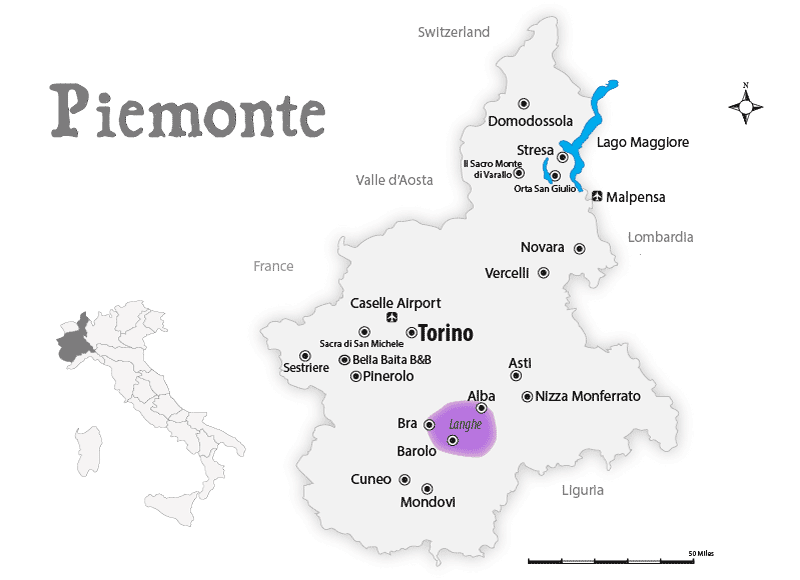
Cities, Towns and Attractions: Getting Your Bearings in Piemonte
Starting in the north, you know Lago Maggiore, a prime resort lake, especially for folks coming from Milano in Lombardia for the weekend. The smaller lake to the west, Lago di Orta or Lake Orta, was named one of the top romantic places in Italy by Martha of Martha's Italy. An alternative to the larger Lake Como, it's far more enchanting.
The Sacro Monte di Varallo , just west of the lakes, is the oldest of the sacred mountain monasteries, founded by Bernardino Calmi in 1491. Volunteers can take you through the site on a one hour tour. There is a walking trail to the monastery from the Vecchio Albergo Sacro Monte ; it takes 35 minutes.
Domodossola is the end point of the famous Centovalli scenic train ride, which starts in Locarno, Switzerland and passes through the Simplon tunnel, ending up in Domodossola. Here's a description of the trip:
On the ride between Domodossola and Locarno you can see gushing waterfalls, vineyards, chestnut forests and villages that time forgot, roll by your window. Unspoiled landscapes and lush vegetation change their appearance in the course of the seasons and make this journey an unforgettable experience. Centovalli Railway runs all year long with 1st and 2nd class and panoramic coaches.
Novara is a provincial capital and Piemonte's second largest city after Turin. The city was founded by the Romans. on March 23rd the locals celebrate the 1849 battle of Novara with a re-enactment featuring period uniforms and weapons called Novara Risorgimentale.
Torino , Turin to Americans and to those who speak dialect, is the largest city in Piemonte. The 2006 Winter Olympics put it back on the tourist map. Have a Bicerin, the famous coffee drink of Turin, visit the Museo Nazionale del Cinema , peruse the newly updated Egyptian Museum (you may wish to take an Egyptian Museum Guided Tour with Skip-the-line Entry ), and see the Holy Shroud Museum, (the Museum has set up a special path for the blind, the result of a collaboration with the Italian Blind Union of Turin).
The Winter Olympics are held in February, and the weather surprised us. It was a great time to visit, and the pictures I took had a painterly quality in the hazy light.
Torino is a major hub for rail connections. The main station in the heart of town is Torino Porta Susa. You can get to Torino from Paris in about 5 1/2 hours, and you can get to Rome or Venice in a little over 4 hours.
You may wish to consider the purchase of a Turin City Card , especially if you like to visit lots of attractions each day.
If you're a foodie with a loaded wallet, I highly recommend a visit to partake of the innovative food of Davide Scabin at his restaurant Ristorante Carignano di Torino inside the Grand Hotel Sitea in Torino.
Viator offers a very fine introduction to the city: Introduction to 3 Hour Turin Chocolate Tasting Walking Tour .
To the west of Torino near the border with France are the winter sports centers around Sestriere . A very interesting visit can be made to the Sacra di San Michele ; the vertical Abbey with the great view of the Susa Valley inspired Umberto Eco to write The Name of the Rose. Originally built between 983 and 987 atop mount Pirchiriano, the Romanesque carvings on the church are fantastic. Many of the sites are accessible to people with disabilities.

An interesting little tidbit about this Abbey. If you find a map, draw a dead-straight line on it in the right place, you'll see that the most famous Saint Michael shrines in Europe are laid out in a linear path. Thus:

A valley worth visiting is the area west of Turin called the Val Chisone .
Pinerolo marks the eastern boundary of the valley. You can stay in a B&B offering cooking classes, visit a fortress that stretches across the valley and is second only to the Great Wall of China in terms of length, visit mountain villages awash in murals, and see a bridge said to have been crossed by Hannibal and his Elephants.
Pinerolo has a great Saturday market, where you can find many of Piemonte artisan cheeses and heritage corn for Polenta .
Val Chisone Map & Visitor Guide
Wine Country and the Food of Piemonte
The Langhe is dense with little castles on the tops of hills surrounded by vines. You can learn an awful lot about life in the 1400s by driving out to Manta Castle , where the frescoes will wow you and there's a great restaurant nearby.
Alba hosts the famous truffle fair between mid-October and November. Bra is the nexus of Slow Food, and hosts a famous Cheese Festival in September. Barolo has a fine castle and is the center for tasting the wine of its name with very fine food. You can also visit a grissini bakery in Barolo to see how they're made (or watch the video via the link).
In the 15th century Mondovi was the largest city in Piemonte. It's the place to taste the wine called Dolcetto.
Cuneo is a provincial capital and a charming town with a Renaissance style arcaded main street lined with shops and cafes, giving it an elegant appearance. Cuneo's old town center dates from the 12th century when it was a fortified town. In the area the thing to eat, especially on Sundays with your family, is the region's famous Bollito Misto , elegantly served with several sauces.
In the Cuneo province you'll also find Mondovì , a town shunned by tourists but really quite an interesting place to visit. It was, in the 1600s, the largest town in Piemonte. It has several rione, and between the highest and lowest there's a funiculare to take you up and down. These rione have made it difficult for tourists to see the whole city, so many form an opinion of the place before they've even seen a third of it. If you need a reason to go, the deal might be sweetened by a visit to little Vicoforte, very close to Mondovì, which hosts the Sanctuary of Vicoforte , covered by the world's largest elliptical dome.
Along with the wine and cheeses, Piemonte has some very fine chocolate, especially around the town of Cherasco , where chocolate lovers won't want to miss Pasticceria Barbero on Via Vittorio Emanuele II, 74, a famous place to get that Baci di Cherasco. Cherasco is also known for its snails, oddly enough; the The Cherasco Method Snail Academy is here.
The ancient salt routes through Piemonte have contributed in surprising ways to the cuisine of Piemonte. Salt and anchovies were traded for the prized beef of the inland region, so some iconic dishes of Piemonte like Vitello Tonnato and Bagna càuda include the non-local salted fish.
Piemonte doesn't just do fine wines. The beer culture is alive and well in those hills. Baladin has a fine new beer operation including a pub and bistro. See the video to discover this stylish background for some great beer.
Beer and Style in Piemonte, Italy from James Martin on Vimeo .
When to Visit Piemonte
The highly anticipated harvest followed by truffle season makes the best time to go to Piemonte is the period between October and December. How much bigger is fall than other seasons? The percentage of restaurants that are full in the Fall are between 25 and 30 percent, compared to less than five percent for the summer. Barolo is particularly beautiful in the fall when walking amongst the vineyards is the thing to do .
May is also a good time to go, especially if you like your food served with the fresh flowers and herbs the Piemonte is famous for. May is a wonderful time for wildflowers, spring showers, and the budding of Piemonte's fresh herbs.
Press for Alba Weather and Historic Climate Charts
Where to Stay
We have a trio of unique places to stay in Piemonte. If you're exploring the Langhe, we recommend the evocative 18th century tower apartment called Torre Barolo . It's not good if you have mobility issues; there are lots of stairs as you can imagine. But the view from the rooftop terrace is second to none and the tower is right in town.
If you are up to exploring the Olympic Valleys and the Sacra di San Michele, then we highly recommend an extended stay at Bella Baita in Borgata Serre Marchetto, marked on the map. You will not find hosts more willing to help you have a great time than Marla and Fabrizio, whether you're up to a mountain bike ride or a day of exploring forts, abbeys and castles. It might sweeten the deal to tell you that Marla is a highly trained pastry chef, so breakfast, you know, the most important meal of the hedonist's day, is likely to impress you greatly.
If you've come to Piemonte in late October and November and it's truffles you crave, get thee to Tra Arte e Querce in the village of Monchiero. The owner is a truffle hunter. Go to breakfast early and your nose will alert you to his return from the sacred truffle hunting grounds; the smell of the fungus is unmistakable--and grated over your morning eggs makes the perfect breakfast of champions .
Smaller Places & Interesting Experiences in Piemonte
Use the buttons to take you to places in Piemonte you'll never forget.
Mango in the Langhe Barbaresco Enoteca Regionale del Barbaresco (in a church!) Serralunga d'Alba Sexy Food in Piemonte How do They Make Those Breadsticks?
And finally: Neive and approaching storm

Article published on Feb 18, 2017 , updated on September, 2023
More Italy Travel Planning Resources
- Travel Planning Timeline : Learn what you need to plan when.
- What Will an Italy Vacation Cost? : Tools for budgeting your Italian vacation.
- Unplanned Attractions : Save time for the good life in Italy.
- 2024 TRAVEL UPDATE
- Work with us
- Beyond Bologna
- Regions of Italy
- Travel books
- Best group tours
- Itineraries
- Accommodation guide
- Italian phrases for travel
- Rocket Italian review: 2024 update
- Ultimate Italy Travel Planner
- City Planners
- Essential Guides
- Italy themed gift ideas
- Trip planning services
piedmont TRAVEL GUIDE
If truffles, the best hazelnuts in the world, chocolate, and Barolo wine, set against a backdrop of alpine ranges or rolling hills covered in vineyards sounds like your idea of paradise, then you need to visit Piedmont. The region translates literally as ‘foot of the mountains’ and evokes just some of the beauty that awaits you on a trip to Piedmont.
Most well-known for the UNESCO Heritage Langhe-Roero area which includes Barolo, or perhaps as the keepers of the Shroud of Turin , there is so much more to discover when you travel to Piedmont. Expect unique cuisine, some of the most beautiful towns in Italy, royal castles, an elegant capital city, striking mountains, blissful lakes, and so much more. Keep reading to uncover our full travel guide to Piedmont.
Article contents
Where is Piedmont
Located in the very north-west of Italy, Piedmont borders Liguria, France, Valle d’Aosta, Switzerland, Lombardy, and a tiny section of Emilia Romagna. The region is located to the West of Milan, and the capital Turin is a short hour train ride away by high-speed train.
Whilst both in the North, Piedmont is to the extreme West compared to Venice which lies on the East coast of the country. North of both Florence and Rome, the capital is reachable via train within three and a half hours from the former or just under 5 hours from the Eternal City.
Map of Piedmont
Main cities and towns in piedmont.
Piedmont is the second largest of the twenty regions of Italy in terms of area and has many picturesque towns and villages to explore
- Turin / Torino: The capital of Piedmont and first capital of Italy is sophisticated Turin. It was home to the Royal Savoy family for a century and their influence is still felt in the stunning architecture they sponsored and built. Be sure to visit the Royal Palace, Palazzo Madama, the Ancient Roman neighborhood in the Quadrilatero, the Porta Palazzo market, and climb the landmark Mole Antonelliana .
- Alba : The capital of the Langhe wine region, a visit to Alba is a must when traveling in Piedmont. Wander its medieval streets, explore underground Alba, or indulge at one of its many fantastic restaurants. A visit in the Fall coincides with its International White Truffle Fair where you can watch a unique donkey palio (race), medieval parades, and eat your weight in truffle products.
- La Morra : If you like picturesque viewpoints, you must add La Morra to your Piedmont travel list! One of the more well-known towns in Langhe, it has the most spectacular viewing point over all of the villages in the wine region. Explore the great enoteccas in town, indulge in the local cuisine, and don’t miss a visit to the Barolo Chapel a short drive out of town.
- Orta San Giulio : Piedmont’s beautiful Lake Orta is another destination worth discovering. Orta San Giulio is the pretty village on the lake that begs attention. Wander its gorgeous streets, visit local craft shops, take a boat out to the silent Isola San Giulio, or hike up to the great viewpoint at Sacro Monte of Orta.
- Bra : The birthplace of the Slow Food movement , this thriving town is for serious foodies. In fact, you’re likely to run into a few students or alumni from the University of Gastronomic Sciences in nearby Pollenzo here. Every two years they host the delicious Cheese festival in September so be sure to time your visit to coincide with it.
- Barolo : Bearing the same name as its famous wine, Barolo is a tiny town in the Langhe wine region. Visit a winery in town where you can sip on Italy’s most prized red wine in its very birthplace.
- Asti : Another charming city in Piedmont is undoubtedly Asti, also known as the city of towers. Be sure to visit the towers still standing, the 14th century cathedral, the crypt of Saint Anastasio, and wander its medieval streets. Try to time your visit to coincide with the Palio in September.
- Cuneo: This mountain city is like a mini Turin with the same air of elegance as the capital but a small-town feel. Walk through the prettiest street in town Contrada Mondovì, which was once home to the Jewish Ghetto, and marvel at the spectacular view of the alps from Piazza Galimberti. Watch out for the city’s famous chocolates filled with rum too!
Top things to do in Piedmont
There is no shortage of fabulous things to do in Piedmont . Whilst it’s a foodies paradise, those with an interest in history or nature will also strike gold here. Our favorite activities in the region include:
Take part in a truffle hunt
Piedmont is famed for its white truffles in particular – they can’t be farmed and are unique to the land here. Join a truffle hunt to try your luck finding truffles with the help of a tartufai (truffle hunter or forager) and their trusty team of dogs. You’ll be amazed at the collaboration between man and beast in the hunt for some of the world’s most sought after delicacies.
Try Barolo, Piedmont’s famous wine
When in Piedmont, drink like the Piemontese! Don’t miss a visit to a winery where you can try the wine of Kings, Barolo. Visit Massolino or Vietti to sample some traditional expressions of this variety made exclusively with Nebbiolo grapes.
Hike in the Gran Paradiso National Park
There are many beautiful hiking trails in Piedmont, but the Gran Paradiso National Park is perhaps the most beautiful to discover. Located near the border with the Valle d’Aosta, the park is comprised of glaciers, lakes, and an enormous range of flora and fauna.
Take to the slopes
Home to the Alps, there are plenty of options to go to the snow, snowboard and ski in Piedmont. Choose from Via Lattea and Bardonecchia, located nearby to Turin; Riserva Bianca and Limone Piemonte near Cuneo; the Valsesia Monterosa; the Neveazzurra region; or the Alps around Biella
Visit the Venaria Reale
Piedmont boasts many palaces and hunting lodges and choosing which ones to visit can be overwhelming. However, Venaria Reale is noted as one of the most spectacular and is a UNESCO heritage listed site. It’s often compared to the Palace of Versailles, but you’ll to have to visit for yourself to see which is more impressive.

Admire the view at the top of the Mole Antonelliana
The icon of Turin, the Mole Antonelliana was originally built as a synagogue before the city bought the property and added the tall spire reaching 550ft. Zoom all the way to the top in the glass elevator and explore the fantastic Cinema Museum housed below afterwards.
Visit the Egyptian Museum
It might sound odd to include a museum of African antiquities on this list, but Turin is home to the biggest collection of Ancient Egyptian artifacts outside of Cairo. For anyone with a passing interest in Ancient Egyptian history and culture, this is a must-visit.
What to eat and drink in Piedmont
Piedmont is a world renowned food lovers destination. The region has a rich cuisine and makes good use of butter, garlic, anchovies, and top quality Fassona beef in its dishes. Whilst Piedmont does make white wines, including well-known Moscato d’Asti, the red wines shine supreme here – people come from far and wide to try local varieties Barolo, Barbera and Barberesco.
Some of the best food and drinks to try when you travel in Piedmont include:
- Vitello tonatto: Medium-rare slices of veal are topped with a creamy tuna mayonnaise-like sauce and caperberries. This dish is best enjoyed with Piedmont’s typical grissini breadsticks.
- Tajarin : One of Piedmont’s typical pasta shapes are the long, thin tajarin noodles. Made with 00 flour and extra eggs, this is a rich pasta best served with ragu or truffles grated over the top.
- Agnolotti al plin : The other typical pasta of the region, agnolotti are filled pasta traditionally stuffed with roast meat and herbs. Similar to a ravioli shape, they are pinched into a little parcel which gives them their name. Try it paired with brodo or hot broth in the winter, or roast beef sauce.
- Bagna cauda : Literally translating as ‘hot bath’, this is a typical wintertime dish. Bagna Cauda is made with anchovies, garlic, and extra virgin olive oil. It’s served in a terracotta pot and traditionally used as a dipping sauce for cut up raw and cooked vegetables like carrot, celery, capsicum, cooked broccoli and potatoes.
- Gianduiotti: Typical hazelnut chocolate treats from Turin are the smooth and delicious gianduiotti. They come wrapped in the shape of an ingot or little bar of gold. Try them at Baratti e Milano .
- Nebbiolo: The most typical grape of Piedmont is of course Nebbiolo from which Barolo is made (provided it follows a long list of regulations). It’s a full-bodied, tannin rich wine with notes of dark red fruits, truffles, and herbs.
- Bicerin: This chocolate coffee flavour bomb is made with a shot of espresso, mixed with gianduja chocolate, and topped with sweet cream. The best place to try it is at the historic Al Bicerin bar.
Where to stay in Piedmont
There are a great range of diverse accommodation options available for your trip to Piedmont. Choose from beautiful relais, luxurious castles (like Castello di Gabiano ), agriturismi (farm stays), apartments or traditional hotels. Turin makes for the best overall base given its close proximity to Milan and the Langhe (both are reachable in just one hour).
For a trip focused in the wine region, consider staying in well connected Alba for the most extensive accommodation and dining options or La Morra for a smaller town vibe. If you’re planning to hit the slopes, the Val di Susa is one of the most popular areas. Try Sestriere or Bardonecchia for the best ski resort options there.
Those interested in visiting Lake Orta are best placed to stay at Orta San Giulio itself as it’s a slightly long drive to and from Turin (just under two hours by car) but much closer to Milan.
When to go to Piedmont
Piedmont is at its absolute best during the shoulder seasons. In Fall, the harvest season is in full swing, and later in the season the little nuggets of gold (white truffles) are waiting to be found.
September is a great month to visit for good weather, the chance to watch the Palio in Asti, and visit the Cheese festival in Bra.
October to December are best for for enjoying white truffles and the magical ambience as thick fog is likely to cover the region. Unlike much of Italy’s other regions, Fall is actually high season in Piedmont so remember that accommodation and activities should be booked well in advance or you could join our small group tour of Piedmont and avoid all the fuss.
Spring is another excellent time to visit Piedmont as the region bursts into life after the long winter. Watch out for the Vinum wine festival in Alba, the asparagus festival in Santena, and the agnolotti festival in Passerano. In the summertime, the region gets very hot with temperatures frequently at 86°F (30°C). There are many food festivals held during this period including strawberries at Peveragno, cherries in Pecetto, peppers in Carmagnola, and lasagne in Bosio.
We also enjoy taking small groups to Piedmont in Spring to enjoy this festive atmosphere and the fields bursting with life.
Winter is the best time to visit if you’re planning a trip to the Alps snowboarding or skiing. If not, it’s probably best avoided as temperatures go down to at least 31°F (3°C) in Turin) and much lower in smaller towns. Christmas is a great time to visit as many markets are set up in Turin and smaller towns in the area, however the region is very quiet afterwards until around April.
How to get to Piedmont
Turin is home to the main international airport in the region, where it’s possible to fly into from many other main Italian and European cities. If you’re traveling to the region from the United States, Australia or outside of Europe, the easiest way to arrive is by flying directly into Milan Malpensa and then taking a fast speed train to Turin Porta Nuova Station.
The high speed Freccia and Italo train services run throughout the country to Turin – an hour from Milan, three and a half hours from Florence, and just under five hours from Rome. You can research timetables and book tickets quickly and easily using Omio – an online transport booking platform.
If you’re traveling by car, you can reach the capital from Milan in two hours on the A4. From Florence, the drive is just under five hours along the E70 and A1/E35, or from Rome, the drive is about seven hours along the A1. We recommend using Auto Europe or Car Rental by booking.com to browse the best car rental options. You’ll find the best deals at Turin and Malpensa airports.
How to get around Piedmont
Turin is well serviced by public transport with buses, trams and the metro, so a car isn’t strictly necessary for a visit to the capital.
Whilst it is possible to take the train to Alba and Asti from Turin, there aren’t great public transport options to the smaller towns in the Langhe region and certainly not to the wineries in the area.
For this reason, a car or driver are definitely recommended for a trip to the wine region as well as to the mountains. The best place to collect your hire car is from Turin’s airport or the Porta Susa Railway Station. Consider booking a private driver if you’re planning to visit wineries .
Let’s go to Piedmont!
Inspired to visit incredible Piedmont? If you liked this Piedmont travel guide and are looking for more ideas about traveling in the region, have a listen to our podcast on Piedmont , Palaces and Castles of Piedmont , and dishes to try in Piedmont . Or, read our article on things to do in Turin .
Want to discover Piedmont with us? For a deeper local connection, why not join one of our Piedmont small group tours . You can see what our guests think about our Untold Italy tours in Piedmont by watching the video below.

Northern Italy
Piedmont is sure to enchant you with its mountains, hills, typical flavours and uniquely elegant cities.
An extraordinary heritage of art and history, culture and nature, characterises Piedmont, a region with a thousand faces, one more interesting than the other: cities of rare elegance, mountains that lend themselves to splendid skiing or walking, fascinating villages, hills that are among the best known in the world for their extraordinary wine production.
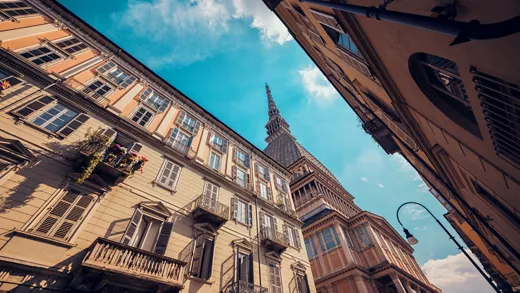
Discovering Turin, a multifaceted city rich in historic splendour. Elegant and earnest, Turin boasts a one-of-a-kind artistic and cultural heritage: the elegant aristocratic residences of times gone by, breathtaking Baroque architecture, bountiful museums and priceless monuments still stand tall today, creating a unique blend between past and present.
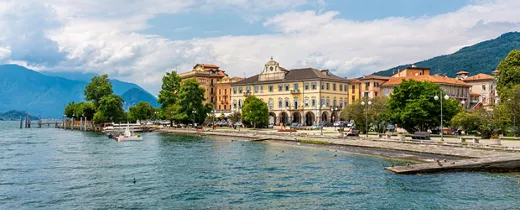
Lakeside villas and gardens The province of Verbano-Cusio-Ossola stretches between Lake Orta and Lake Maggiore, on the shores of which stand stunning villas surrounded by gardens, like Villa Taranto and Villa Giulia in Verbania or Villa Pallavicino in Stresa. From Stresa, you can take a boat to the beautiful Borromean Islands. Isola Bella is home to the 17th-century Palazzo Borromeo, with Baroque gardens, original furnishings, and paintings by Tiepolo and Carracci. On Isola Madre is a magnificent botanical garden, while on Isola Superiore or Isola dei Pescatori, the only inhabited island, you can stroll through charming villages. Also along the shores of Lake Maggiore are the medieval villages of Cannobio and Cannero Riviera, with a small harbour carved out of the rock, the Parco Degli Agrumi ecological park and moated castles. In Pallanza is the 12th-century Oratory of Saint Remigio. The picturesque town of Omegna sits by Lake Orta, while Vogogna is home to the Visconti Castle. Don’t miss the Toce Falls and the Vigezzo Valley, nicknamed the Valley of the Painters, as the landscapes enchanted 19th-century artists. The medieval town of Domodossola is located right here, near the Sacred Mount Calvary of Domodossola. For wilder nature, we recommend visiting the Val Grande National Park. In Macugnaga, in the shadow of Monte Rosa, you can discover Walser culture.
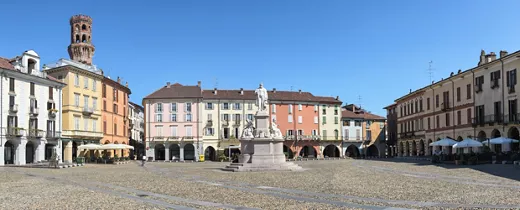
Rice paddies, castles and a mysterious valley Vercelli, in Piedmont, is a jewel to discover. Surrounded by rice paddies, which are fantastic to cycle through while they are flooded between April and May, the city has countless sites of interest, including the Gothic-style Basilica of Sant'Andrea, the Cathedral of Sant’Eusebio, the Visconti Castle, the Leone Museum and the Francesco Borgogna Art Gallery. The province is full of surprises. In Buronzo stands the Castellone castle, while stunning fortresses can also be found in Balocco and Rovasenda. On the banks of the Sesia river is the Lame del Sesia wildlife park, where you can enjoy wonderful walks. Don’t miss Monferrato, with its rolling, vineyard-covered hills. The beating heart of the province of Vercelli is Valsesia. It is home to the Sacro Monte of Varallo, a monumental religious complex that, together with other Italian Sacri Monti, is a UNESCO World Heritage Site. In Alagna Valsesia, you can discover Walser culture, a people of German origin who settled in this valley in the Middle Ages. Valsesia is a must for anyone who loves winter and river sports, from fishing to rafting. It is also home to Europe’s highest mountain hut, Capanna Margherita, at 4,554 metres atop Monte Rosa.
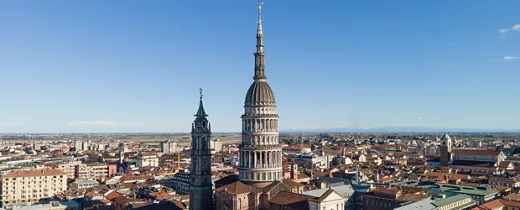
A journey from the lake to the mountain A crossroads of important trade traffic, the province of Novara is characterised by its varied territory. In the small, quiet old town, visit the Duomo, or Cathedral of Santa Maria Assunta, an unfinished project by architect Alessandro Antonelli, creator of Turin's most famous Mole Antonelliana. Also unfinished is the Basilica of San Gaudenzio, from whose dome you can admire a magnificent panorama stretching as far as Monte Rosa. Alto Vergante, between Lake Maggiore and Mottarone, is rich in hilltop villages, including the historic Massino Visconti. On Lake Orta, discover the Island of San Giulio, with its Romanesque basilica and the ring road, an itinerary of spirituality and meditation. Another beautiful location is Arona, nestled on the shores of Lake Maggiore. From here, admire the Rocca di Angera, surrounded by the enchanting medieval garden and used as a museum, including the Sala delle Maioliche (Majolica Hall) and Europe's largest doll and toy museum. On the eastern outskirts of Cameri, on an erosion crag of the Ticino River, stands the prestigious Villa Picchetta. Finally, the Colline del Boca, an area rich in history and picture-postcard landscapes, famous for the production of the famous DOC wine of the same name and the imposing Boca Sanctuary.
Snow, lakes and medieval villages The province of Biella offers unforgettable experiences for all tastes, from the snow-covered slopes of Bielmonte to historic villages, nature reserves, hill-top sanctuaries, castles, and food and wine delights, with polenta concia being the most popular dish. Biella lies at the foot of the Alps and is medieval at heart: the historic centre of Piazzo is located on a rocky ridge that looms over the rest of the town, which was later built and named Biella Piano. Don’t miss the Romanesque baptistery of St John the Baptist in Piazza Duomo, where you can also find St Stephen’s Cathedral. The most beautiful church, however, is the Renaissance basilica of St Sebastian. The cloister of the adjacent monastery houses the Museum of the Biella Territory. Near Biella is Ricetto di Candelo, a still intact, walled medieval walled village. Towards the Biellese Alps you can find the Sanctuary of Oropa on the Sacro Monte, where the locals venerate the Black Madonna. To be surrounded by nature, we recommend visiting the Parco Burcina Natural Reserve or Oasi Zegna, true natural paradises. Lake Viverone, the third largest lake in Piedmont, also offers beautiful walks and views. History buffs, meanwhile, should head to Masino Castle, the former residence of the Counts of Valperga.
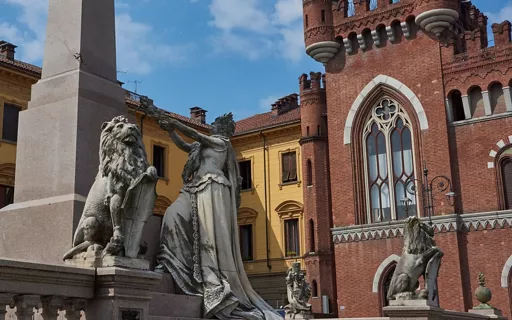
Villages, churches and castles in the hills of Monferrato Lush countryside covered with vineyards, ancient villages and parish churches, castles perched atop rolling hills: this is the province of Asti, the beating heart of the Monferrato region known for its wine production. Every year it hosts the Douja d’Or, awarded to the best Piemonte wines. The city of Asti, along the ancient Via Francigena, has been nicknamed the city of a hundred towers since the Middle Ages. Many of them are still standing, including the 12th-century, 44-metre-high Torre Troyana tower, a symbol of the city. Don’t miss the Collegiate Church of Saint Secundus, the largest Gothic-style church in Piedmont dedicated to St Mary of the Assumption and St Gotthard, Palazzo Alfieri, the birthplace of writer Vittorio Alfieri, and the baroque Palazzo Mazzetti, now a civic museum. The most beautiful villages include Cocconato d’Asti, with magnificent views over the Versa Valley, Moncalvo, known as the smallest city in Italy, Mombaruzzo, famous for its amaretti biscuits, and Nizza Monferrato, where “hunchback” cardoon is grown. Albugnano is home to the splendid Romanesque-Gothic Abbey of Vezzolano. Don’t miss the castles of Piea, San Martino Alfieri, Montiglio and Castell’Alfero, as well as the 14th-century Costigliole d’Asti, which houses the Italian Culinary Institute for Foreigners. Speaking of cuisine, local delicacies include agnolotti pasta, truffles, cured meats and, of course, bagna cauda. In summer and autumn, you can enjoy a picnic among the grapevines with local wines and cheeses.
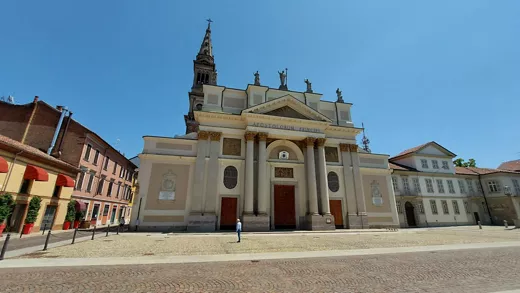
Alessandria
The pleasure of discovery, among castles, historic battles and Romanesque masterpieces Known in Frederick Barbarossa’s time as Civitas Nova, after joining the Lombard League in 1168 it was offered to Pope Alexander III, who agreed to make it a feudal holding of the Church. It was renamed Alessandria in his honour. While, historically, its relationship with neighbouring Monferrato, which is only about thirty kilometres from the city, was marked by struggles and divisions, today Casale is an unmissable destination to discover some of its precious treasures — starting with the Synagogue of 1595, among the best examples of Piedmontese Baroque style, with the Jewish museum attached. We recommend visiting the Casale Monferrato Cathedral dedicated to Saint Evasius, one of the best-preserved Romanesque churches with its characteristic double narthex. If you find yourself in the historic centre, don’t forget to taste the authentic Krumiri, the popular biscuits inspired by the shape of King Victor Emmanuel II’s moustache. Among the fortresses in the Alessandria countryside, it is worth visiting the 12th-century Giarole Castle of the Sannazzaro family, with its frescoed halls, tower, fascinating dungeons and imposing 19th-century park. For fans of the Napoleonic campaigns, the Marengo Museum is a must for reconstructing Bonaparte’s exploits, as well as the causes, developments and consequences of the Battle of Marengo.
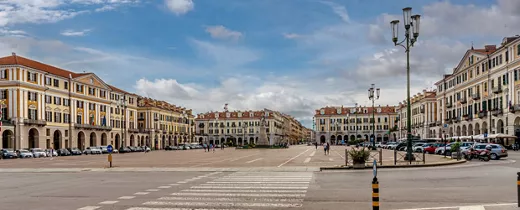
Hunting for truffles, castles and storks Created as a military citadel by the Savoy family, Cuneo stands at the confluence of the Stura and Gesso rivers, on a plateau in the shape of a “cùneo” (wedge), after which it was named. The historic centre winds around Piazza Galimberti, an elegant gathering place surrounded by porticoed buildings. Via Roma, the main street, is lined with architecturally fascinating buildings, including the Palazzo della Torre, surmounted by the 14th-century Civic Tower, Casa Basso, with its ancient brick decorations, and Casa Quaglia, with its façade frescoed with heraldic motifs. A traditional, less crowded corner is the old Jewish ghetto, Contrada Mondovì, with several historic shops. If you visit the city, be sure to try Cuneesi, the typical chocolate made with meringue and rum. For more refined palates, we recommend visiting the Langhe area, from Barolo, the town famous for its namesake red wine, to Alba, with its prized white truffles. Every year, the cream of the crop are auctioned for charity. Don’t miss the castle of Racconigi with its beautiful park. Owned by the Savoy family since the 14th century, it has been a UNESCO World Heritage Site since 1997. Nearby is the Associazione Centro Cicogne e Anatidi nature reserve, which specialises in protecting storks. In this green oasis, you can admire the storks and enjoy a picnic, making it the perfect outing for the whole family.
What to see in Piedmont
- Art & Culture
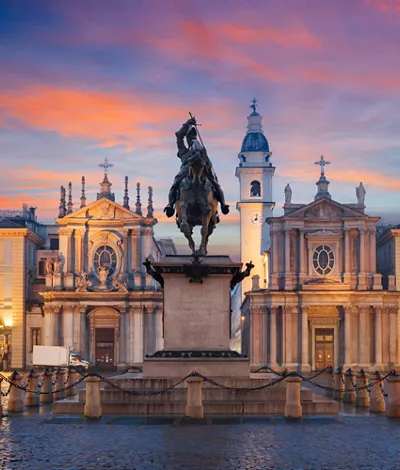
2 days in Turin: the itinerary
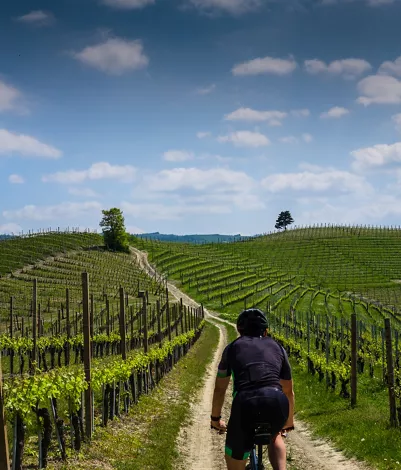
Piedmont by bike between landscapes, vineyards and flavours
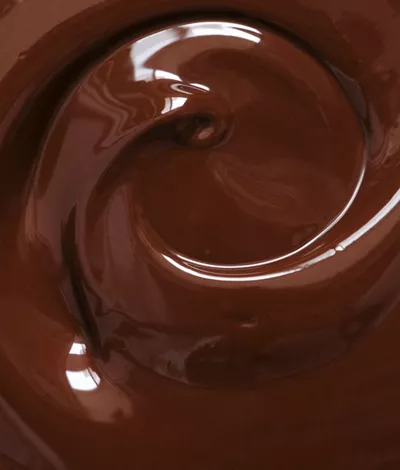
Turin and Its Chocolate Tradition
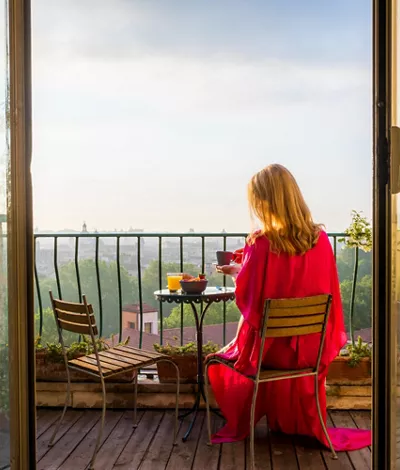
Piedmont historic and unusual hotels, dream locations for tours in pursuit of beauty
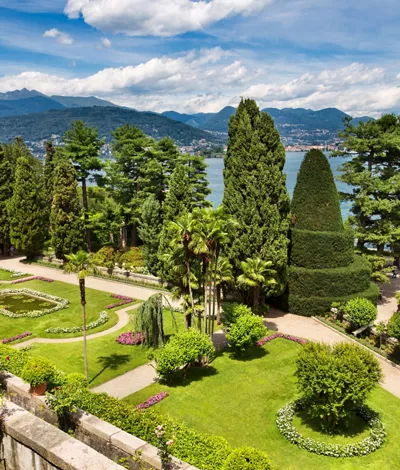
Lake Maggiore
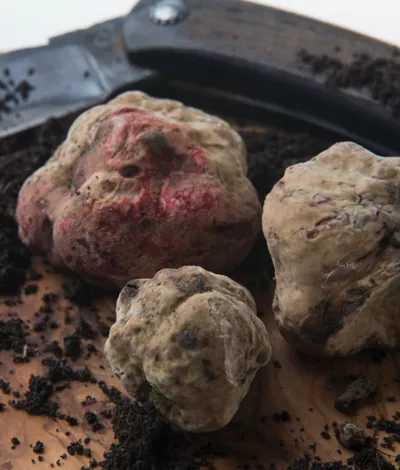
Diamond of Alba: The White Truffle
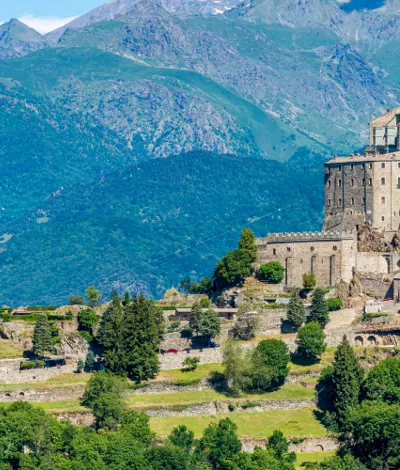
The Susa Valley and Its Villages
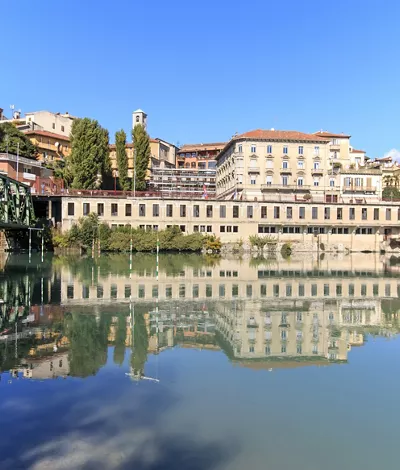
Ivrea, the Industrial City with an emphasis on urban well-being
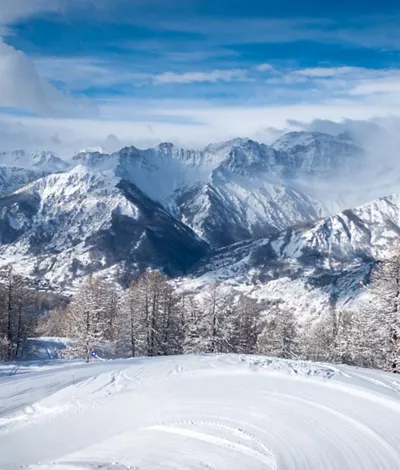
In the Turin Alps: Via Lattea and Bardonecchia
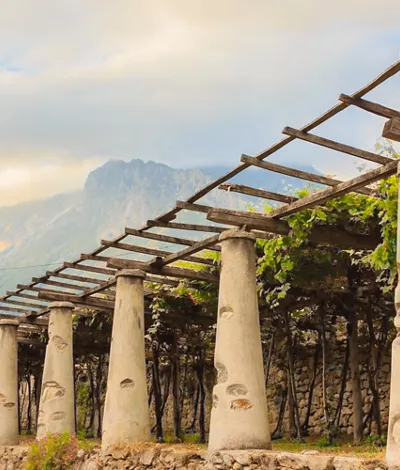
The terraced vineyards of Carema: unique landscape and an unmissable wine
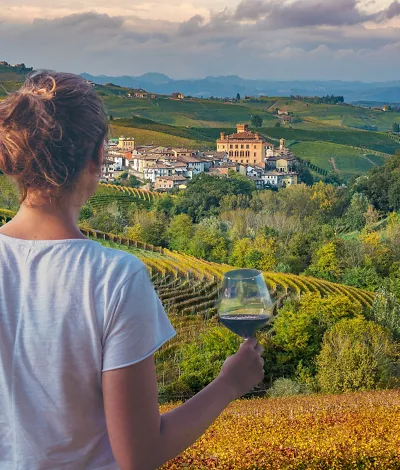
Langhe, Roero and Monferrato amidst precious vines, villages and castles
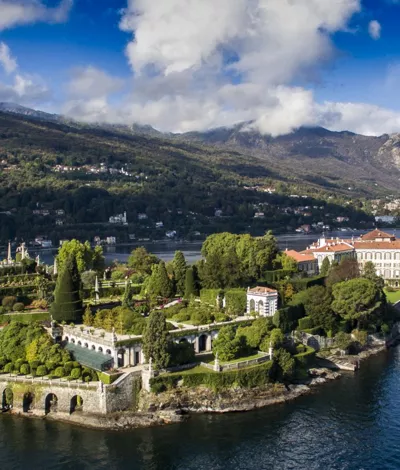
Islands in full bloom and Mediaeval villages - Lake Maggiore in Piedmont by bike

Snow in Piedmont: 5 supreme skiing areas for an unforgettable holiday
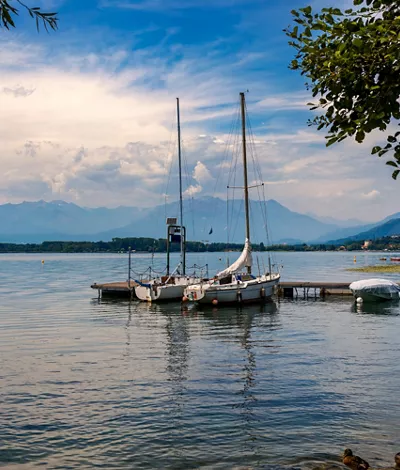
Lake Viverone and the Church of Gesiùn, pearls of the Piedmontese Via Francigena
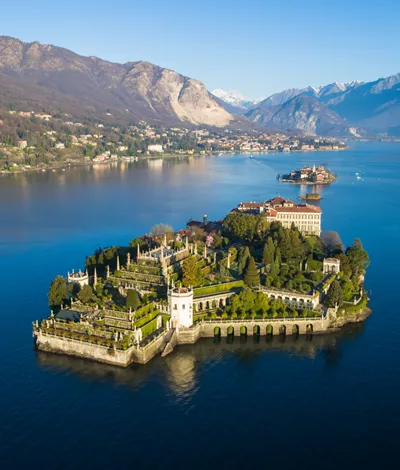
The Borromean Islands
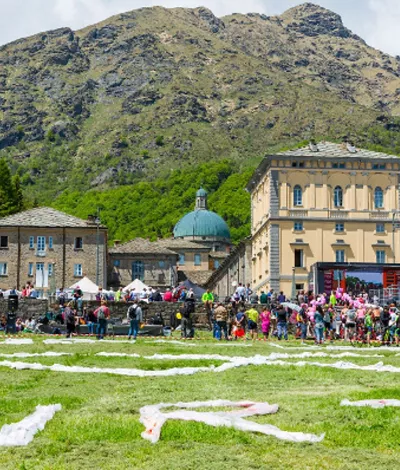
The Biella Alps: from the slopes of Bielmonte to Monte Sacro di Oropa
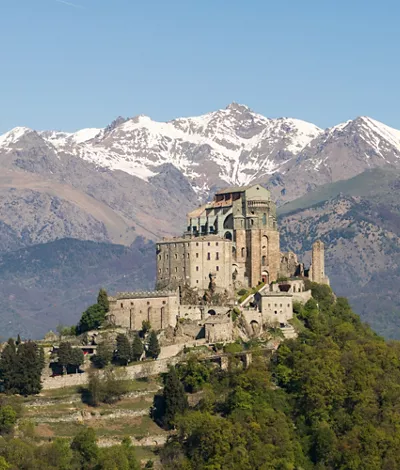
Piedmont: hiking between holiness and nature
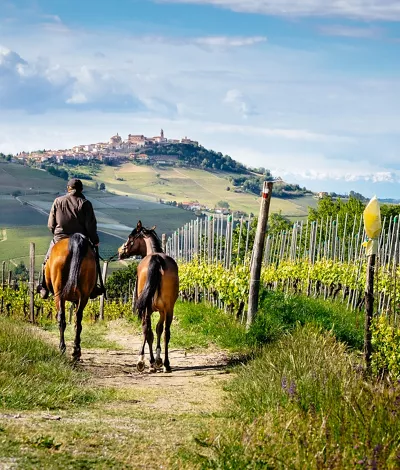
Villages and Wine Routes
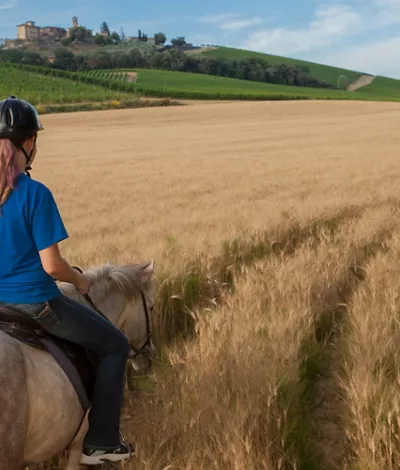
Horse-riding and team building immersed in nature; networking and re-grouping just a stone's throw from the city
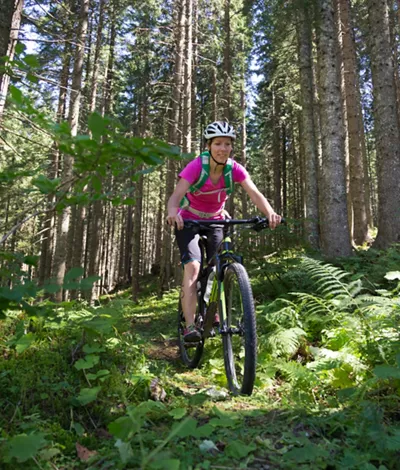
Piedmont on two wheels: the Sauze d'Oulx Bike Park
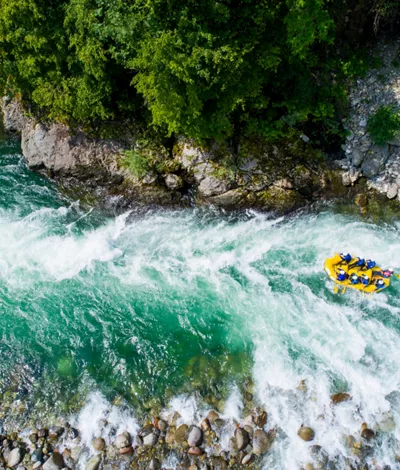
Discovering rafting in Valsesia, Piedmont

Piedmont: soaring above Lake Maggiore
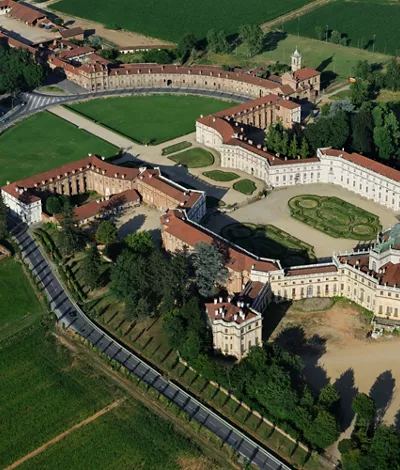
One route and a thousand different worlds. The wonder of crossing Piedmont by bicycle
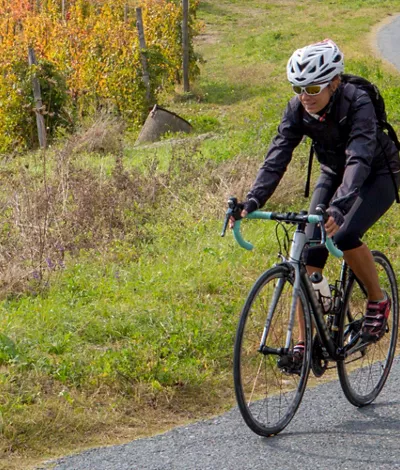
Pedaling in the ancient heart of Piedmont
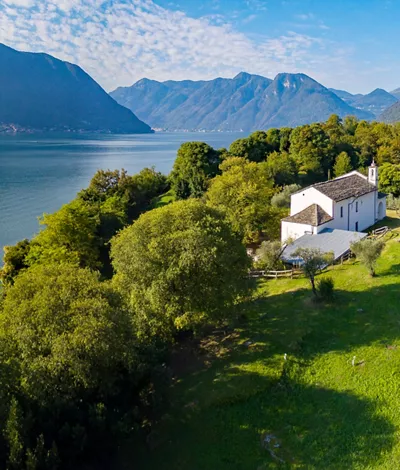
The Sacri Monti of Piedmont and Lombardy
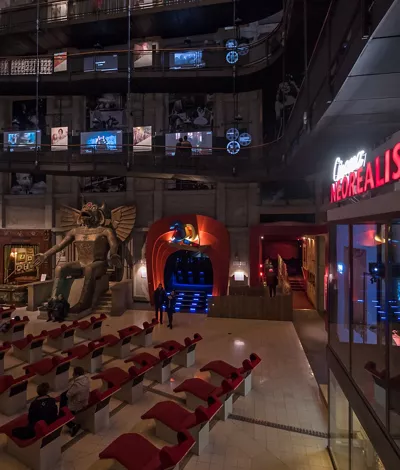
In Turin, in the National Museum of Cinema, a jewel inside the Mole Antonelliana
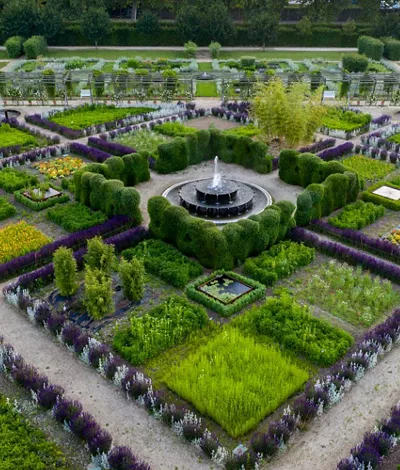
Art and nature in the Savoy garden: the Venaria Reale
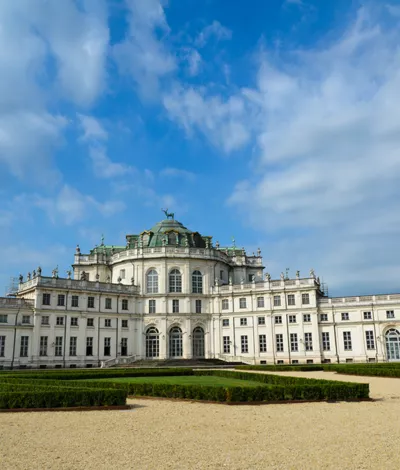
Turin and the magnificent Savoy residences
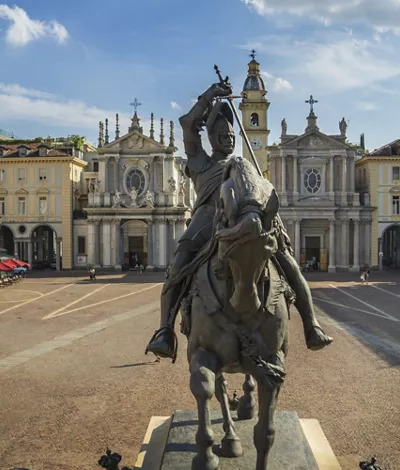
Turin turns sustainability into art
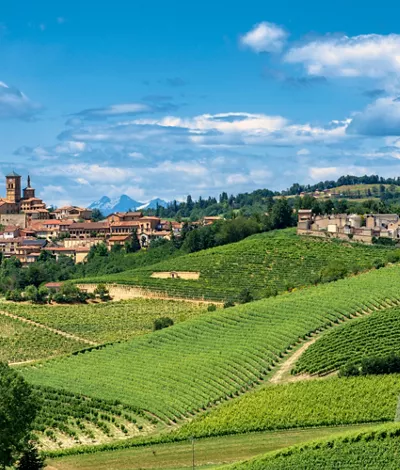
Piedmont: A weekend of nature and dance in Monferrato

Turin International Book Fair
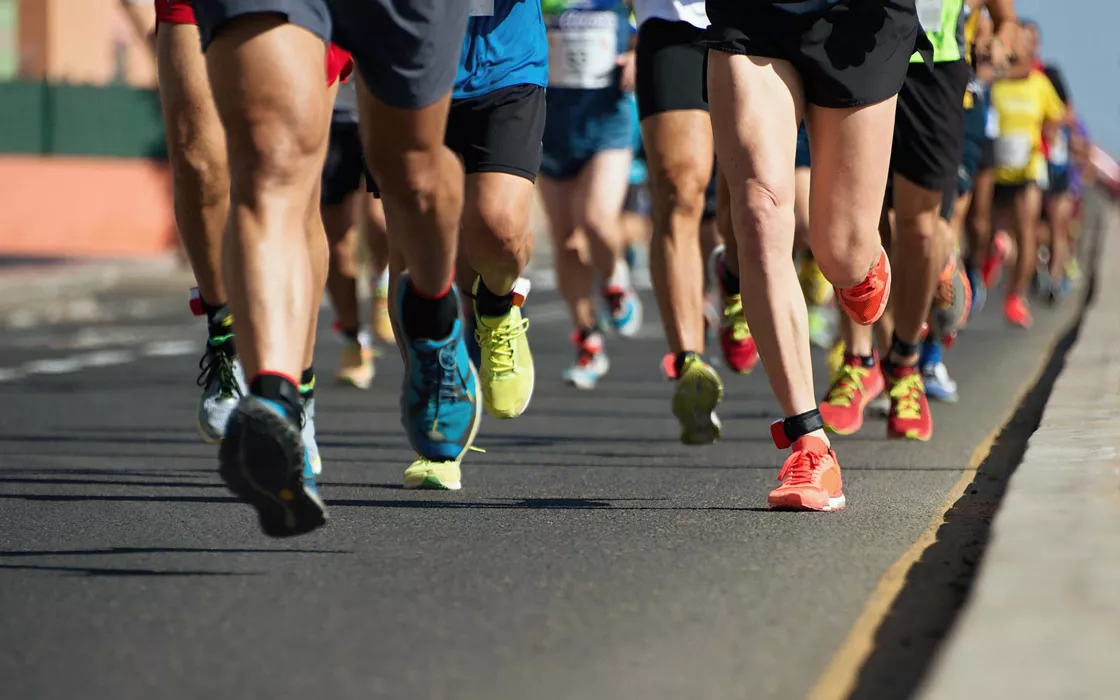
Torino Royal Marathon 2024

The source of inspiration for your Italian adventures
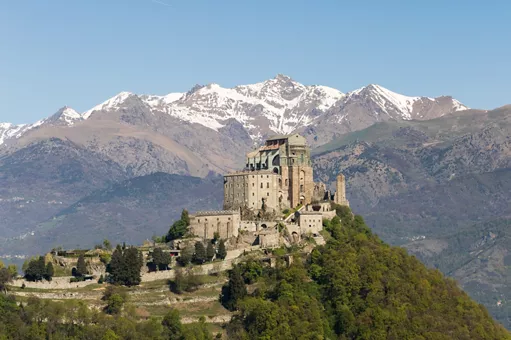
The most scenic golf courses in Italy
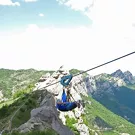
Zip lining, an adrenaline-filled flight surrounded by nature
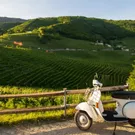
Vespa travel in Italy or on a vintage Fiat 500 for an authentic Italian holiday
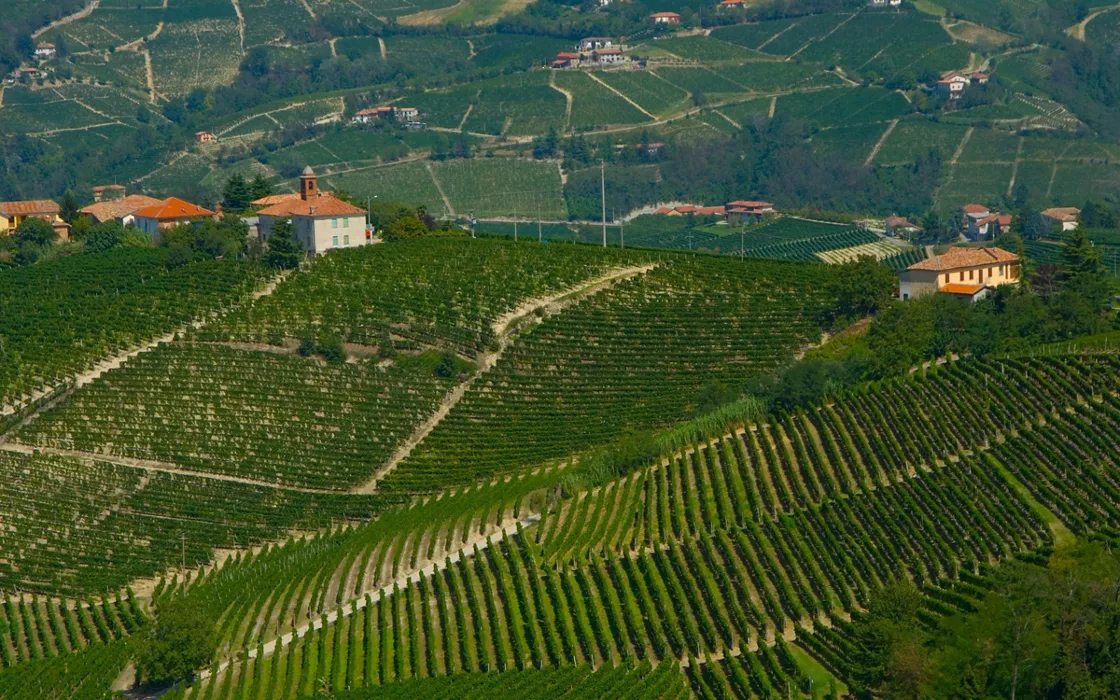
Hillside cycling in Upper Monferrato
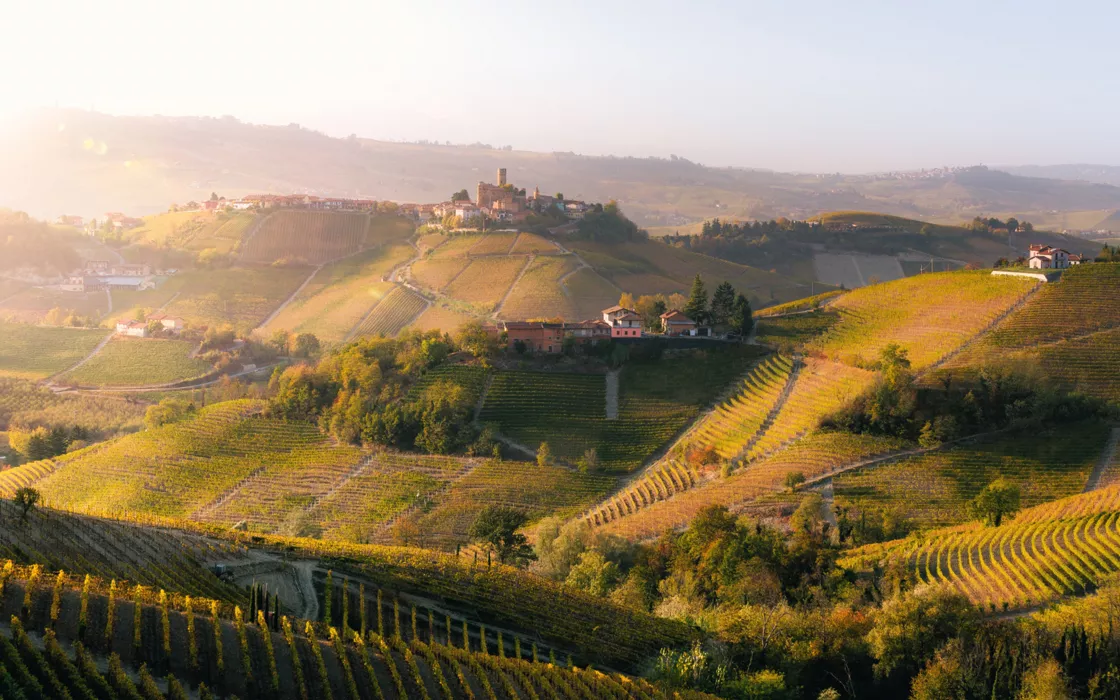
His Majesty of the Langhe: Barolo on a Vespa
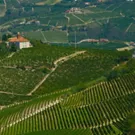
A fascinating region of nature and history
Piedmont is sure to enchant you with its mountains, hills, typical flavours and uniquely elegant cities. An extraordinary heritage of art and history, culture and nature, characterises Piedmont, a region with a thousand faces, one more interesting than the other: cities of rare elegance, mountains that lend themselves to splendid skiing or walking, fascinating villages, hills that are among the best known in the world for their extraordinary wine production.
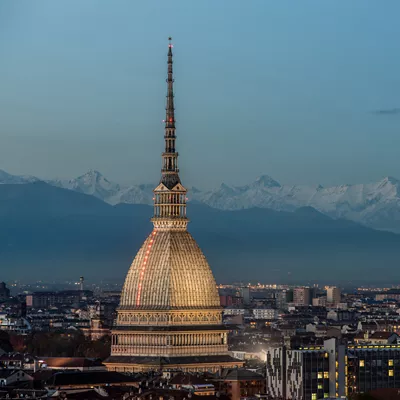
Continue living like an Italian
Subscribe to the Newsletter so as not to miss places, events and experiences for experiencing the best side of Italy: the authentic one.
Keep up to date
Would you like to learn about the most authentic experiences to be had in Italy, stay up to date on the most interesting events, discover our special offers and receive lots of insider hints and tips?
Save your favorite places
Create an account or log in to save your wishlist
Do you already have an account? Sign in
- Travel Consultant
- Eat & Drink
- Art & Culture
- Sports & Leisure
Piedmont Italy
Piedmont travel guide, why we love piedmont.
Piedmont ( Piemonte ) is known for its high quality food and wine by discerning travellers. The Piedmont region is rich in contrasts bound together by a taste for tradition and prestigious wines. Whilst the region is known for its gastronomy and famous wine regions, be sure to also explore Piedmont’s diverse landscape, from the flat plains of the Po Valley and the mountain peaks of Monviso and Monte Rosa to the north to the gently rolling Apennines in the south. Piedmont has many points of interest from medieval abbeys, dramatic castles and forts, magnificent baroque towns and pretty alpine villages.
You can be skiing along the zigzag of pistes, fondly referred to as the Via Lattea (Milky Way) one day, and take in the calm easy serenity of Lake Orta and Isola San Giulio the next. Plus you will always having the opportunity to sample some of Italy’s most unique flavours in the locally produced wines of the Langhe and Asti Monferrato and the gastronomic fare that punctuates every local festival, event and restaurant.
compliments of Turismo Torino
Piedmont Italy is divided into eight provinces:
Turin, Asti, Cuneo, Biella, Vercelli, Novara, Alessandria and Verbano-Cusio-Ossola. It borders with France and Switzerland and within Italy itself, it rubs shoulders with the regions of Lombardy, Liguria, Aosta Valley and Emilia Romagna.
Despite the beauty of Piedmont’s natural landscapes and mouth-watering culinary crown of delights, tourists still haven’t completely discovered this charming corner of Italy. What makes this region so appealing though is the high quality experience it offers the discerning traveller. Quality is king, attention to detail never compromised. Piedmont focuses on sustaining and promoting local culture and traditions, preserving and celebrating its precious resources that it is happy to share from its doorstep at the foot of the Alps.
Here we highlight some points of interest in the Piedmont region:
Asti and monferrato.
A breathtakingly beautiful area of Piedmont, Asti and Monferrato have become inextricably linked with fine wines and gastronomy. The landscape is dotted with historic castles, churches, towns and villages, is lush with flora and fauna in spring and boasts an assortment of festivals during the autumn months. The historic town centre of Asti is not to be missed as it is distinctive for its medieval streets and fortified houses built by local nobles in the 12 th century. However, the province of Asti is most famous for its wine, with Asti town at the centre of this district. It produces some of Italy’s finest classic reds including Barbera, Freisa, Grignolino and Dolcetto. Nevertheless, their fame is surpassed internationally, by Martini & Rossi’s Asti Spumante and Moscato.
Asti’s wines can be sampled at the Sagre di Asti, a food and wine festival that starts on the second Sunday in September and includes the Douja d’Or wine festival.
The world famous Palio di Asti also takes place in this period on the third Sunday of September. This celebrated bareback horse race has its origins in a medieval battle between Asti and Alba, which was won by Asti. After the victory, a race took place around Alba’s city walls and thereafter around the city of Asti. It is the oldest recorded Palio in Italy.
The province of Asti is also rival to Alba from October to December during the white truffle season. However, despite the fact that Alba is more internationally renowned for its truffle fair some of the best examples of the pricey fungus are to be found in the surrounding soils of Asti. After all that food and drink a bit of rest and relaxation can be had at the nearby Roman spa town of Acqui Terme. The curative waters of the Bollente spring pour forth over the scalloped marble fountain in Piazza della Bollente. In the second half of the 20 th century, people with ill health flocked to the town, which meant that its attraction as a tourist destination dwindled. However, a resurgence of interest in spas led to restoration work being done on many of the town’s existing thermal baths.
Acqui Terme, photo by: Your Friend In Italy
Alba and The Langhe (in the province of Cuneo)
The hilly area to the south and east of the river Tanaro boasts a veritable treasure trove of picturesque villages, towns and agricultural landscapes. From the gently rolling vineyards of the Langhe ( Langa Bassa ) in the south some of Italy’s finest and famous wines are produced, including Barolo, Barbaresco, and Dolcetto.
Alba, considered to be the capital of the Langhe and at the heart of the wine country, is also home to the pricey and pungent delicacy, the white truffle. What’s more, hazelnuts and the soft hazelnut chocolate cream of Ferrero and Gianduja fame are to be found in the Alta Langa forests in the north and east of the region.
Situated 62 kilometres south of Turin, Alba is also host to an annual white truffle festival during October. Once known as the town of 100 towers, 20 of these remain dotted around the city centre. In close proximity to the main street, via Vittorio Emanuele and Piazza Risorgimento you will also find the city’s main cultural attractions, hotels, bars and restaurants.
Val di Susa Piedmont
Val di Susa (the Susa Valley)
A place of chivalry, myths, legends and folklore, Val di Susa is the Alpine corridor down which Carthagian General Hannibal made his way to Rome. An ideal location for day trips and short breaks from Turin. The first sizeable town you come across 25 kilometres from Turin, with its town centre dating from medieval times, is Avigliana. Famous with the locals for its lakes, Lago Grande and Lago Piccolo don’t disappoint. Here you can enjoy swimming and sunbathing, relaxing walks, lakeside lunches, bird watching, barbecues and boating.
Just a couple of kilometres out of Avigliana, perched on the craggy peak of Monte Pirchiriano is Sacra di San Michele , one of Piedmont’s most famous historical sites.
Sacra di San Michele
The oldest part of the abbey dates back to the 10 th century. It was originally built for the Benedictine monks but from 1836 has been in the hands of the Rosminian Fathers. You can either drive or walk up to the top. The walk is a steep climb up Monte Pirchiriano to the Abbey and takes you past the fourteen stations of the cross. However, on clear days you will be rewarded with glorious views of the surrounding valley and snow-capped mountains. Making your way up the valley, you come to Susa itself. Susa boasts a number of Roman sites: the Roman Porta Savoia gate, the 11 th century cathedral of San Giusto and Parco di Augusto once the site of the roman forum, which winds its way up to the Arco di Augusto and symbolises the peace pact between the Romans and the Val di Susa Celts.
Further on you can spot the ruins of the Terme Graziane which is thought to have been either an aqueduct or part of the town’s defence system. There is also a medieval castle, which has sat high above the town since the 10 th century. As you approach the Alps, and just 12 kilometres from Susa, one other town not to be missed is Exilles. Guarded by its own stone fort, which is now a museum, Forte di Exilles gives the impression of being hewn out of the mountains themselves. This dramatic Celtic stronghold is a maze of narrow cobbled streets, networks of tunnels and medieval atmosphere, which remains untouched by mass tourism.
Forte di Exilles
Piedmont’s Mountains
The upper Susa and Chisone valleys comprise part of the Via Lattea (Milky Way) a constellation of ski pistes. The 400 kilometres (250 miles) of ski runs (140 ski slopes) that zigzag over the Alps are popular with locals and International lovers of winter sports. Officially, the winter ski season starts on 8 th December, the Feast of the Immaculate Conception and officially closes at the end of the Easter holidays although there is always something to see and do no matter what the season. Non-skiers can also enjoy white water rafting at Fenils near Cesana Torinese, hiking in three of the nature reserves in Val Chisone and Val di Susa and biking around Sauze D’Oulx.
photo by Zetablue Photography
This exclusive resort was the original idea of Giovanni Agnelli, founder of Fiat and was first built in the 1930s. It provides the most challenging pistes of the Via Lattea ski area. It boasts the area’s only Club Med and Europe’s highest golf course at over 2,000 metres, the latter which can be used after the snow thaws.
A series of hamlets along the valley floor, Pragelato is famous for cross-country skiing and snow-shoeing and has the longest series of trails in the area which are linked to the via Lattea. It is also famous for its Pomaretto wine and Genepi liqueurs, made from a mountain herb. Places to see are the Museo del Costume e delle Tradizioni delle Genti Alpine which exhibits everyday objects in recreations of a stable, kitchen, bedroom and breadroom. A particular feature of the valley are the sundials (Meridiane). About 140 of them exist in the valley and you can learn about their history (the oldest dates back to the 17 th century) in Pragelato’s L’Ombra del tempo Centro di Documentazione sulla Meridian.
Pragelato compliments of Pragelato Tourism
Fenestrelle
Near Pragelato is the largest fortification in Europe and the longest wall construction after the Great Wall of China: Forte di Fenestrelle. Building started in 1708 by Savoy Duke Vittorio Amedeo II. It comprises three forts: San Carlo, Tre Denti and delle Valli are joined together by a staircase of around 4,000 steps. The entire structure is about 5 kilometres long and climbs 700 metres up the mountainside. An exhibition of military uniforms reconstructs some battle scenes from the Risorgimento up to the Second World War. In summer there are also music concerts and performances.
Sauze D’Oulx
Famous for its 17 th century old stone houses, series of fountains in the town centre and stomach-churning hairpin bends that wind their way up from Oulx to Sauze D’Oulx, it is locally known as Balcone degli Alpi (The Balcony of the Alps). Popular for skiing with a young crowd and also with Brits it is as renowned for its apres ski partying as much as for its winter sports.
One of the first Alpine towns to develop as a ski resort and one that retains much of its original charm and traditional character. Part of the via Lattea it also has lots of cross-country ski runs too and in the summer you can hike from here to Forte Caberton. At 3,124 metres it is the highest fort in the Alps. Construction began in 1898 and completed in 1906.
Cesana Torinese and the Hamlet of San Sicario
This is a series of 14 hamlets and one of the more isolated mountain resorts. Only seven of these hamlets are inhabited all year round with the local economy based on producing local liqueurs made with mountain herbs. Cheeses, deer sausage and honey are also local specialities. Five kilometres away and 350 metres above Cesana proper, skiers flock to the hamlet of San Sicario in the winter season. A small resort, it is popular with families on the via Lattea and linked to Sauze D’Oulx and Sestriere.
Bardonecchia
Located on the banks of the river Dora and not linked to the via Lattea, this is popular for downhill skiing and snowboarding. From the majestic Mount Jafferau, which takes you 2,750 metres up you have an extensive choice of runs for all levels. As a ski resort it is popular with families but it is also good for spotting deer, foxes and chamois so be careful when driving! The main skiing area is at Campo Smith and beyond this is a tiny hamlet called Melezet which has a ski station and a museum exhibiting ancient frescos and art from local churches. The old town in Bardonecchia is a maze of narrow medieval streets and the street names are written in both Italian and the local dialect of Occitan. Famous for local wood carving art you can buy souvenirs from workshops on the main street in Bardonecchia, via Medail.
Lake Maggiore Isolabella
Lake Maggiore, Lake Orta and Biella
North-west of Turin, Piedmont is proud geographical host to two of the most beautiful lakes in Italy: Lake Maggiore and Lake Orta . The former stretches for 62 kilometres from Piedmont, through Lombardy to Ticino in Switzerland but the Piedmont section of lake is world famous for its pretty towns, villages and islands including Stresa, Arona, and the Borromean islands. However, one of the less known jewels of Piedmont has to be Lake Orta. With its enchanting setting, surrounded by lush, green hills and with the pretty as a picture Isola San Giulio just a short boat ride from the shore, you couldn’t go wrong. Isola San Giulio is home to the cloistered Benedictine nuns of San Giulio whose dedication to the preservation of local traditional crafts, and specialisation in printed linens, means that you are not short of pretty and practical ideas for souvenirs.
Lake Orta, photo by: www.yourfriendinitaly.com
Piedmont is, of course, famous for its wines, but did you know that it also produces award-winning beers? Menabrea is arguably the most famous of the artisan beers, produced in Biella since 1846. The Menabrea brewery and museum can be visited and the beer can also be sampled along with local food specialities in Menabrea’s own restaurant which is located in the former factory stables.
Eleven kilometres north of Biella is the UNESCO World Heritage site the Santuario di Oropa. Dating from the 11 th century it was also once a Savoy residence, being added to in the 16 th and 17 th centuries by Guarino Guarini and Filippo Juvarra, two of the House of Savoy’s favourite Italian architects. The Santuario di Oropa rests majestically atop the sacred mountain of Oropa and is a peaceful retreat offering beautiful views. It’s definitely a place to simply relax and absorb the tranquillity and beauty of the surroundings.
So, plan your trip to Piedmont, Italy! Free Piedmont Italy Trip Planner
Santuario di Oropa, photo by: Your Friend In Italy
Discover more about Piedmont with these articles from our Piedmont Travel guide:
Foodies Guide to Piedmont
Piedmont Wine & Wine Regions
Barolo Wine Roads – great wines of the Langhe
What to Buy in Piedmont – Souvenirs & gift ideas from Piedmont
Relax in the Alta Langa
You Might Also Like
Why we love turin…, find us on facebook.
Discover Turin & the Piedmont region
CONTACT INFO
© 2021 TURIN ITALY GUIDE. All rights reserved.
Visit Turin | Best Cities To Visit In Italy | Eat Drink Italy | Things To Do In Turin | Turin Italy Attractions | Italy Travel Guide | Juventus Turin | Italian Wine Regions | Best Chocolate In Italy | Types Of Italian Coffee | Shopping Torino | Best Places In Italy To Visit
Piemonte and Valle d’Aosta Travel Guide
Book your individual trip , stress-free with local travel experts
- roughguides.com
- piemonte-valle-daosta
- Travel guide
- Itineraries
- Local Experts
- Travel Advice
- Accommodation
Plan your tailor-made trip with a local expert
Book securely with money-back guarantee
Travel stress-free with local assistance and 24/7 support
Carlo DeSando
Wonderful Time in Italy We were covered from the moment we landed in Rome. The drivers were great, the connections were flawless, and it was well-planned a...
In the extreme northwest of Italy, fringed by the French and Swiss Alps and grooved with deep valleys, Piemonte and Valle d’Aosta are among the least “Italian” regions in the country.
What to see in Piemonte
Piemonte food and drink, piemonte’s ski resorts, alba and le langhe, northern piemonte, valle d’aosta’s bassa vale, aosta and around, the gran paradiso national park, the northwest: around mont blanc.
Piemontesi spoke French until the end of the nineteenth century and Piemontese dialects reflect Provençal influence; Valle d’Aosta is bilingual and in some valleys the locals, whose ancestors emigrated from Switzerland, still speak a dialect based on German.
Piemonte (literally “at the foot of the mountains”) is one of Italy’s wealthiest regions, known for its fine wines and food, and for being home to huge Italian corporations such as Fiat and Olivetti. Italy’s longest river, the mighty Po, begins here, and the towns of its vast plain have grown rich on both manufacturing and rice, cultivated in sweeping paddy fields.
Tailor-made travel itineraries for Italy, created by local experts

8 days / from 2646 USD
Experience the hit TV show 'The White Lotus' in Sicily
Stay in beautiful Taormina with gorgeous views of Mount Etna and discover Sicily, including famous filming locations. Go on exclusive wine tastings, discover the Greek theater in Taormina with a private guide, visit other Sicilian towns and enjoy the crystal clear water on this week-long trip.

8 days / from 3289 USD
Enchanting Italian Lakes
Experience the picturesque lakes of Northern Italy, including Lake Garda, Como, Lugano and Maggiore; explore the charming Borromean Islands – former favourites of Ernest Hemingway – and stroll the romantic streets of Verona and Milan. All of this, and much more, with this self-drive trip!

16 days / from 3289 USD
From Venice to Florence: A Grand Tour of Northern Italy
From the atmospheric canals of Venice and the picturesque coastline of Cinque Terre, to the trendy designer boutiques of Milan and the Renaissance-infused streets of Florence, Northern Italy has plenty to offer. Experience it all with this comprehensive trip.
Turin , on the main rail and road route from France to Milan, is the obvious first stop and retains a freshly restored Baroque core, with a cornucopia of galleries and museums. South of Turin, Alba is a good base for visiting the region’s wine cantinas. Asti, to the southeast, comes to life during its famous medieval Palio, or horse race. For the rest of the region, winter sports and walking are the favourite activities, with Sestriere being the main skiing centre, while the ascent of Monviso in the far west appeals to the climbing fraternity.
Bordered by Europe’s highest mountains, Mont Blanc, Monte Rosa and the Matterhorn, veined with valleys and studded with castles, the Valle d’Aosta region is picturesque. The Aosta Valley cuts across it, following the River Dora to the foot of Mont Blanc. It’s in the more scenic tributary valleys that you’ll want to linger, and Aosta, the regional capital, makes an excellent staging post on the way to the smaller mountain resorts.
Straddling the two provinces is the protected zone of Italy’s oldest and largest national park, the Gran Paradiso. The mountain rifugi and hotels here become packed in summer but development is purposely restrained to preserve pristine conditions.
Although the western shore of Lago Maggiore is actually in Piemonte, we’ve treated all the lakes as a region and covered them in “ Lombardy and the Lakes ”.
Piemonte and Valle d’Aosta are a paradise for gastronomes and connoisseurs of vintage wines. Rich Piemontese cuisine betrays close links with France through dishes like fonduta (fondue) and its preference for using butter and cream in cooking. Piemonte is perhaps most famous for its white truffles, the most exquisite of which come from around the town of Alba and are ferociously expensive. They are most often used in the form of shavings to subtly perfume a dish of pasta or a risotto. Watch out too for porcini mushrooms, chestnuts, and bagna cauda – a sauce of oil, anchovies, garlic, butter and cream, also served as a fondue. Agnolotti (pasta filled with meat or possibly with mushrooms or other vegetables) is the best-known dish, followed by meat buji (boiled) or braised in wine. Cheeses to look out for are tomini , robiole and tume .
The sweets, too, are marvellous: spumone piemontese , a mousse of mascarpone cheese with rum; panna cotta, smooth cooked cream; and light pastries like lingue di gatto (cat's tongues) and baci di dama (lady’s kisses). The best known is the bonet , a confection of chocolate and amaretti. Turin is also credited as the home of zabaglione, an egg yolk, sugar and Marsala mixture used to fill pastries.
The hills of Le Langhe and Monferrato produce traditional wines such as Barolo, Barbera and Nebbiolo. These fine reds need ageing, and Barolo in particular can be very expensive. Everyday wines are made from the dolcetto grape, notably Dolcetto d’Alba. Probably the most famous is the sweet sparkling wine, Asti (wine makers dropped the “spumante” from the name in 1994 in a bid for a new image) – there has been a trend in recent years to make dry spumante too. Martini & Rossi and Cinzano vermouths are also produced in and around Turin , a fusion of the region’s wines with at least thirteen of the wild herbs that grow on its mountains. The traditional version, now a brand name, is Punt e Mes (“point and a half”) – one part bitter to half a part sweet.
Piemonte’s main, purpose-built ski areas – Oulx, Claviere, Cesana, Sestriere, Sansicario, Sauze d’Oulx and Pragelato – collectively constitute some 400km of interconnected runs, known as Via Lattea (The Milky Way). They are well used by British tour operators and all had their facilities upgraded in 2006, when they hosted the alpine events of the Winter Olympics 2006. You can gain access to the ski area from Pragelato on the Pattemouche-Anfiteatro cableway: a daily lift-pass covering all the resorts costs €36.
Sestriere was the dream resort of Fiat baron Gianni Agnelli, who conceived it as an aristocratic mountain retreat. Today, the reality is a bland resort dominated by two cylindrical towers, though the mountain is impeccable – the choice for World Cup and Olympic ski races. Nearby modern Bardonecchia is a weekenders’ haunt, with small chalet-style hotels and more than 100km of runs – it's not directly connected to the Via Lattea, and is run by the Bardonecchia ski company.
A flourishing medieval town, and later the seat of one of Piemonte’s few Renaissance courts, Saluzzo, 57km south of Turin , retains much of its period appeal. Flaking ochre-washed terraces and Renaissance houses line cobbled streets that climb up to a castle, from where you can enjoy views of the town. A pleasant place to stay, the town makes a good base for walks in the Po, Varaita and Maira valleys, which cut through the foothills of the Monviso mountain towards France.
The town of Alba and the surrounding Langhe hills (protected by UNESCO World Heritage status) signify two things: white truffles and red wine. The exquisite truffles are more delicate and aromatic than the black variety found further south, whereas most of the area’s very different wines all come from the same grape, the Nebbiolo. The final taste is dependent on the soil: tuff-rich soil produces the grapes for the light red Nebbiolo; calcium and mineral-rich soil for the more robust Barolo, the “King of wines and the wine of Kings”. The entire picturesque area around Alba is dotted with attractive hill-towns, castles, wineries and cantinas, the best being at Barolo and Pollenzo. Ask at the tourist office for one of the excellent free maps and suggestions for wine tours.
A few kilometres south of Alba, in the heart of Le Langhe, the most famous spot is Barolo, which gives its name to one of the premier Italian wines. It’s a small village with peach- and ochre-washed houses set among extensive vineyards. A steady stream of wealthy gastronomes and wine connoisseurs come here for the Enoteca Regionale del Barolo and the WiMu Wine Museum housed in a turreted castle on Piazza Falletti 1, while for a more quirky take on the wine industry, there's the original Museo dei Cavatappi , or Corkscrew Museum, at Piazza Castello 4.
Though not as famous as Barolo, the pretty village of Pollenzo, situated just south of the Alba–Bra road, merits a visit. The buildings at Piazza Vittorio Emanuele 13 are of particular note: once home to the Agenzia di Pollenzo, King Carlo Alberto’s headquarters for viticultural trials, they now belong to the Slow Food association and house the University of Gastronomic Sciences and the Banca del Vino , as well as a hotel and restaurant. Stored in the Savoy wine cellars, the Wine Bank keeps wines from all over Italy – a vault of the best vintages. Professional sommeliers guide you through the wine-tasting sessions, and it's an essential stopping-point for all wine lovers.
Some 30km northeast of Alba, in Piedmont, the wine continues to flow in Asti, one of the most important towns in medieval times, whose province is capital of Italy’s sparkling-wine industry and the most famous producer of Asti Spumante. Each September, this small town becomes the focus of attention as it gears up for its Palio, the oldest horse-racing festivals in Italy. On the day of the race, the third Sunday in September, there’s a thousand-strong procession of citizens dressed as their fourteenth-century ancestors, before the frenetic bare-backed horse race around Piazza Alfieri – followed by the awarding of the palio (banner) to the winner and all-night partying.
The rest of the year, the piazza and the former Palio site, the Piazza del Palio, host the region’s largest open-air market (Wed & Sat). On the second weekend of September the piazza houses the Festival delle Sagre during which producers sell traditional dishes and wines in a reconstructed medieval village, and hundreds of people dress in costume to evoke agricultural life in the Middle Ages. If you want to sample Asti Spumante or other wines from the region, come for the Douja d'Or wine festival (held from the second Friday to the third Sunday in September), where there are tastings in the Palazzo del Collegio.
Things to do in Asti
The beauty of Asti is that it holds history, culture, cuisine and landscapes all in one. The Torre Troyano clock tower is a medieval monument that is well worth a visit. The underground cathedrals are also a treasure worth visiting - once used as underground tunnels for the Cathedral, now used as wine cellars due to the ideal temperature and conditions for storing wine. Being a capital for wine, vineyards have adapted to tourism and offer wine tours and wine tasting. Truffle is famous in Asti, growing locally in nearby forests. Many restaurants offer truffle in their dishes so be sure to try the local cuisine.
Agliano spa is perfect for relaxing and there is a golf course on the perimeter of Asti for the golfers. There are trekking trails along the wine routes that make a pleasant afternoon taking in the hilly landscapes and stopping off at vineyards for tasting. You can walk these trails or hire a bicycle. For wildlife, there is the Rocchetta Tanaro National Park and the unique WWF Oasis of Forteto della Luja - ideal for birdwatching.
The main attraction of northern Piemonte is the mountains, especially the dramatic Alpine Valsesia, which winds up to the foot of Monte Rosa on the Swiss border. On the way is the industrial town of Ivrea and one of the region’s most visited sanctuaries, the Santuario di Oropa near Biella. From here you’re well poised for either Piemonte’s mountains or those of Valle d’Aosta, a few kilometres west. Worth a slight detour is the magical train ride that starts at Domodossola, conveniently en route if you’re heading for Switzerland.
Heading north from Piemonte into Valle d’Aosta, the A5 and SS26 road snake their way through the Bassa Valle (Lower Valley), peppered with ancient forts and castles. The Valle d’Aosta is dominated by the highest mountains in Europe, namely Mont Blanc, Gran Paradiso, Monte Rosa and the Matterhorn, and in winter the region sees plenty of skiers from Turin and Milan thanks to its excellent ski resorts . In summer it’s a popular destination too, with plenty of outdoor sports including mountain climbing and trekking.
Castello di Fénis
Backed by wooded hills and encircled by two rows of turreted walls, the Castello di Fénis is the result of various building campaigns between the twelfth and fifteenth centuries. The original manor house belonged to the Challants, Viscounts of Aosta, who added a semicircular stairway in the courtyard in the early fifteenth century. The courtyard is adorned with wonderful frescoes, including a courtly St George rescuing a princess from the clutches of a dragon, overlooked by a tribe of wise men and prophets brandishing moral maxims on curling scrolls.
Aoasta, the attractive mountain-valley capital of Valle d’Aosta province, is an ideal base for exploring the northwest of the region. Surrounded by the Alps, the town’s key attraction is its position, with access to the lovely valleys of the Parco Nazionale del Gran Paradiso, the ski resorts of Mont Blanc and a sprinkling of castles, such as the impressive Castello di Sarre.
For some of the area’s most beautiful mountains and valleys, head to the Gran Paradiso National Park – Italy’s first national park, spread around the valleys at the foot of 4061m-high Monte Gran Paradiso. The park’s three valleys – Cogne, Valsavarenche and Val di Rhêmes – are popular, but tourist development has been cautious and well organized. The hotels are good and the campsites not too vast. There are a few mountain rifugi and bivacchi (unoccupied shelters) between which run well-marked footpaths. Though it’s primarily a summer resort for walkers, the cross-country skiing is also good, and every winter a 45km Gran Paradiso trek is organized at Cogne (contact the tourist office in Cogne for details). The starting point for the ascent of Gran Paradiso itself is Pont in the Valsavarenche, while Cogne gives access to the Alta Via 2, a long, high-level mountain trail.
Wildlife in Gran Paradiso National Park
Gran Paradiso National Park owes its foundation to King Vittorio Emanuele II, who donated his extensive hunting park to the state in 1922, ensuring that the population of ibex that he and his hunters had reduced to near extinction would, after all, survive. There are now around 3500 ibex here and about 6000 chamois, living most of the year above the tree line but descending to the valleys in winter and spring. The most dramatic sightings are during the mating season in November and December, when you may see pairs of males fighting it out for possession of a female. You might also spy golden eagles nesting, and there are a number of rare Alpine flowers, most of which can be seen in the botanical garden in the Val di Cogne.
Dominated by the snowy peaks of Mont Blanc (Monte Bianco to the Italians), the northern reaches of Valle d’Aosta are spectacular and very popular. The most sensational views are from the cable cars that glide and swoop across the mountain from Courmayeur, while the resort of La Thuile, which hosted the Women's Skiing World Cup in 2016, offers superb winter sports.
Located at the foot of Mont Blanc, Courmayeur is the smartest and most popular of Valle d’Aosta’s ski resorts. It's the region's oldest Alpine resort – indeed, Italy's first alpine guides association was established here in 1850. The scenery is magnificent, the skiing good, and the area is equally popular in summer, with excellent climbing, mountain biking, rafting, angling and 100km of walking trails: the tourist office can advise on routes. The thermal baths in Pré-Saint-Didier, 6km south of Courmayeur are a lovely spot to soothe aching muscles after a day's skiing or hiking.
Discover more places in Italy

The Rough Guides to Italy and related travel guides
In-depth, easy-to-use travel guides filled with expert advice.

Find even more inspiration here

Planning your own trip? Prepare for your trip
Use Rough Guides' trusted partners for great rates
written by Rough Guides Editors
updated 26.04.2021
Ready to travel and discover Italy?
Get support from our local experts for stress-free planning & worry-free travels.
- Where to stay
- Travel advice

Landmarks in Piemonte
Visit italy.

Landmarks Divided by Region
Italian genealogy, family history.

Cultural Heritage
Info on italian regions.
Unexplored Piemonte: 7 Hidden Gems Near Turin, Alba, and Asti You Can’t Miss
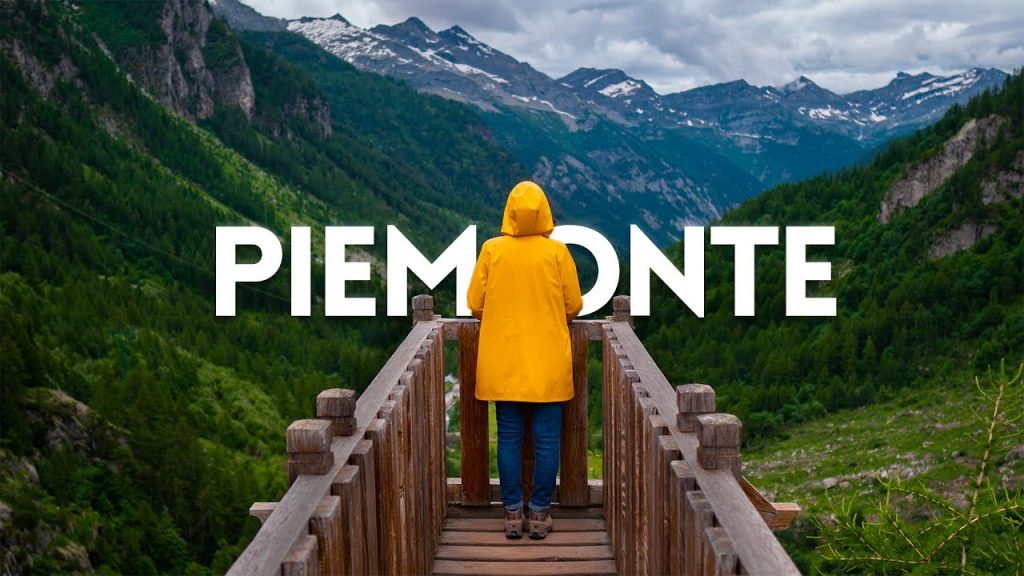
Piemonte, nestled in the north-western corner of Italy, is often celebrated for its world-class wines and a rich culinary heritage that competes with any region across the globe. Yet, there’s so much more to this enchanting region. It hosts a bevy of lesser-known, but equally mesmerising attractions that often slip through the typical tourist itinerary. Let’s embark on a journey to discover seven such unique locations in Piemonte that deserve to be highlighted, and perhaps, cherished even more.
Wine guide Index
Discover the Hidden Treasures of Piedmont: A 3-Day Guided Tour
Immerse yourself in the breathtaking beauty and hidden treasures of the Piedmont region in Italy with our exclusive three-day guided tour. Experience the vibrant mix of nature, history, and culture as we explore everything from majestic mountains to enchanting caves and from stunning waterfalls to tranquil lakes. This journey, designed to delight your senses, is perfect for those looking for a unique and off-the-beaten-path Italian adventure.
Day 1 takes us to the heart of the Anzasca Valley for the Monte Rosa Trek in Vallanzasca. Witness the grandeur of Monte Rosa, Western Europe’s second highest peak, and learn about the valley’s fascinating history. Post this exhilarating trek, unwind as we drive you to the Grotte di Bossea. Marvel at this subterranean wonder, and uncover the secrets it holds.
Day 2 will sweep you away to the breathtaking landscapes of Val Formazza. Stand awestruck by the beauty of Cascata del Toce, the second highest waterfall in Europe, and explore the serene shores of Diga di Morasco. The emerald green lake, surrounded by towering mountains, promises a view you will cherish for a lifetime.
The final day brings history alive with a visit to the formidable Fort di Fenestrelle, Europe’s largest fortified structure. Traverse its ancient staircases and feel the echoes of the past. From there, we move on to the charming village of Usseaux, one of Italy’s most beautiful villages. End the day at the sacred Santuario di Oropa in Biella, a UNESCO World Heritage site, where you can seek tranquility in its spiritual ambience.
Immerse yourself in the unexplored beauty of Piemonte, a region brimming with hidden gems and stunning landscapes. Away from the bustling cities of Turin , Alba , and Asti , discover captivating treks like the Monte Rosa trek in Vallanzasca, which offers enchanting vistas and the opportunity to explore the local wilderness. Venture into the depths of the Grotte di Bossea in Frabosa Soprana, a natural reserve that boasts a remarkable underground world complete with artistic installations, ancient stalactite formations, and the intriguing skeleton of a prehistoric bear.
Turn the pages of history as you explore the monumental Fort di Fenestrelle, the second-largest fortification in the world. Experience tranquility in the charming hamlet of Usseaux, adorned with vibrant murals and flowers. Recharge your spirit at the UNESCO-listed Santuario di Oropa in Biella, a unique architectural marvel dedicated to Madonna Nera. The natural spectacle of Cascata del Toce in Val Formazza, one of Europe’s highest waterfalls, and the enchanting Diga di Morasco, with its enthralling legend of a submerged town, complete this circuit of hidden treasures in Piemonte.
1. The Enchanting Trek of Monte Rosa in Valle Anzasca:
Starting from Cuneo, the charming gateway to Valle Anzasca, you will embark on an unforgettable journey through the imposing Monte Rosa massif. The trek to the Zamboni Zappa Refuge is comfortable yet thrilling, revealing a breathtaking panorama where the Belvedere glacier once lay. Be prepared for unpredictable weather and ensure you’re well-equipped before setting off.
2. The Underground Wonders of Grotte di Bossea in Frabosa Soprana:
The Bossea Caves near Cuneo are not just a natural reserve, but a mesmerising art installation that transforms the underground world into a feast for the eyes. With about 3km of paths and around 650 steps, the journey through this mysterious underworld is nothing short of an adventure. One of the caves’ most fascinating features is a prehistoric bear skeleton, a testament to the site’s ancient history.
3. The Mighty Cascata del Toce in Val Formazza:
In the heart of Verbano Cusio, you will discover the Toce Waterfall, one of Europe’s highest and undoubtedly the most beautiful waterfall in the Alps. The vantage point from the wooden bridge offers a unique panorama of the waterfall and the surrounding valley. A short walk will bring you to the base of the waterfall, an immersive experience worth every step.
4. The Serene Morasco Dam:
The Morasco Dam, nestled in Val Formazza, paints a surreal landscape with its pristine lake, cocooned by the majestic mountains. According to a local legend, the lake hides a submerged town constructed by Ediso, adding an intriguing layer of mystery to the site.
5. The Impressive Fenestrelle Fort:
Fenestrelle Fort stands as the largest fortified structure in Europe and the second-largest brickwork construction in the world. This colossal defensive fortification on the Italian-French border beckons history and architecture enthusiasts. The highlight of your visit might just be the 4000-step stone staircase, a challenge as daunting as it is rewarding.
6. The Charming Village of Usseaux:
Recognised as one of Italy’s most beautiful villages, Usseaux is a delightful hamlet adorned with vibrant flowers and captivating murals. Its quiet, cobblestone streets invite you to immerse yourself in its timeless charm.
7. The Spiritual Sanctuary of Oropa in Biella:
The Sanctuary of Oropa, a UNESCO World Heritage site, is an architectural marvel dedicated to the Black Madonna. After exploring the sanctuary’s distinctive three-level structure, take a cable car ride up to a panoramic viewpoint. A short walk will lead you to a picturesque lake, a serene spot to relax and reflect amid the awe-inspiring mountainous landscape.
5 INCREDIBLE places in PIEDMONT that you may NOT KNOW
Tour and Private Taxi Service Ideas:
- Hidden Gems of Piemonte Full-day Tour: Explore the less-traveled paths of Piemonte with an expert guide who can provide historical insights and ensure a memorable journey.
- Piemonte Private Taxi Service: A chauffeur service with local drivers knowledgeable about the region can make your trip more convenient and tailored to your interests. They can suggest hidden gems, local eateries, and lesser-known sights based on your preferences.
- Adventure and Spirituality in Piemonte: Combine outdoor adventures like trekking at Monte Rosa with serene spiritual experiences at Santuario di Oropa. Perfect for those seeking a balance of adventure and tranquility.
- Art and Nature Tour: A tour combining the artistic Grotte di Bossea and the charming murals of Usseaux, perfect for art and nature lovers.
- History and Legends of Piemonte Tour: Explore the historical Fort di Fenestrelle and hear the captivating legends surrounding the Diga di Morasco.
Conclusion:
These offbeat attractions in Piemonte, each with its unique charm and character, bring you closer to the heart of the region. Far from the usual tourist hustle, these destinations allow you to experience Piemonte’s extraordinary natural beauty, intriguing history, and rich culture from an entirely fresh perspective. So the next time you find yourself in this beautiful corner of Italy, make sure to venture beyond the conventional path and explore the hidden gems that truly capture the essence of Piemonte.
How useful was this post?
Click on a star to rate it!
Average rating 0 / 5. Vote count: 0
No votes so far! Be the first to rate this post.
Articoli recenti
- The most expensive truffle in the World – Stanley Ho Buys for $330,000
- Underground Alba
Journeying from Barolo to Roddi: A Detailed Guide
- Does Barbaresco need decanting?
Property purchase guide to buying a home in Piedmont, Italy
- Barbaresco Wine
- FAQ About Alba
- FAQ about Barolo Wine
- FAQ Truffle
- Piedmont Travel Guide
- Private Jet Information
- Uncategorized
- Alba Wine Tour
- Barolo 1 Day Tour
- Barolo 2 Days Tour
- Outdoor experience
- Alba City Tours
- Alba Truffle Hunting
- Asti walking tour
- Barolo Truffle Hunting
- Alba Ebike Tour
- Cooking Class
- Hot air balloon rides
- Asti Travel Guide
- Alba Italy Travel Guide
- Things to do in Alba
- FAQ About Alba White Truffle
- Alba White Truffle Market
- Barolo Travel Guide
- Best Wines from Barolo
- Barolo’s Best Vineyards
- Where to stay in Barolo
- Best things to do in Barolo
- What is the best time of year to visit Barolo?
- Barolo and Barbaresco Documentary
- Santo Stefano Belbo Guide
- Serralunga d’Alba
- Mondovì Travel Guide
- Lake Maggiore Travel Guide
- Best car rental
- Turin Best Michelin Restaurant 2023 in Italy
- Guide to Piedmont Wines
- Barolo 2016 Vintage
- Characteristics of Nebbiolo
- Characteristics of Moscato
- Destination
- Taxi Barolo
- Taxi Barbaresco
- Taxi La Morra
You may also like
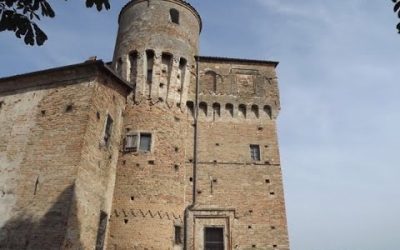
Mondovì Travel Guide: Discovering the Jewel of Piedmont

Travel between Monte Carlo to Barolo

Barbaresco Travel Guide
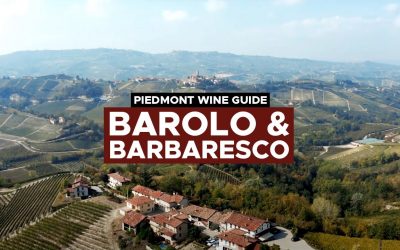
Barolo Travel Guide 2023: Where to stay, wineries
Welcome to Albacitytours.com! We're here to help you explore the enchanting regions of Alba, Barolo, and Langhe. Are you interested in discovering the must-see spots, seeking for local hidden gems, or even customizing your own tour? Feel free to ask us any question you have about our tours, the region's wineries, local cuisine, culture, and more. Our team is excited to assist you in creating an unforgettable experience. Click 'Chat Now' to start planning your adventure today!
[email protected]
Country Afghanistan: +93 Albania: +355 Algeria: +213 Andorra: +376 Angola: +244 Antigua and Barbuda: +1-268 Argentina: +54 Armenia: +374 Australia: +61 Austria: +43 Azerbaijan: +994 Bahamas: +1-242 Bahrain: +973 Bangladesh: +880 Barbados: +1-246 Belarus: +375 Belgium: +32 Belize: +501 Benin: +229 Bhutan: +975 Bolivia: +591 Bosnia and Herzegovina: +387 Botswana: +267 Brazil: +55 Brunei: +673 Bulgaria: +359 Burkina Faso: +226 Burundi: +257 Cambodia: +855 Cameroon: +237 Canada: +1 Cape Verde: +238 Chad: +235 Chile: +56 China: +86 Cyprus: +357 Colombia: +57 Comoros: +269 Congo (Rep.): +242 Costa Rica: +506 Croatia: +385 Cuba: +53 Denmark: +45 Dominica: +1-767 Dominican Republic: +1-809, +1-829, +1-849 Ecuador: +593 Egypt: +20 El Salvador: +503 United Arab Emirates: +971 Eritrea: +291 Estonia: +372 Eswatini: +268 Ethiopia: +251 Fiji: +679 Philippines: +63 Finland: +358 France: +33 Gabon: +241 Gambia: +220 Georgia: +995 Germany: +49 Ghana: +233 Jamaica: +1-876 Japan: +81 Jordan: +962 Greece: +30 Grenada: +1-473 Guatemala: +502 Guinea: +224 Guinea-Bissau: +245 Equatorial Guinea: +240 Guyana: +592 Haiti: +509 Honduras: +504 India: +91 Indonesia: +62 Iran: +98 Iraq: +964 Ireland: +353 Iceland: +354 Marshall Islands: +692 Israel: +972 Italy: +39 Kazakhstan: +7 Kenya: +254 Kyrgyzstan: +996 Kiribati: +686 North Korea: +850 South Korea: +82 Kosovo: +383 Kuwait: +965 Laos: +856 Lesotho: +266 Latvia: +371 Lebanon: +961 Liberia: +231 Libya: +218 Liechtenstein: +423 Lithuania: +370 Luxembourg: +352 Madagascar: +261 Malawi: +265 Maldives: +960 Malaysia: +60 Mali: +223 Malta: +356 Morocco: +212 Mauritania: +222 Mauritius: +230 Mexico: +52 Micronesia: +691 Moldova: +373 Monaco: +377 Mongolia: +976 Montenegro: +382 Mozambique: +258 Myanmar: +95 Namibia: +264 Nauru: +674 Nepal: +977 Nicaragua: +505 Niger: +227 Nigeria: +234 Norway: +47 New Zealand: +64 Oman: +968 Netherlands: +31 Pakistan: +92 Palau: +680 Palestine: +970 Panama: +507 Papua New Guinea: +675 Paraguay: +595 Peru: +51 Poland: +48 Portugal: +351 Qatar: +974 United Kingdom: +44 Czech Republic: +420 Central African Republic: +236 Democratic Republic of the Congo: +243 Dominican Republic: +1-809, +1-829, +1-849 Romania: +40 Rwanda: +250 Russia: +7 Saint Kitts and Nevis: +1-869 Saint Lucia: +1-758 Saint Vincent and the Grenadines: +1-784 Samoa: +685 San Marino: +378 São Tomé and Príncipe: +239 Saudi Arabia: +966 Senegal: +221 Serbia: +381 Seychelles: +248 Sierra Leone: +232 Singapore: +65 Slovakia: +421 Slovenia: +386 Solomon Islands: +677 Somalia: +252 South Africa: +27 South Sudan: +211 Spain: +34 Sri Lanka: +94 United States: +1 Sudan: +249 Suriname: +597 Sweden: +46 Switzerland: +41 Syria: +963 Tajikistan: +992 Tanzania: +255 Thailand: +66 Timor-Leste: +670 Togo: +228 Tonga: +676 Trinidad and Tobago: +1-868 Tunisia: +216 Turkey: +90 Turkmenistan: +993 Tuvalu: +688 Ukraine: +380 Uganda: +256 Hungary: +36 Uruguay: +598 Uzbekistan: +998 Vanuatu: +678 Vatican City: +39-06 (part of the Italian prefix) Venezuela: +58 Vietnam: +84 Guests 1 2 3 4 5 6 7 8+ 12+ Choose your tour Two day Wine Tour 550€ Two Days Luxury Tasting - Customizable Barolo Exclusive Wine Tour - Tailor Made
I have read and agree to the Privacy Policy and Terms of Service. I also agree to receive a series of emails that will teach me how to get more traffic.
Things to Do in Limone Piemonte, Italy - Limone Piemonte Attractions
Things to do in limone piemonte, tours near limone piemonte.

Pasta & Basta

SANREMO FOOD TOUR - Authentic Ligurian street food and Medieval town

DOLCEACQUA & THE NERVIA VALLEY - The home of Rossese wine and Monet's beloved bridge

Barolo Wine and Food Tasting at Piedmont Region Winery

Ligurian Alps Outdoor Canyoning

Ascend to the Dome of the Sanctuary of Vicoforte

Langhe Wine Tour and Tasting - One day with a Somm

Langhe Truffle hunting Experience

Abellonio Cascina Piccaluga - visit to the vineyards, to the wine tasting cellar

Private Barolo / Barbaresco - Piedmont Wine Tours and Tastings
Top attractions in limone piemonte.

Other Top Attractions around Limone Piemonte
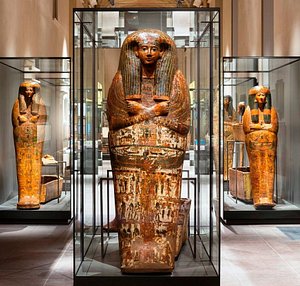
What travelers are saying
- Lago Terrasole
- Limone Piemonte Comprensorio Sciistico
- Scuola Sci Alpi Azzurre
- Chiesa di San Pietro in Vincoli
Several possible answers. Please specify a location.
- - I - Piemonte
Piemonte Tourist attractions
Michelin guide.
- Piazza San Carlo The Green Guide 60 m - Piazza San Carlo, 10123 Torino activities details
- Egyptian Museum The Green Guide 111 m - Via Accademia delle Scienze, 6, 10123 Torino activities details
- Church of Santa Cristina The Green Guide 165 m - Piazza San Carlo, 10123 Torino activities details
- Carignano Palace - Museo del Risorgimento The Green Guide 182 m - Piazza Carlo Alberto, 8, 10123 Torino activities details
- Royal Theater (Teatro Reggio) The Green Guide 344 m - Piazza Castello, 10122 Torino activities details
- Palazzo Madama The Green Guide 354 m - Piazza Castello, 10122 Torino activities details
- Via Roma The Green Guide 355 m - Via Roma, 10121 Torino activities details
- City Museum of Ancient Art of Madama Palace The Green Guide 358 m - Piazza Castello, 10122 Torino activities details
- Piazza Castello The Green Guide 362 m - Piazza Castello, 10122 Torino activities details
- Po Street The Green Guide 374 m - Via Pô, 10124 Torino activities details
- Royal Church of San Lorenzo The Green Guide 424 m - Piazza Castello, 10122 Torino activities details
- Armeria Reale The Green Guide 442 m - Musei reali di Torino - Piazzetta Reale, 1, 10121 Torino activities details
- Musei Reali Torino - Royal Museums The Green Guide 498 m - Piazzetta Reale, 1, Torino activities details
- Piazza Palazzo di Città The Green Guide 501 m - Piazza Palazzo di Città, 10122 Torino activities details
- Pinacothèque dell'Accademia Albertina di Belle Arti The Green Guide 536 m - Via dell’Accademia Albertina, 8, 10124 Torino activities details
- Cappella della Sindone The Green Guide 537 m - Musei reali di Torino - Piazzetta Reale, 1, Turin activities details
- Turin Royal Palace The Green Guide 542 m - Musei Reali di Torino - Piazzetta Reale, 10122 Torino activities details
- Turin Duomo The Green Guide 553 m - Piazza San Giovanni 87, 10122 Torino activities details
- Church of Saint Dominic (San Domenico) The Green Guide 675 m - Via San Domenico 21, 10122 Torino activities details
- Savoyard Gallery (Galleria Sabauda) The Green Guide 684 m - Musei reali di Torino - Piazzetta Reale, 1 86, 10124 Torino activities details
- Palatine Door The Green Guide 697 m - Via XX Settembre, 10122 Torino activities details
- National Cinema Museum The Green Guide 782 m - Via Montebello, 20, 10124 Torino activities details
- Mole Antonelliana The Green Guide 784 m - Via Montebello, 20, 10124 Torino activities details
- Vittorio Veneto Square The Green Guide 1.04 Km - Piazza Vittorio Veneto, 10124 Torino activities details
- Galleria Civica di Arte Moderna e Contemporanea (GAM) The Green Guide 1.15 Km - Via Magenta, 31, 10128 Torino activities details
- Castello del Valentino The Green Guide 1.16 Km - Parco del Valentino, 10126 Torino activities details
- Medieval Village of the Valentino Park of Turin The Green Guide 1.26 Km - Viale Virgilio, 107, 10126 Torino activities details
- Valentine Park (Parco del Valentino) The Green Guide 1.55 Km - Corso Massimo d'Azeglio, 10126 Torino activities details
- Monte dei Cappuccini The Green Guide 1.57 Km - Via V. A. Gioanetti, 10131 Torino activities details
- MAUTO - Automobile Museum, Turin The Green Guide 4.15 Km - Corso Unità d’Italia, 40, 10126 Torino activities details
- Lingotto The Green Guide 4.5 Km - 230 Via Nizza, 103/230, 10127 Torino activities details
- Basilica di Superga The Green Guide 6.74 Km - 10132 Superga activities details
- Reggia di Venaria The Green Guide 8.87 Km - Piazza della Repubblica, 4 - Venaria Reale, Venaria Reale activities details
- Palazzina di Caccia di Stupinigi The Green Guide 10.2 Km - Piazza Principe Amedeo, 7, 10042 Stupinigi activities details
- Rivoli: Castle and Contemporary Art Museum The Green Guide 13.6 Km - Piazza Mafalda di Savoia, 10098 Rivoli activities details
- Route from this place
- Directions to this place
- Route via this place
- Nearby hotels
- Nearby restaurants
Renting a car, an attractive proposition for the holidays

Monthly Report

Eco-mobility

Keep in contact
My michelin account.
Work in progress.

IMAGES
VIDEO
COMMENTS
How to Visit Many of Piedmont's Tourist Attractions for Free - Torino+Piemonte Card. Allowing you to enter dozens of attractions in Piedmont for FREE and offering plenty of other discounts, the Torino+Piemonte Card can save you a lot of money.. Whether you're spending a couple of days in Turin or taking a road trip through the region, the 2,3, or 5-day card will be handy.
2023. 4. Piazza San Carlo. 6,903. Points of Interest & Landmarks. Piazza San Carlo was designed by Carlo di Castellamonte in 1642 and completed in 1650. In the middle of the piazza you'll find the equestrian statue of Emanuele Filiberto (known to all as "El Caval èd brons"), sculpted by Carlo Marocchetti in 1838.
21 Exciting activities, attractions and cities to visit in this amazing region in Northern Italy - including amazing food, wine, castles & natural wonders #piedmont #turin #italy #italytravel ... One of Piedmont's tourist attractions that are well worth visiting is the monumental Fenestrelle Fortress. Often referred to as "The Great Wall of ...
Top places to visit in Piemonte. Alessandria - sweet city. Asti - one of the largest architectural and cultural sights. Gran Paradiso National Park - oldest national park in Italy. Lago Maggiore - the second largest lake in Italy. Lago d'Orta - a pleasant holiday in a mild climate of northern Italy. Montiglio - a lovely hill town.
3 - The Sanctuary of Oropa. One of the unmissable stops on your tour in Piedmont is definitely the Sanctuary of Oropa (Biella). Built in the 4th century on the Sacred Mount of Oropa by order of Saint Eusebius, the Sanctuary is divided into several sections to visit: The Treasury Museum, The Ancient and New Basilica, The Royal Apartment, etc ...
Discover the beauty and diversity of Piemonte, a land of excellence, culture and nature. Visit Piemonte and enjoy a 360-degree experience.
Visit Forte di Fenestrelle. Visiting the Great Wall of Piedmont is one of the best things to do in Piedmont. Fenestrelle Fort has a wall that is about 3km long that is part of a greater fortified complex — hence the nickname. It's a must site for those into military history.
Piedmont. Italy, Europe. Italy's second-largest region is arguably its most elegant: a purveyor of Slow Food and fine wine, regal palazzi and an atmosphere that is superficially more français than italiano. But dig deeper and you'll discover that Piedmont has 'Made in Italy' stamped all over it. Emerging from the chaos of the Austrian wars ...
2. Turin. Italy's fourth largest city, often referred to as the "Capital of the Alps", is Turin. With so much to do in Piedmont's largest city, we recommend starting your day at the Palazzo Reale, which helps paint a story of Turin's prime years when it was Italy's first capital in 1861.
Cattedrale di Santa Maria Assunta. Asti. Rising above Asti's historic core is the enormous belfry of this 13th-century Romanesque-Gothic cathedral. Its grandly painted interior merits a peek. 1. 2. Discover the best attractions in Piedmont including Museo Egizio, Castello di Rivoli, and Reggia di Venaria Reale.
Piemonte has several attractions related to its one-time royal family, the House of Savoy, who moved in the mid 16th century from Chambery, France to Turin. With its status as the original capital of Italy, from 1861 to 1864, the royal family's palaces, now UNESCO World Heritage sites, include the Palazzo Reale and Castello del Valentino in ...
Planning Your Trip . Best Time to Visit: The best time to visit Piemonte is in the early fall, when average highs are in the low 70s and the region comes alive with truffle and wine festivals. Language: Italian is the official language in Piemonte.However, Piemontese—which linguists consider a separate language and the Italian government says is a dialect—is spoken by about 3 million ...
Discover 8 experiences you can't miss in Piedmont! 1. Spend a day in Turin. Turin, the first capital of Italy and the former home of Italian royalty exudes elegance and sophistication. No trip to the region is complete without setting foot under the beautiful covered walkways in the city center or a stroll past the Royal Palace.
Tourist travel guide and map of Piemonte, the Piedmont, an Italian region known for wine, fine cuisine and herbs, as well as many small castles and medieval villages. ... Map: Cities, Tourist Attractions and Wine Regions to Visit in Piemonte. Cities, Towns and Attractions: Getting Your Bearings in Piemonte. Starting in the north, you know Lago ...
Barolo: Bearing the same name as its famous wine, Barolo is a tiny town in the Langhe wine region.Visit a winery in town where you can sip on Italy's most prized red wine in its very birthplace. Asti: Another charming city in Piedmont is undoubtedly Asti, also known as the city of towers.Be sure to visit the towers still standing, the 14th century cathedral, the crypt of Saint Anastasio, and ...
Vercelli. Rice paddies, castles and a mysterious valley Vercelli, in Piedmont, is a jewel to discover. Surrounded by rice paddies, which are fantastic to cycle through while they are flooded between April and May, the city has countless sites of interest, including the Gothic-style Basilica of Sant'Andrea, the Cathedral of Sant'Eusebio, the Visconti Castle, the Leone Museum and the Francesco ...
Here you can enjoy swimming and sunbathing, relaxing walks, lakeside lunches, bird watching, barbecues and boating. Just a couple of kilometres out of Avigliana, perched on the craggy peak of Monte Pirchiriano is Sacra di San Michele, one of Piedmont's most famous historical sites. Sacra di San Michele.
What to see in Piemonte. Turin, on the main rail and road route from France to Milan, is the obvious first stop and retains a freshly restored Baroque core, with a cornucopia of galleries and museums.South of Turin, Alba is a good base for visiting the region's wine cantinas. Asti, to the southeast, comes to life during its famous medieval Palio, or horse race.
Everywhere there is something beautiful to admire, some antiquity to visit, meeting Piedmontese people know for their stubborn and gentle character. Castello di Ivrea - Ivrea (TO) Museo delle Antichità Egizie - Torino. ItalyHeritage on Facebook. Landmarks in Piemonte, Italy, with historical background and visitor's guide.
Visit Piemonte Scrl P.I. 09693360019 Via Bertola, 34 - 10122 - Turin Tax code and registration number: 09693360019 of the Register of Companies of TORINO
These offbeat attractions in Piemonte, each with its unique charm and character, bring you closer to the heart of the region. Far from the usual tourist hustle, these destinations allow you to experience Piemonte's extraordinary natural beauty, intriguing history, and rich culture from an entirely fresh perspective.
Things to Do in Limone Piemonte, Italy: See Tripadvisor's 10,568 traveler reviews and photos of Limone Piemonte tourist attractions. Find what to do today, this weekend, or in May. We have reviews of the best places to see in Limone Piemonte. Visit top-rated & must-see attractions.
Piemonte Tourist attractions. Sort by & Refine. MICHELIN Guide 1 star (14) 2 stars (10) 3 stars (7) 35 tourist attractions Piazza San Carlo. The Green Guide . 60 m - Piazza San Carlo, 10123 Torino. activities details Egyptian Museum. The Green Guide ...